

In-Depth Namibia Travel Guide: What’s it Like to Travel in Namibia?
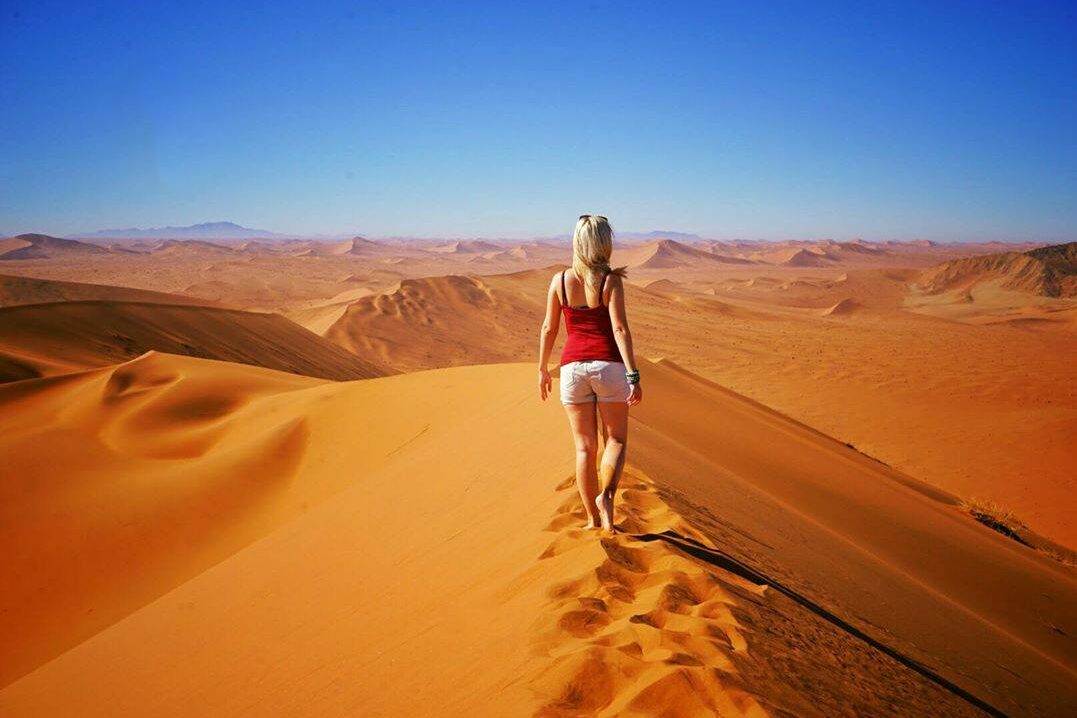
My road trip around Namibia is the best travel experience I’ve ever had.
Hands down.
I can’t even find the words to describe how fantastic my time in the country was. Namibia has everything. It’s easy to explore independently, it’s safe, it’s beautiful, the locals are lovely, the landscapes are diverse, the wildlife is exciting, and there are so. few. tourists.
I’ve got a dozen posts planned about my time in this amazing country, so brace yourself for an onslaught of information! By the end of the month, you’ll have everything you need to book a trip to this kickass country. And hopefully you’ll decide to do exactly that.
This is what it’s like to travel in Namibia.

Where is Namibia?
Let’s start off with a little bit of context. Where even is Namibia?
Namibia is a Southern African country on the west coast of the continent. It’s located above South Africa , below Angola, and to the west of Botswana.
Interestingly, Namibia is where you’ll find the world’s only quadripoint, which is defined as the place where the corners of four different countries meet. Yes, in the far north-eastern reaches of this country, Namibia nestles up against Botswana, Zambia, and Zimbabwe. There are over 150 tripoints in the world, but only one quadripoint, making this a very special place on the planet.
Unfortunately, it’s in a part of the country that few tourists choose to visit, at the eastern end of the Caprivi Strip, which is isolated from many of the main tourist activities. Somewhere that’s much easier to visit, however, is the Tropic of Capricorn! Most visitors end up driving past the iconic Tropic of Capricorn sign while driving around Namibia, and fortunately, it’s marked on Google Maps, so you won’t have to worry about missing it.
Namibia is the Perfect Introduction to Africa Travel
If you’re dreaming of travelling in Africa but have no idea where to go first, head to Namibia. It’s one of the safest and least intimidating countries I’ve travelled through.
One of my aims with my recent Africa travels has been to prove you can easily travel around much of the continent independently. So many people opt to jump on overland truck tours in this part of the world, but what I’ve found so far is that it’s really not necessary. And in Namibia you definitely don’t need to join a tour in order to visit.
With the exception of the bad roads, I found it no more difficult or dangerous to travel in than the U.S., Europe, or Australia. And when you’re traveling independently, you’re in control of your schedule and where you stay and what you do.
On top of that, the official language of Namibia is English, which makes independent travel even easier. You can ask questions, you can get directions, you don’t have to mime all the time… it’s all so easy .
Namibia also felt like the safest country in Africa I’ve been to so far. Outside of Windhoek, you really don’t need to worry about much at all. The locals are friendly and welcoming, theft is rare, and your only real concern will be how many flat tyres you’ll end up with on the seemingly-endless gravel roads.
Not only is Namibia safe and easy to travel through, but it also has just as much to offer as other countries in Africa. Head to Etosha National Park and you’ll get to drive alongside elephants, giraffes, lions, black rhinos, and more. You can hit up the Namibian desert for sand dune climbing at sunrise. There are beaches and coastlines full of shipwrecks to explore. The darkest skies in the world are in Namibia, so the Milky Way is always shining brightly above your head at night. Oh, and there’s a ghost town in the middle of the desert. Badass.
In other words: Namibia is the best!
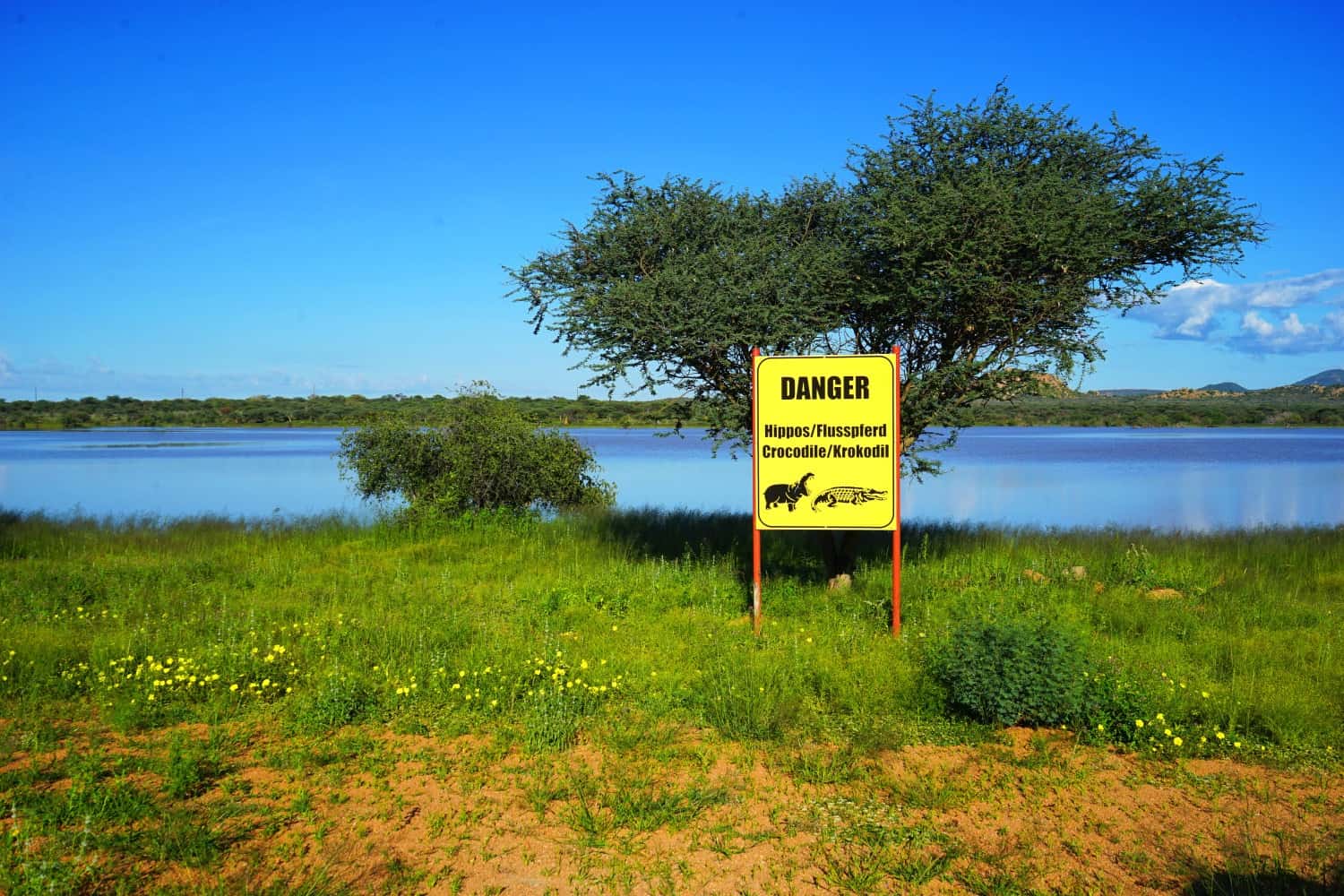
Not Many People Will Know Where You’re Going
I couldn’t believe it: after six years of travel, Namibia was the first country nobody seemed able to locate on a map. In my digital nomad community here in Portugal — so, y’know, people who have travelled full-time for many years — a surprisingly number of people had never even heard of Namibia.
I get it: it’s a country that isn’t often spoken about outside of travel blogging circles, but it was still surprising to be met with blank faces when I spoke about where I was visiting next.
The bonus of this? Hardly anybody decides to visit the country, so there are hardly any tourists around!
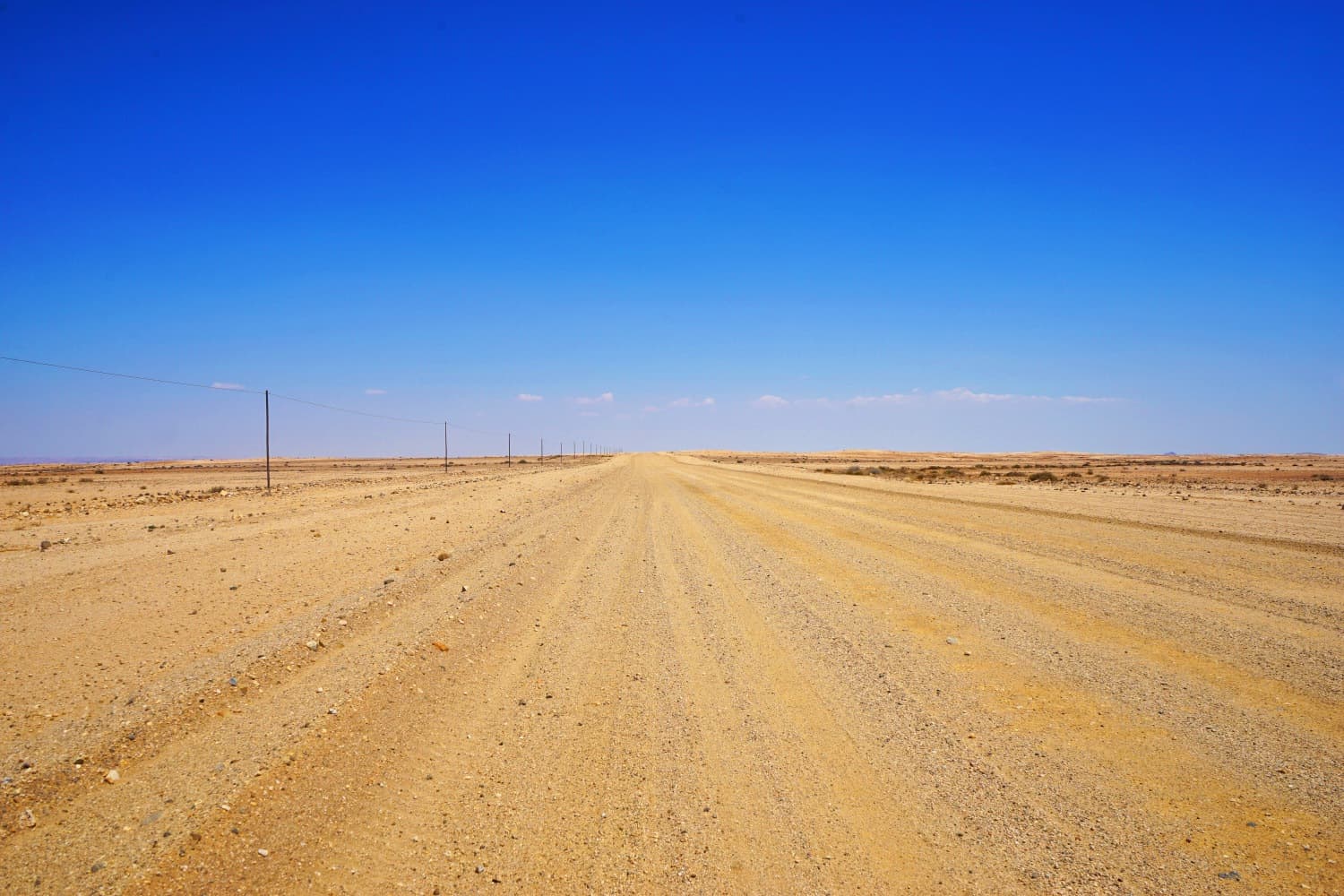
It’s Ridiculously Sparsely Populated
Namibia is the second-least-densely populated country in the world, with an average of just five people for every square mile. And it’s easy to see why: desert takes up the bulk of the country and so outside of its short rainy season, it’s a very arid place.
This was one of my favourite aspects of travelling around Namibia, though: you could drive for four hours straight and not see a single human, car, or building over that time. As an introvert with a love of wide, open spaces, I couldn’t get enough of the isolation.
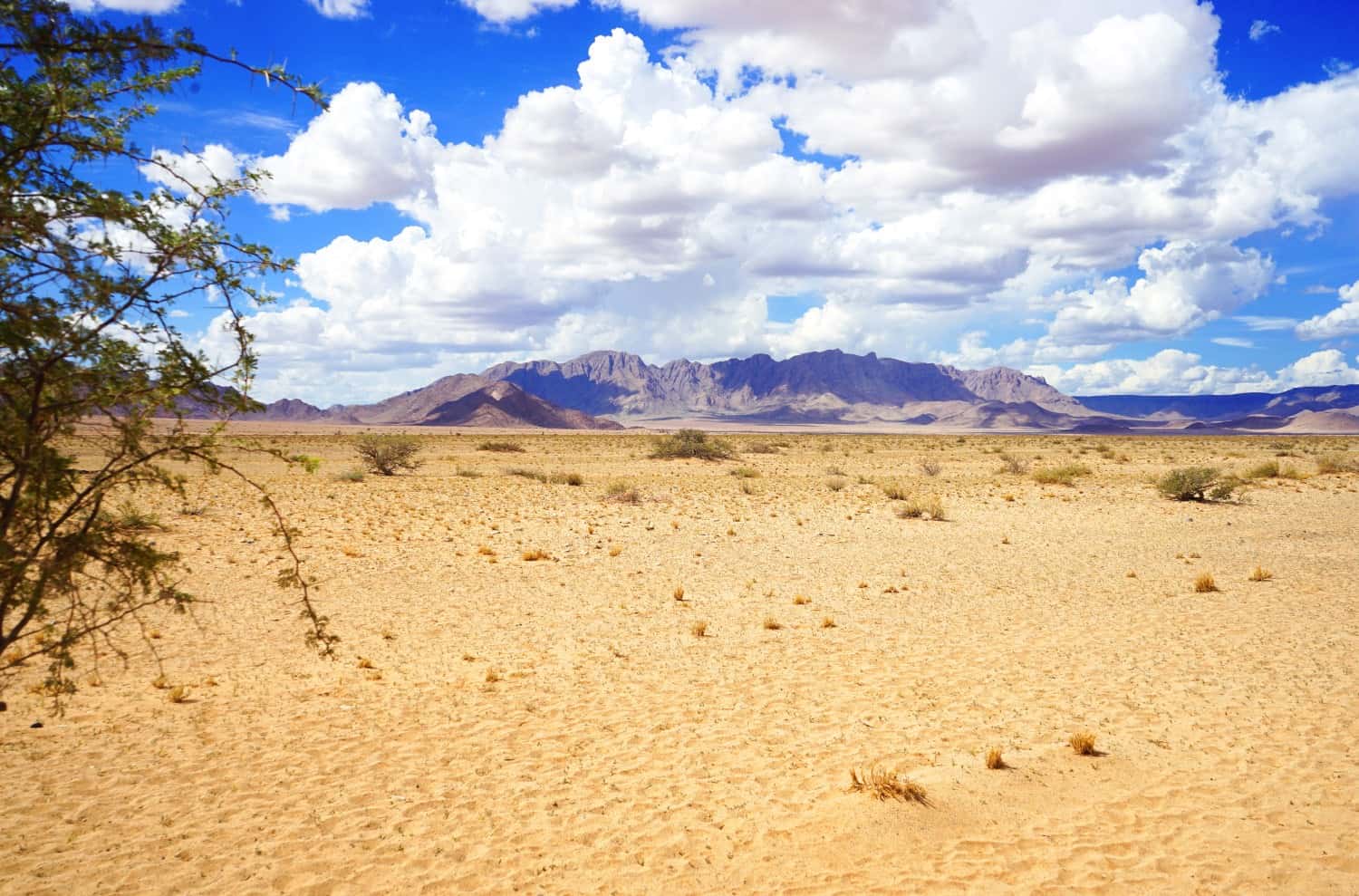
Planning Where to Stay Is… Interesting
Because the country is so sparsely populated, the majority of places you’ll stay at will be lodges that feel as though they’re in the middle of nowhere. Because they kind of are.
There aren’t many major towns and cities in the country — and honestly, the best parts of Namibia are outside of them — so that makes finding accommodation tricky. The best places to stay at are often hours from the nearest signs of civilisation and miles down a tiny gravel path.
I found booking.com best for finding places to stay. First, decide on which major destinations you want to hit in Namibia. For us, this was: Windhoek – Etosha National Park – Swakopmund – Sesriem – Luderitz – Windhoek. Most of these destinations are so far from each other that you’ll have to break up the drive into two days.
Next, on Booking, search for all hotels in Namibia, and once you’re on the search page, click on view on map. Once you’ve got a map view of every hotel listing in Namibia, zoom in on the route you’re planning to take and see which lodges pop up close to the midpoint between two distances. We did this for almost everywhere we stayed in Namibia and found some incredible lodges as a result. In fact, some of the highlights from my time in the country were getting to stay outside of the main tourist trail.
And if you can’t find anything suitable or affordable on the drive, just googling “where to stay between Swakopmund and Sesriem”, for example, will bring up a ton of forum threads with recommendations from other people. Not everywhere is listed online, so there were a few places we had to book through email.
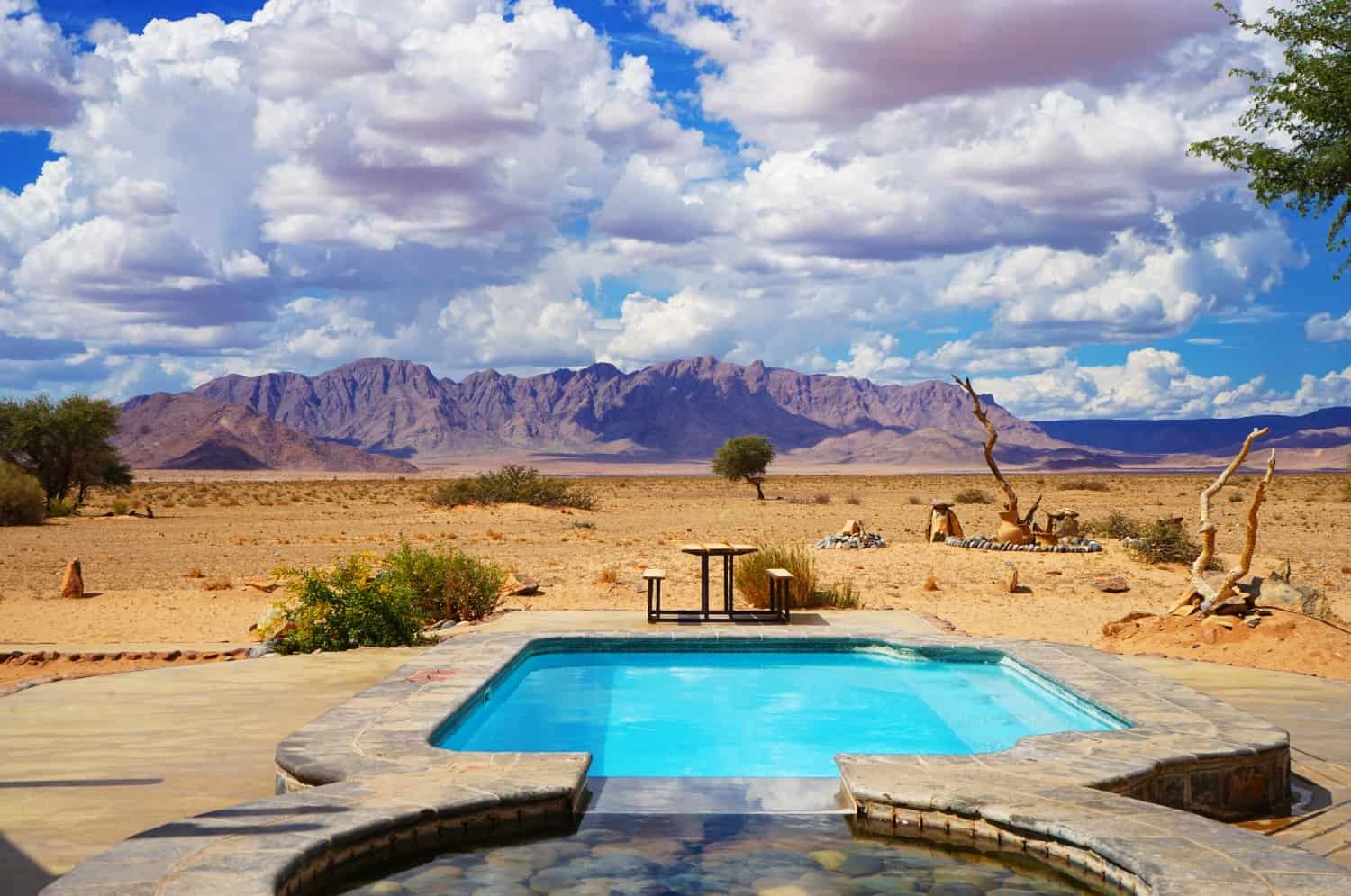
Frustratingly, It’s Tough to Visit on a Budget
In Namibia you have two options: expensive or camping.
I’m all about that budget travel life, but in Namibia I had to give up my aim of spending $50 a night on accommodation and quadruple it for much of our trip. Yep, almost every lodge we stayed at in Namibia was well over $100 a night, and we were nearly always booking the cheapest option we could find. And we were visiting in low season, where accommodation prices are around half what they’d be in high season!
Unfortunately, if you want to save as much money as possible on your trip, your only real option in Namibia is to camp. Most lodges will offer a camping option for around $30 a night, so if you’ve got your own gear, this is an easy way to save money on accommodation.
The only exceptions to the crazy prices are the cities: Windhoek has cheaper options ($50 a night), and so did Swakopmund ($40 a night) and Luderitz ($50 a night).
Everything else wasn’t too bad when it came to price. Our rental car — a Toyota Corolla — had us up for $30-a-day, which is pretty standard for most countries around the world. Activities and entrance fees (around $6) were also affordable. Food could get a little pricey at the camps and lodges, which made sense because they were so isolated, but nothing was over-the-top extreme. We’d usually pay around $10-15 for dinner each night.
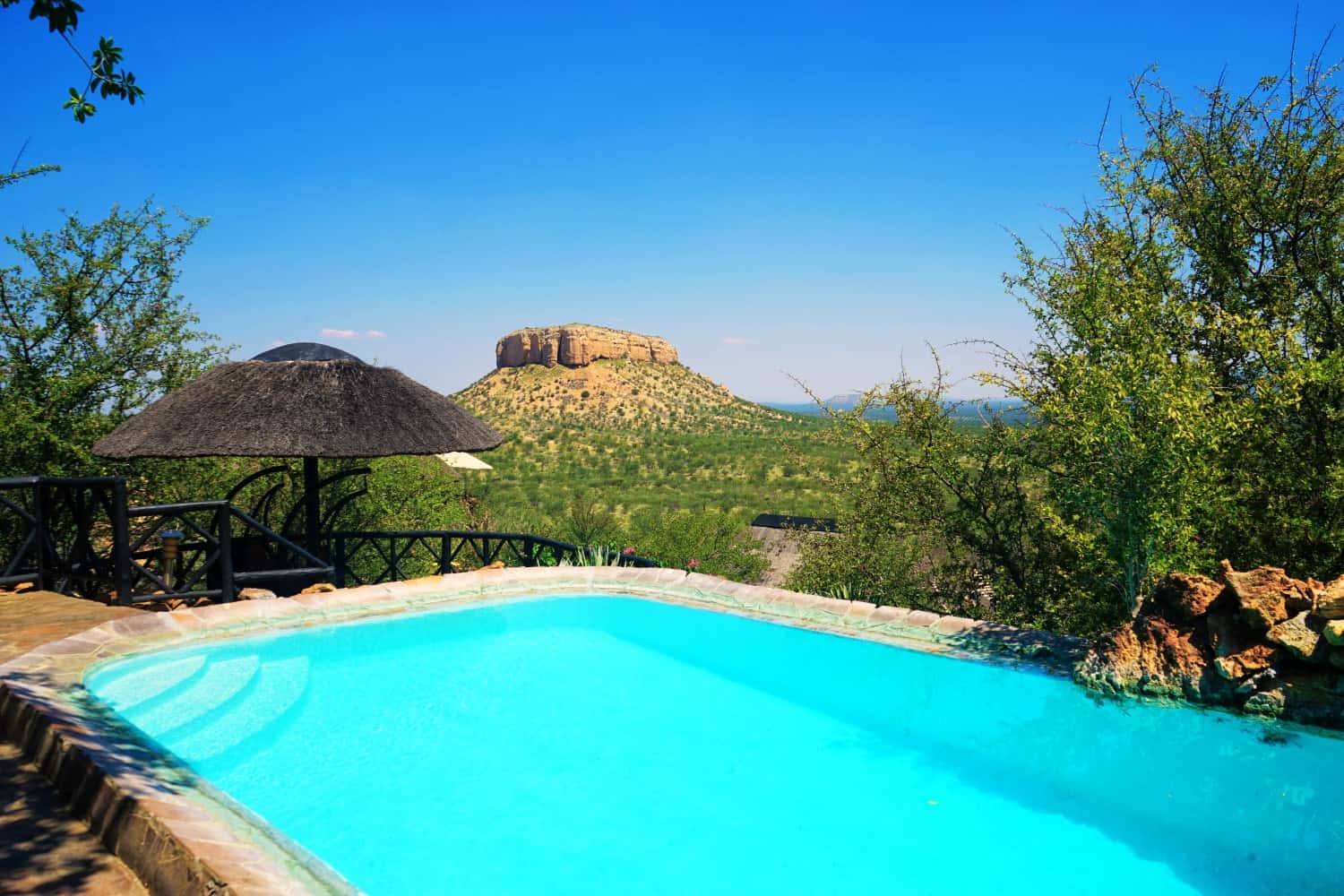
But the Lodges are Amazing
Some of the best hotels I’ve ever stayed in are in Namibia. And while you’ll pay a lot for them, they’re worth every penny.
At Ovita Wildlife Restcamp , we fell asleep listening to hippos in the lake outside our room. At Vingerklip Lodge (pictured above), we ate dinner on a towering cliff top, looking over Namibia’s version of Monument Valley. At Sesriem Desert Camp (pictured above Vingerklip Lodge), we slept in luxury tents in the desert with wild oryx roaming outside.
I loved every single place we stayed in in Namibia, and even though they were ridiculously expensive, it felt as though we were still receiving fantastic value for money.
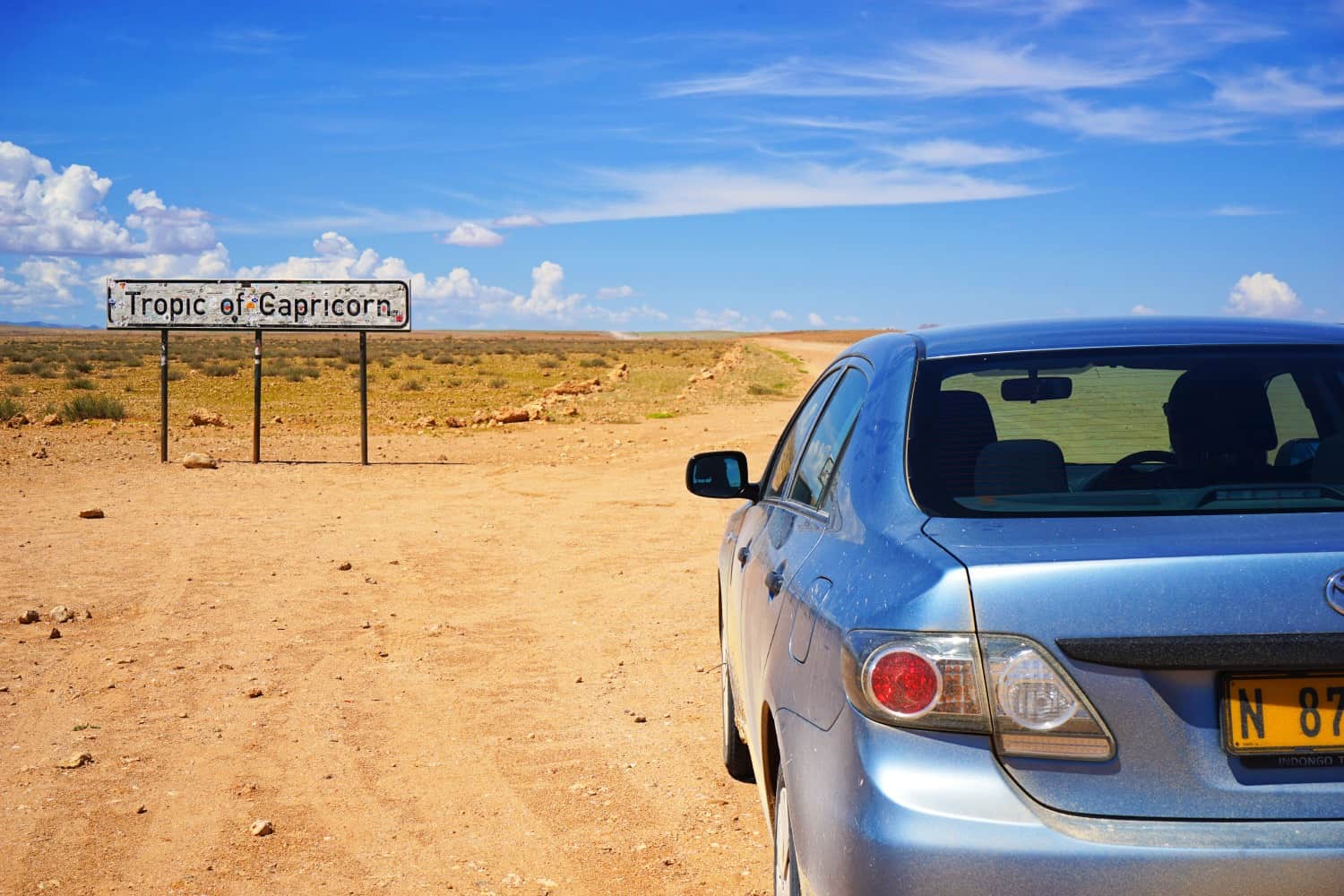
You Will Need Your Own Transport
Public transport doesn’t really exist in Namibia, so if you’re not going to take a tour, you’ll most likely need to hire a car. As for what type of car, it depends a lot on the time of year you’ll be visiting and how confident you are on gravel roads.
My Kiwi boyfriend grew up racing falling-apart cars on gravel roads in New Zealand, so he had the driving skills of a Namibian and we were happy opting for a tiny Toyota Corolla to make the trip for us. Guesthouse owners were always shocked to see us rocking up in it, but honestly, we had next to no problems with it. If you’ve got the cash, opting for a two wheel drive with higher ground clearance would be a smart idea, as part of the bottom of our car fell off on our second day of driving, thanks to all the rocks that had been flicked up into the undercarriage.
People advise to go with a 4×4, and especially if you’ll be visiting in the rainy season, but we decided against it for several reasons. First, it’s over double the price for a 4×4 (around $100 a day), second, being so high up makes the car easier to roll, and third, um, did I mention it’s expensive?
If you can’t drive? You won’t be able to visit Namibia without taking a tour or hiring a driver. You could take a bus between major destinations, but I believe you’d miss out on a lot of the wonderful lodges that make travelling in Namibia so wonderful. There are also reports of travellers rocking up in a hostel, getting together with a group of travellers, and car-sharing their way around the country, so this could be an option if you’re willing to take the risk of potentially finding nobody to travel with.
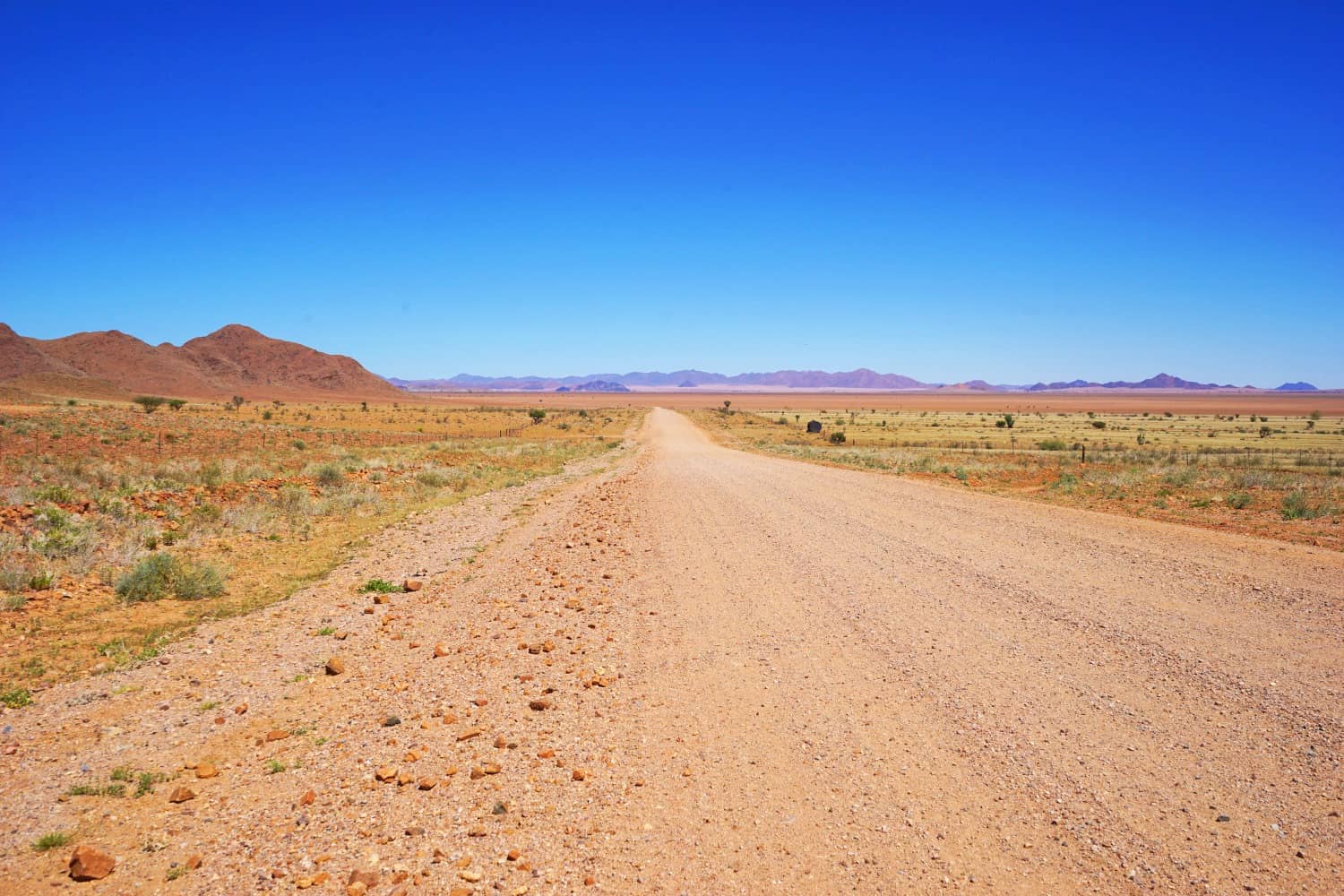
The Roads are So Bad
We drove 4000 kilometers in Namibia and probably only several hundred of them were sealed.
Yes, in Namibia, get used to urging your car over gravel, sand, rocks, and more. Because of this, travel days are long and bumpy — we rarely drove for less than six hours each day, and even listening to podcasts was a struggle over the crunching noises of driving over gravel while rocks pinged into our car
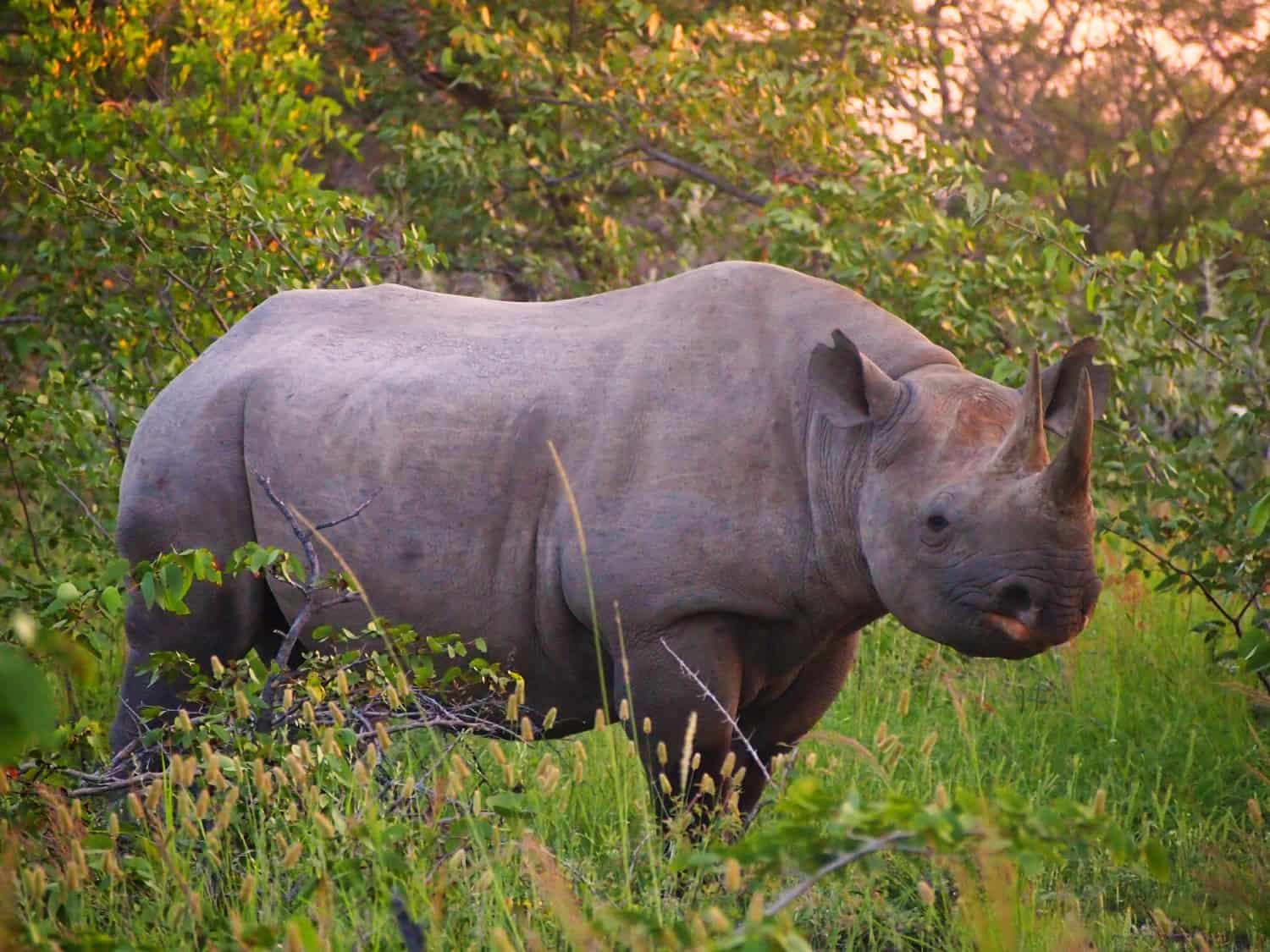
Get Yourself a SIM Card, But Expect to Rarely Use It
Getting connected is tough in Namibia, so if you work online like I do, resolve to spend most of your time on vacation.
Wi-Fi was sometimes around, was always slow, and often expensive. It’s worth getting a SIM card, though, as although we rarely got more than an EDGE signal, leaving our phones on while we were driving around usually meant we’d pick up a signal here and there to download emails.
We picked up a SIM card at Windhoek Airport upon arrival and it was super simple to do. The SIM card costs 50 US cents and 1 GB of data is a whopping $2.50. Too Many Adapters has a comprehensive guide for buying a SIM card in Namibia if you need any extra information. When it’s that cheap, there’s no reason not to get one.
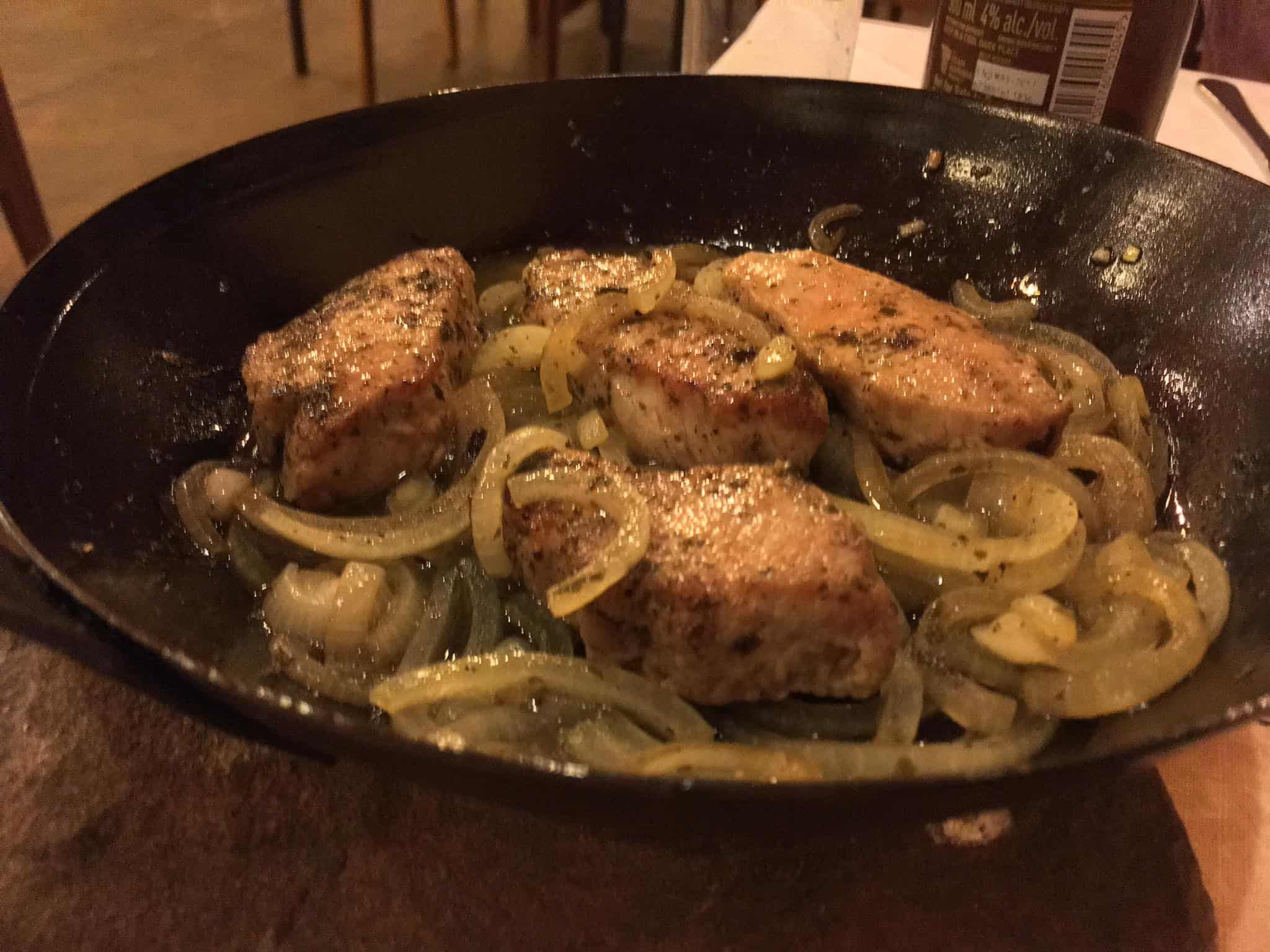
You’ll Get to Try Some Interesting Game Meat
One of my favourite aspects of eating in Namibia was getting to try so many of the delicious game meats on offer. The biggest surprise was warthog, which was delicious, but I also loved kudu, impala, oryx, zebra, and more. Most of the lodges will have some kind of unusual game meat on offer each evening, so it’ll be easy to access and you’ll soon grow used to it.
If you’re vegetarian, you’ll most likely struggle to eat super well in Namibia. Everything was very meat based at the lodges although bizarrely, Greek salads were available in basically every single restaurant, so you won’t have to go hungry. Just prepare yourself for a hell of a lot of feta cheese!
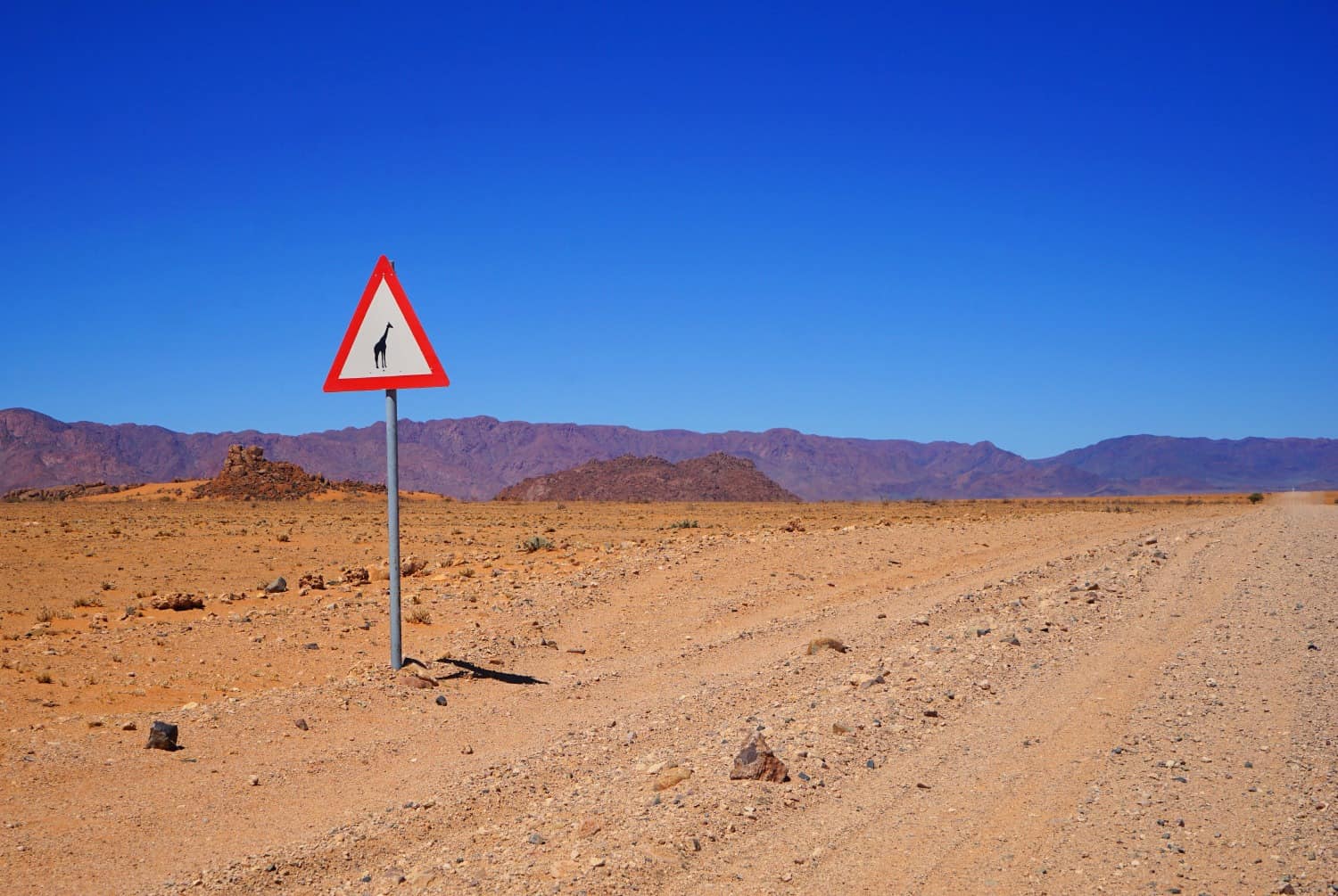
Namibia Has the Best Road Signs Ever
One of the highlights from our time in Namibia was the kickass road signs we came across while driving. The giraffe one above was one of my favourites. In addition to that, we saw signs for zebras, elephants, warthogs, and more. And even better: we actually saw some of those animals wandering around in the wild! There’s nothing quite like seeing a desert-adapted giraffe wandering through the sand.
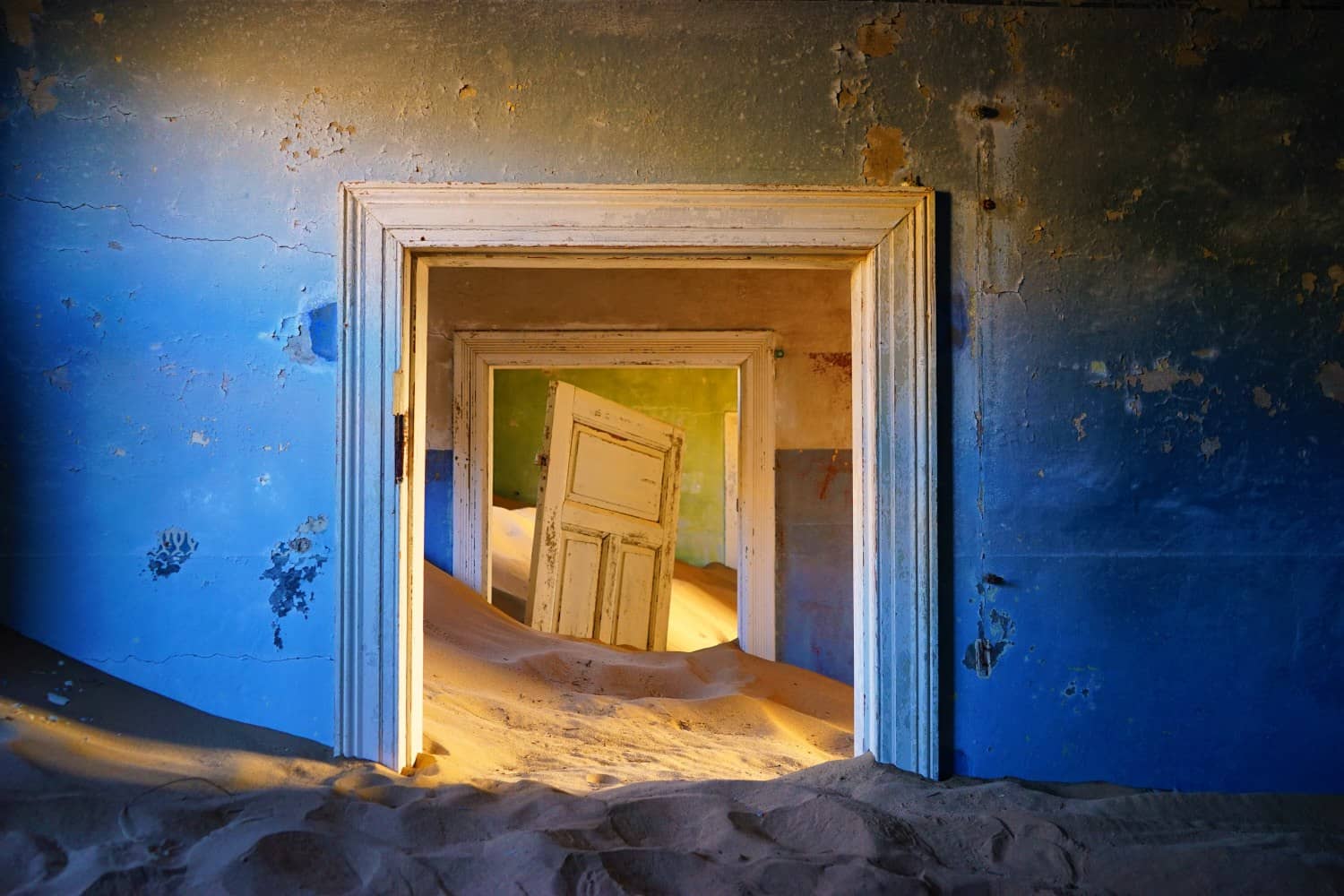
The Bradt Namibia Guide is Invaluable
If you’re planning a trip to Namibia, you need this guidebook .
Not only was it essential for planning our trip, but we used it on an hourly basis while we were in country. When it comes to Africa, Bradt guidebooks are king, so don’t even consider picking up a Lonely Planet for this part of the world; almost all of them have terrible reviews as well as outdated and too-condensed information.
Because you’ll be unlikely to have data coverage while you’re driving, and sometime even in lodges, the guidebook made our trip so much less stressful. When we wanted to figure out which animal we’d just spotted by the side of the road, the wildlife section had a photo to help us out; when we decided to stop for a lunch break in a tiny village, we could look up if there was anywhere to eat, and if so, which place was best; when we were planning our driving for the day, we could look up route recommendations and find out which attractions we might want to stop at along the way.
I don’t often recommend using guidebooks (I think I’ve only done it twice before!) because I believe you can get a lot of the information online for free, but in Namibia, this guidebook definitely helps. We struggled to find detailed information about the country both before we arrived and while we were there, so our Bradt book was 100% invaluable.
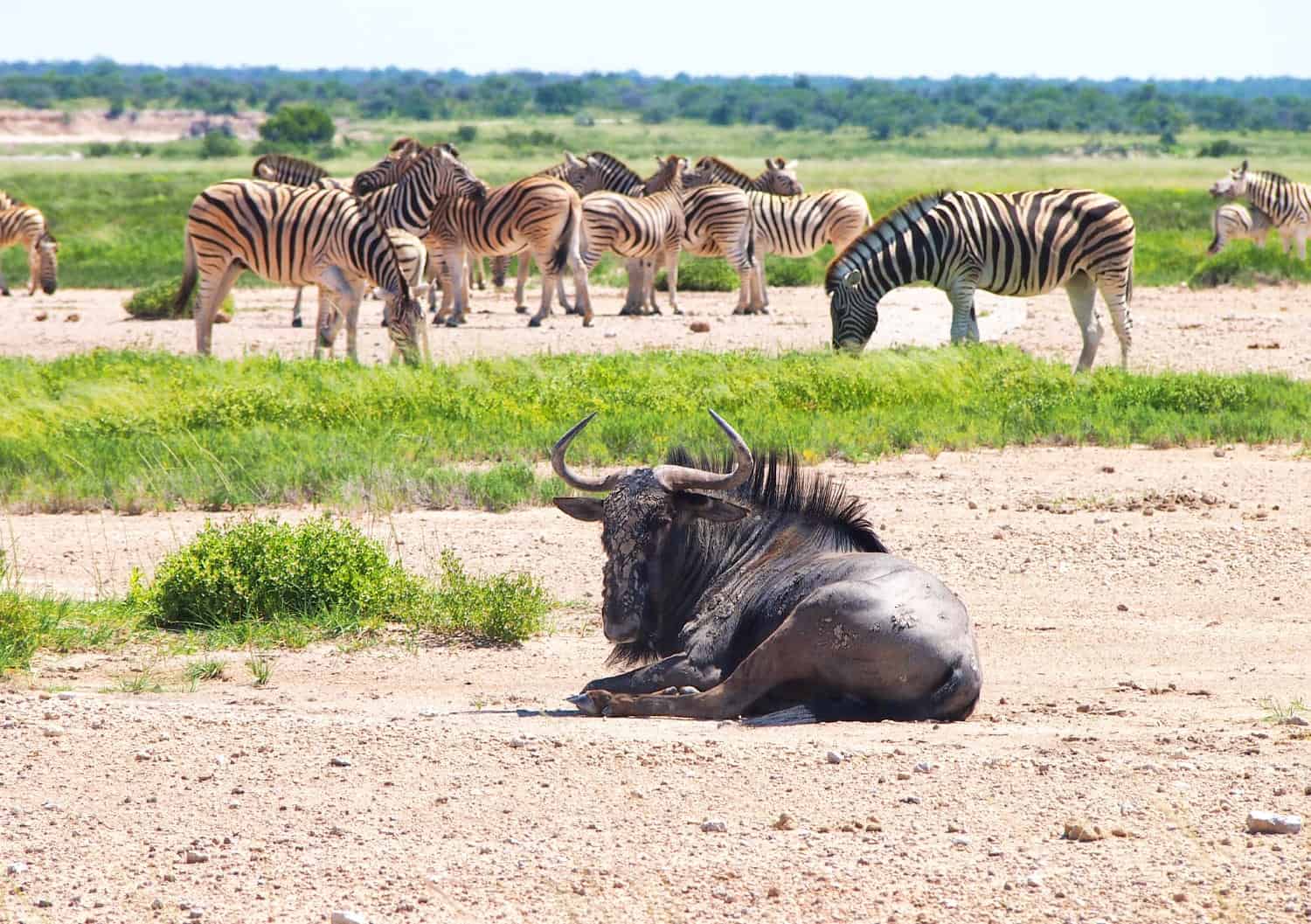
Two Weeks is the Perfect Amount of Time to Spend in the Country
I spent just under two weeks in Namibia, and feel as though I saw almost all of the highlights. If I’d had three weeks, I would have spent time at Fish River Canyon in the south, a few extra days in Damaraland, and some time exploring the Caprivi Strip in the northeast . Still, I feel as though two weeks is a good amount of time to dedicate to the country, which is refreshing as most places I visit have me feeling as though I need to explore for a minimum of three months just to start scratching at the surface.
I wanted to share my two-week itinerary here, because I feel as though I got it pretty close to perfect.
Day 1: Landed in Windhoek, picked up our rental car, and drove straight to peaceful Ovita Wildlife Restcamp . You can read about my first day in Namibia in my article, The Perfect First Day in Namibia . Day 2: Time for wildlife! We drove north to Etosha National Park and stayed within the park at Halali . We spent the afternoon sitting at the camp’s waterhole to see if any animals emerged. You can read about my experience in Etosha National Park in the dry season: Desperately Seeking Elephants at Etosha National Park . Day 3: For our first full day at Etosha, we drove around the eastern region of the park for almost 12 hours. We saw dozens of giraffes, zebras, and a rare black rhino, then spent the night back at Halali. It was magical. Day 4: On day four, we opted to drive around the central parts of Etosha for the entirety of daylight hours, then switched up our accommodation to spend the night at Okaukuejo . Day 5: For our final morning in Etosha, we decided to explore the western region of the park, then at lunchtime, drove to beautiful Vingerklip Lodge to spend the night. You can read about how incredible Vingerklip was in my article, Finding Paradise in Vingerklip: Africa’s Monument Valley . Day 6: Day 6 brought a long drive to Swakopmund, where we spent much of the day on terrible roads. Still, getting to drive part of the Skeleton Coast was amazing, and we even got to see a shipwreck stranded off the coast. We spent the night in an Airbnb apartment. Day 7: For day 7, we took a day trip out to nearby to Walvis Bay to see its seal colony, which is one of the largest in the world. You can read about this wonderful experience in the article, Seals, Swakopmund, and the Skeleton Coast . Again, we spent the night in our Airbnb apartment. Day 8: We spent this day relaxing and exploring Swakopmund. You could use this day to get your adventure on if you wanted, as Swakopmund is the adventure capital of the world. You could try your hand at quad biking on the nearby sand dunes , for example. Once more, we spent the night in an Airbnb apartment. Day 9: The following day, we drove to Sesriem and spent our afternoon climbing Dune 45. I highly recommend doing this, as we practically had the entire park all to ourselves. We slept at Sesriem Desert Camp , which was magnificent. Day 10: We got up at sunrise to enter the park, climb Big Daddy sand dune, and explore Deadvlei. This day was spectacular and you can read about the experience in the article, Climbing Big Daddy: An African Travel Highlight . That afternoon, we drove south to Betta Camp to spend the night. Day 11: The following morning, we drove down to Luderitz. We spent the afternoon exploring this adorable town and spotting pelicans as we drove around the areas just outside of Luderitz. It was a fairly relaxed day after all of the movement, and we spent the night at Kairos B&B . Day 12: We saved the best for last, because for day 12, we drove to Kolmanskop at sunrise and and had the entire place to ourselves. Kolmanskop is an old mining town that has since been abandoned and is now being taken over by the desert. It was incredible and we spent a full three hours taking photos. I wrote about it in-depth in the article, Exploring Kolmanskop: Namibia’s Ghost Town in the Desert . In the afternoon, we drove to Maltahohe Hotel to break up the long journey back to Windhoek. Day 13: Final day! Sad face. We spent this day driving from Maltahohe to Windhoek and left Namibia in awe of how much the country has to offer.
This was one of the best trips of my life and I highly recommend putting together a similar itinerary if you’re planning a trip to Namibia.
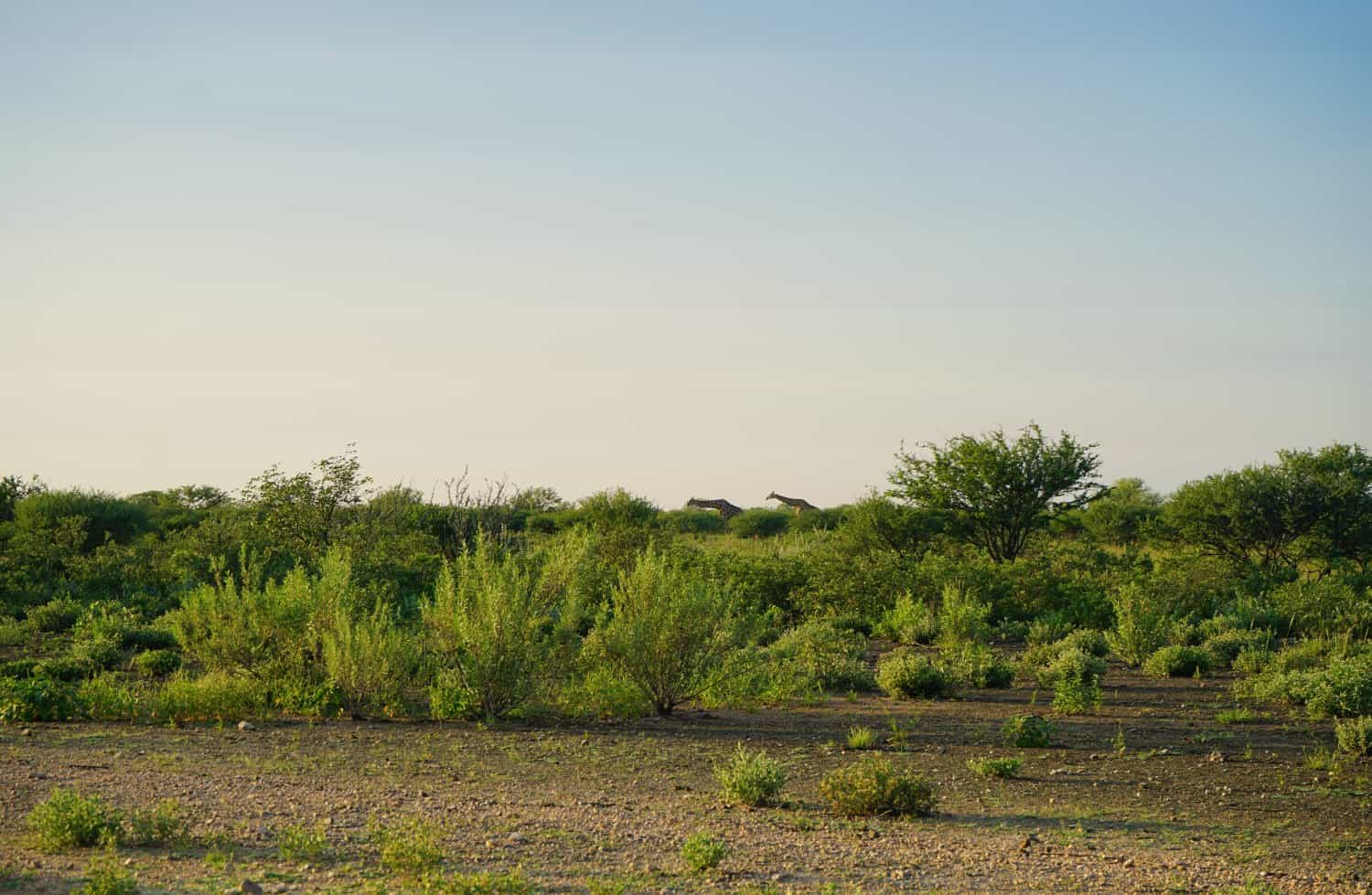
Yeah, You Should Definitely Get a Zoom Lens
The biggest regret of my trip? Not splashing out on a zoom lens for my camera and then getting uniformly awful photos in Etosha.
I ventured into Namibia with my Sony 28-70mm lens and while it was absolutely fantastic for landscape photos, it was nowhere near good enough for the wildlife. Had my boyfriend not packed his 80-300mm lens, I would have had close to zero photos of any animals. Because we were in Namibia in the rainy season (more on that below), the animals at Etosha were hiding in dense grass and hard to spot, so it was rare for us to get up close to them.
If you’re going to Namibia and will be hitting up Etosha while you’re there, make sure you’ve got a decent zoom lens for the trip.
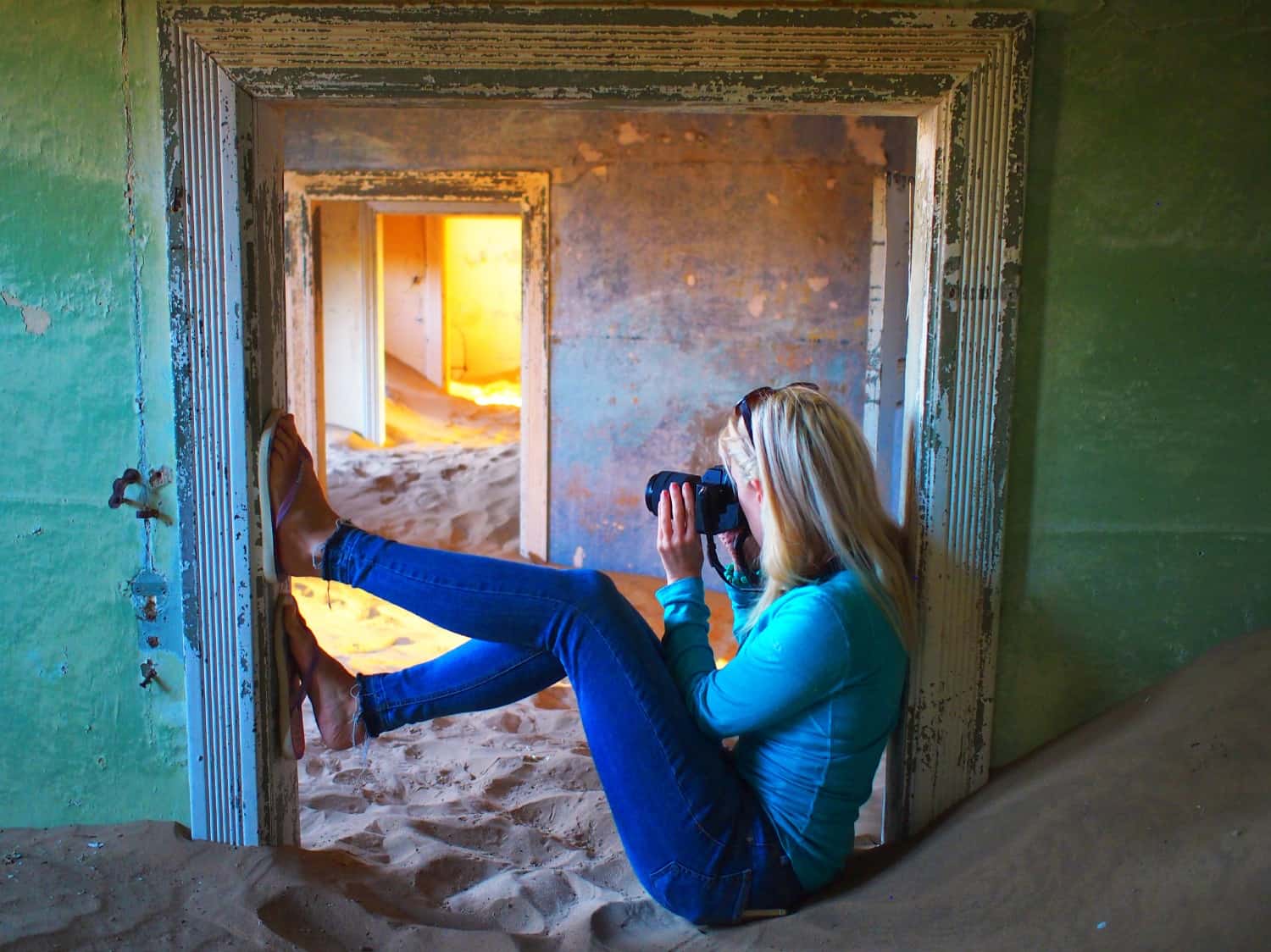
Get Yourself Some Excellent Travel Insurance
You know I’ll always yell at you if you’re dumb enough to skip out on travel insurance , but in Namibia, it’s an essential.
Why? Because Namibia has the highest car-accident death rate in the world, with 45 people killed on the road for every 100,000 citizens. On top of that, malaria hangs out in the northern parts of the country, and there are several other awful-sounding tropical diseases you definitely don’t want to contract.
Travel insurance will cover you if your flight is cancelled and you need to book a new one, if your luggage gets lost and you need to replace your belongings, if you suddenly get struck down by appendicitis and have to be hospitalised, or discover a family member has died and you need to get home immediately. If you fall seriously ill, your insurance will cover the costs to fly you home to receive medical treatment.
I use SafetyWing as my travel insurance provider, and recommend them for trips to Namibia. Firstly, they’re one of the few companies out there who will actually cover you if you contract COVID-19. On top of that, they provide worldwide coverage, don’t require you to have a return ticket, and even allow you to buy coverage after you’ve left home. If you’re on a long-term trip, you can pay monthly instead of up-front, and can cancel at any time. Finally, they’re way cheaper than the competition, and have a clear, easy-to-understand pricing structure, which is always appreciated.
With SafetyWing, you’ll pay $1.50 a day for travel insurance.
On top of standard travel insurance, you’ll also want to make sure you get some of the best car insurance money can buy. Most tourists get a flat tyre in Namibia at some point at a minimum (we got one roughly an hour from the airport on our final day) and replacing them/repairing the rental car can be pricey. We rented our car through rentalcars.com , bought their insurance, and they refunded us for all of our car disaster expenses in Namibia.
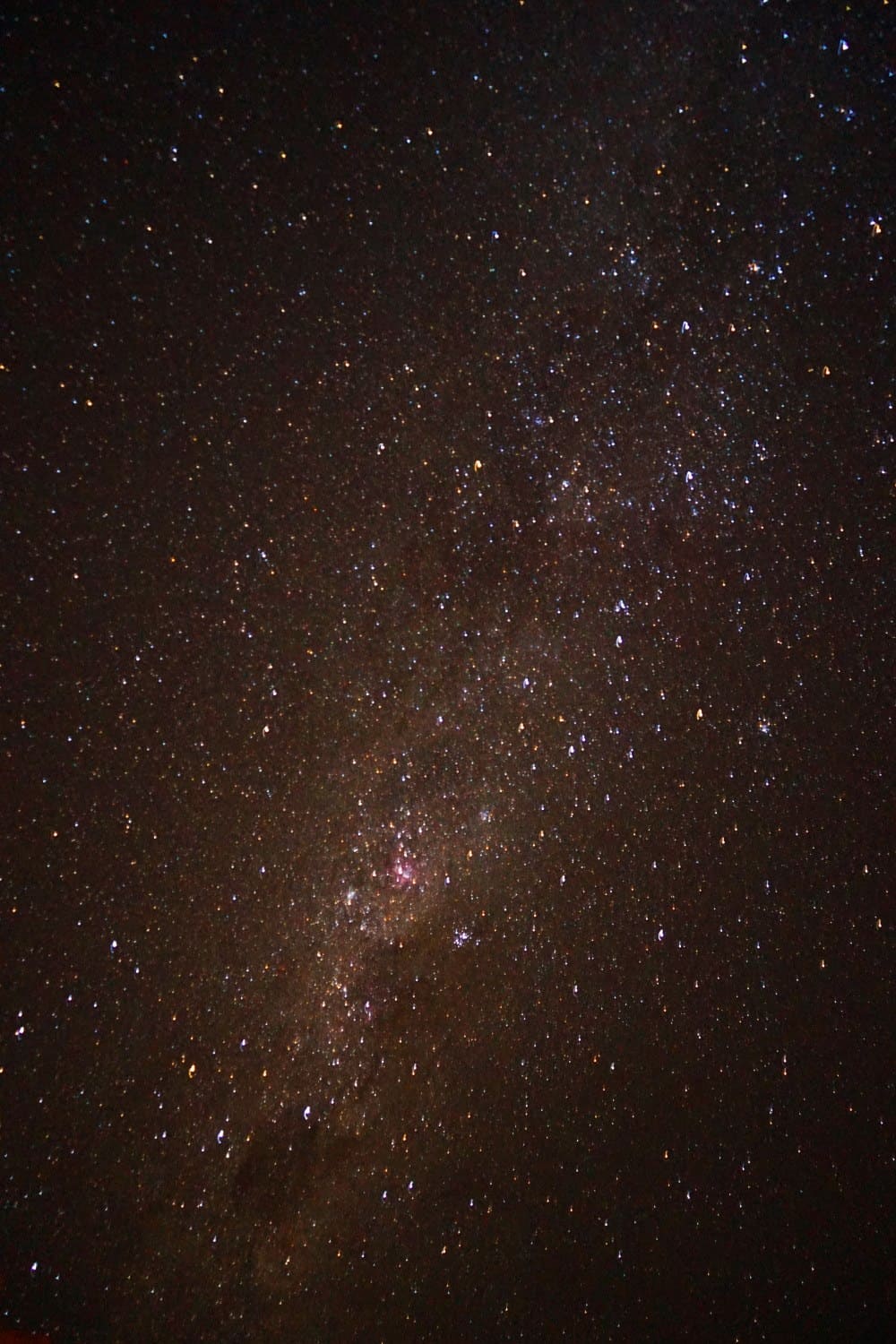
You’ll Never Have Seen This Many Stars Before
Namibia is home to some of the darkest skies in the world , and I couldn’t believe how magical the night sky was. With the exception of the cities we stayed in, we fell asleep every night with the Milky Way twinkling above our heads. And with the lack of light pollution in the country, you didn’t even need to wait for your eyes to adjust.
If you’re all about stars, this is one destination not to miss.
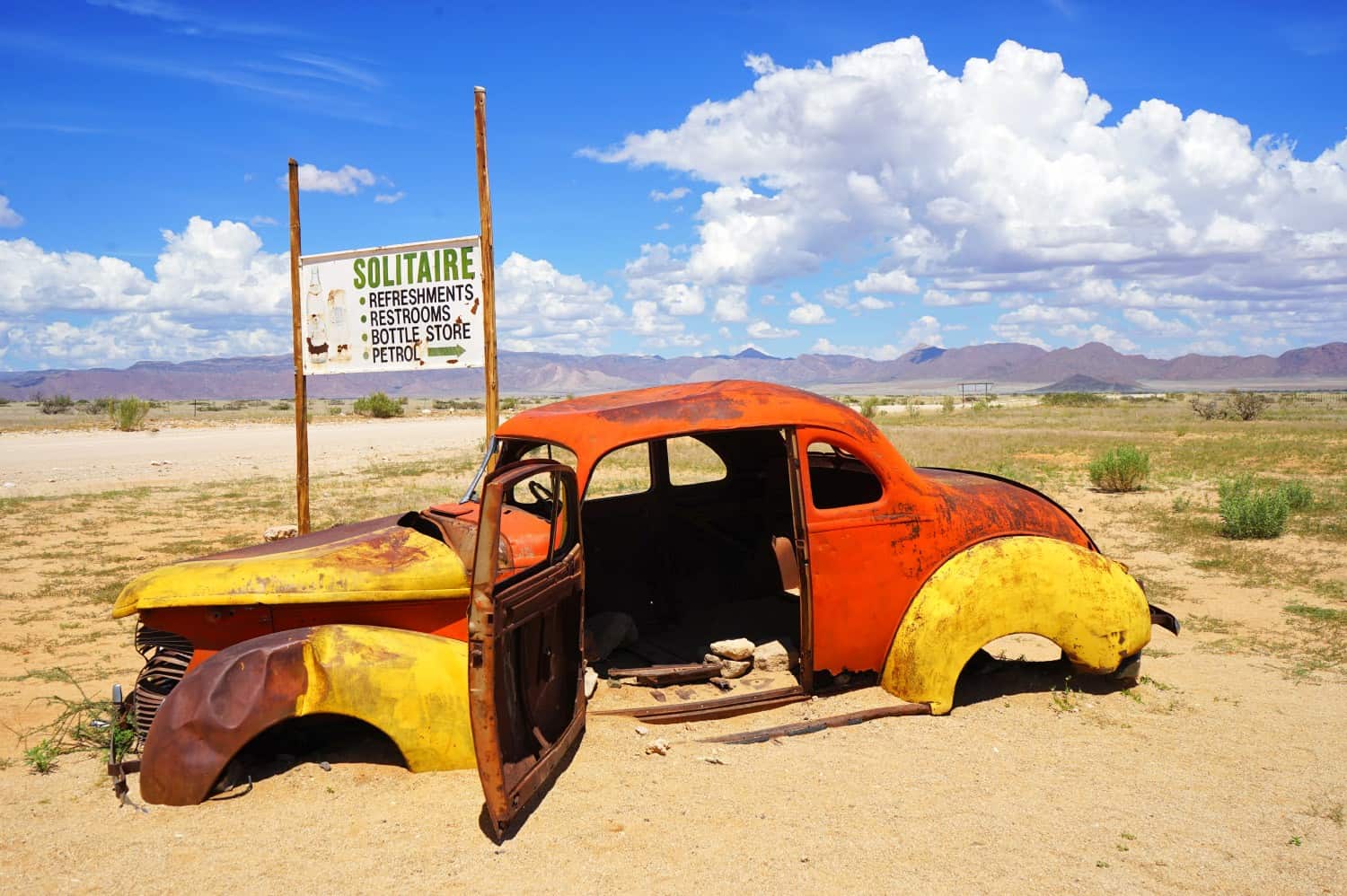
I Loved Visiting During the Low Season
Well, low-ish season. We hit up Namibia in March, which is typically the final month of the rainy season.
We experienced just one hour of rain and the rest of our trip was full of gloriously blue skies. There were fewer tourists, prices for accommodation were almost half what they’d be in high season, and the weather wasn’t bad at all. I highly recommend considering a shoulder-season visit because of this.
Surely there has to be a downside? Yep. We struggled to see anything at Etosha. There are thirty-odd waterholes inside the park and during the dry season, they usually look like this:
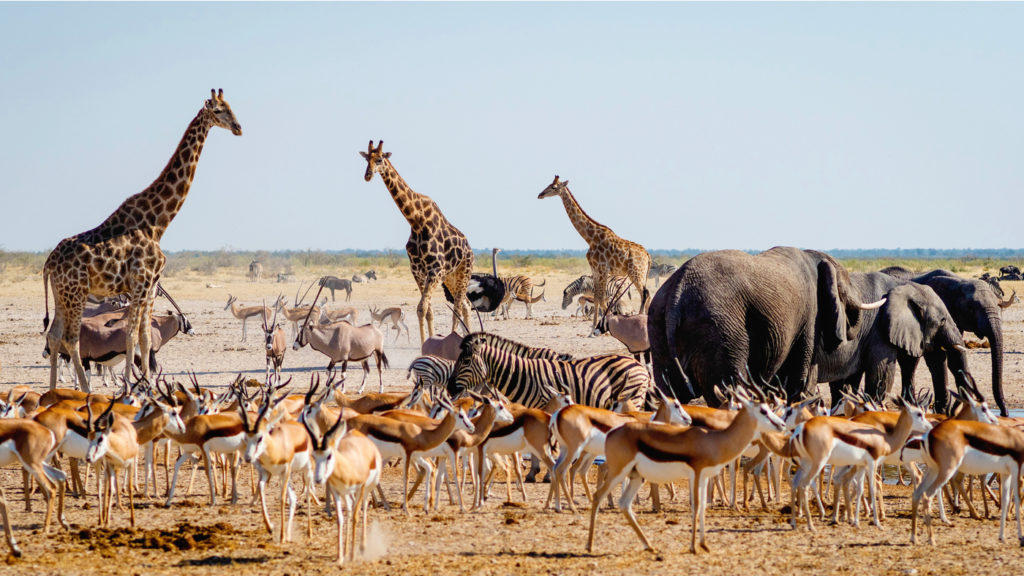
Well, over three whole days of 12-hour drives, Dave and I saw literally nothing at any of the waterholes. Our waterholes looked like this:
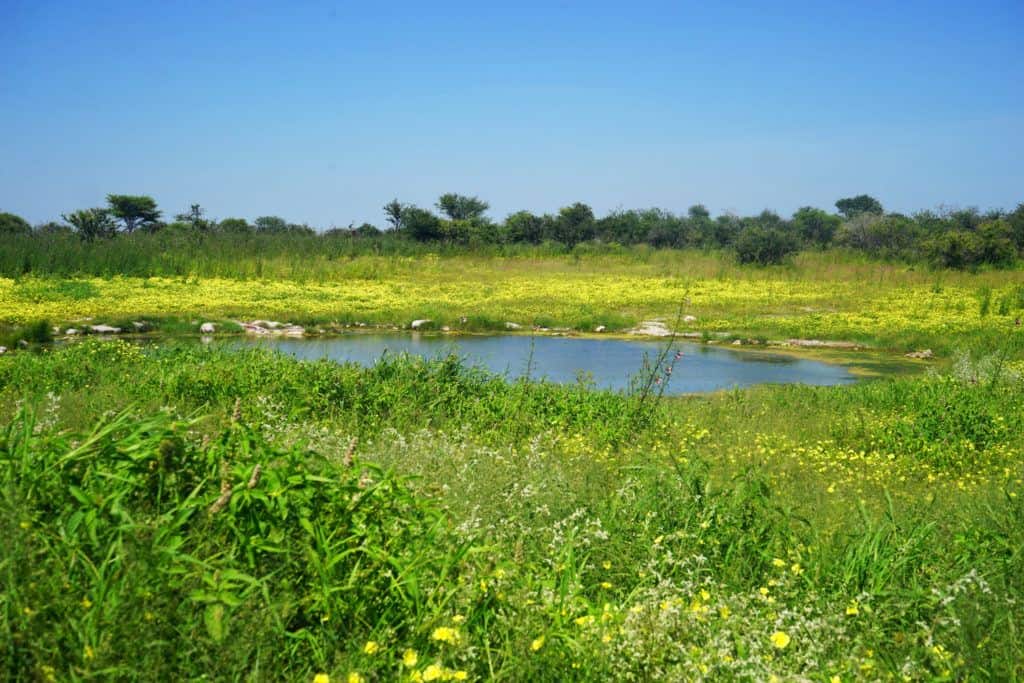
We didn’t even see a bird.
The problem is: during the rainy season, there’s no reason for the animals to go to the waterholes because there’s water everywhere. And being on the tail end of that meant that instead we had to drive around in search of animals in the bushes. We didn’t come up empty handed, though: while we didn’t see a single elephant, we managed to see three black rhinos (super rare) and countless giraffes (my favourite animal).
It was funny, though, to have seen so many spectacular photos of Etosha before arriving, then to end up spending 90% of our time driving from deserted waterhole to deserted waterhole.
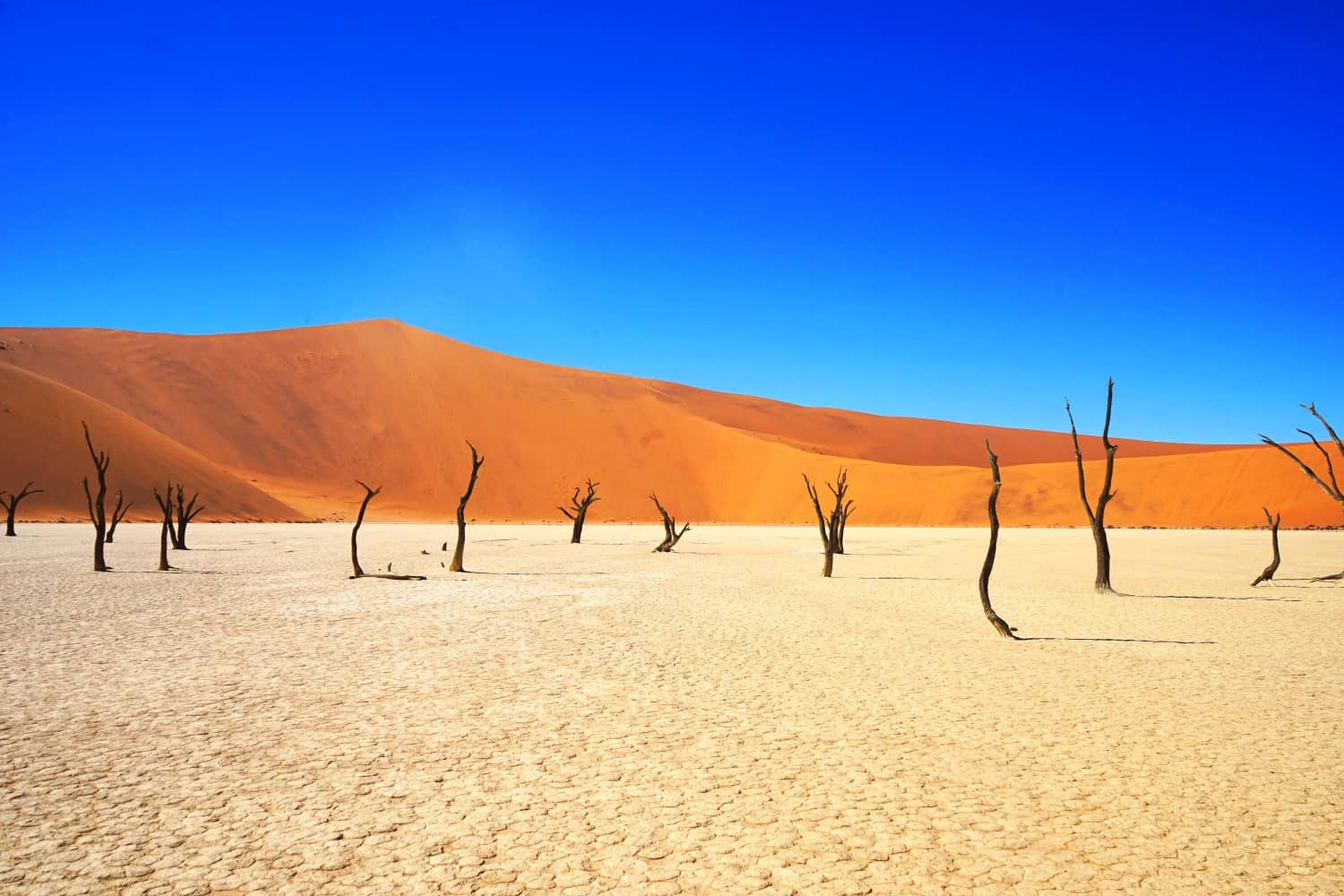
Have I Convinced You to Visit Yet?
I’m not exaggerating when I say travelling in Namibia is one of the best experiences of my life, and I can’t wait to start sharing every incredible minute of my time there. Next up: a detailed itinerary guide followed by dozens of stories to convince you to add Namibia to your bucket list! :-)
Have you been to Namibia before? Would you like to visit?
Related Articles on Namibia 💰 The Cost of Travel in Namibia: My Detailed Budget Breakdown 🦛 The Perfect First Day in Namibia 🐘 Desperately Seeking Elephants in Etosha National Park 🏜 Finding Paradise in Vingerklip: Africa’s Monument Valley 🦭 Seals, Swakopmund, and the Skeleton Coast 🥾 Climbing Big Daddy: An African Travel Highlight 🏚 Exploring Kolmanskop: Namibia’s Ghost Town in the Desert
Lauren Juliff
Lauren Juliff is a published author and travel expert who founded Never Ending Footsteps in 2011. She has spent over 12 years travelling the world, sharing in-depth advice from more than 100 countries across six continents. Lauren's travel advice has been featured in publications like the BBC, Wall Street Journal, USA Today, and Cosmopolitan, and her work is read by 200,000 readers each month. Her travel memoir can be found in bookstores across the planet.
Related Posts

The Cost of Travel in Mauritius: My Detailed Budget Breakdown

How to Spend One Week in Mauritius: An Itinerary for First-Time Visitors

What’s it Like to Travel in Liechtenstein?
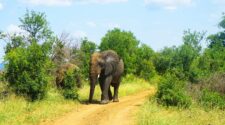
Why You Need to Take a Game Drive in Swaziland/eSwatini
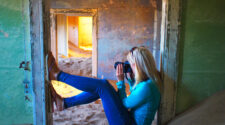
Exploring Kolmanskop: Namibia’s Ghost Town in the Desert
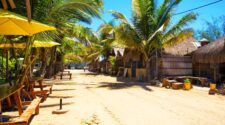
Introducing Tofo: My African Beach Paradise
100 comments.
I have never heard a bad thing about Namibia, and though we haven’t hit Sub-Saharan Africa, it would definitely be atop our list – maybe alongside Botswana? And on top of all you’ve listed, I’ve also heard that they have some decent German beer there since it was a German colony for a while. Any truth to that rumor?
There was *amazing* beer in Namibia! I’ve heard Botswana is pretty expensive and really tough to visit independently, but it’s very high on my list nonetheless. I know you guys would definitely love Namibia though!
Windhoek Lager (best beer in Africa)
Have you convinced me? Actually you have, I would have never thought of visiting there but it looks super amazing and peaceful! It sort of reminds me of Arizona. It sounds like heaven compared to NYC where I am currently at!
-Rachel @ Backcountry Petite
Score! I actually commented several times to Dave that I felt as though we were driving through the U.S. Southwest a lot of the time.
Great post, Lauren! I love all your pictures – especially the one of the night sky and the doors with the sand. It looks SO different than the places I’ve visited in Africa (Uganda and Zanzibar) that I’m very intrigued.
I think you’d love Namibia, Ashley! It’s very different to the other African countries I’ve been to, as well — so arid and empty!
Wow your pictures are absolutely stunning! Namibia has been calling my name lately but as you said it’s so darn expensive. Hopefully one of these days I’ll save up enough to see it. Did you find the food expensive even at local restaurants?
The problem was there often wasn’t any local restaurants. You’ll stay at lodges where the nearest town is several hours away, so you usually have to eat where you’re staying. In Swakopmund and Luderitz, food was slightly cheaper at around $8-10 per meal.
Wow Namibia looks wonderful! Thanks for writing this complete guide. Good to know it is safe. x
It really is the perfect introduction to travel in Africa :-)
Yep! I’m convinced! All I knew of Namibia was the rockin’ sand dunes. But with all this extra awesomeness (aside from the lodging prices) sound right up my alley! What city do you fly into?
I’ve heard of Namibia before, I’m surprised so many others haven’t. It looks wonderful! You have 100% convinced me!
I was there in march and I loved it. I highly recommend it to every one. It’s very safe!
Best regards!
Glad to hear you enjoyed it as well, Rui! :-)
You have definitely convinced me to go to Namibia. I had never thought of it before, but I think I will have to look into a bit now. Look forward to reading more posts about your trip.
I’m so happy to hear that! It’s definitely worth the visit :-)
I enjoyed the read! Amazing photos. Thanks for the tips <3
Glad you enjoyed it, Nadia!
I’ve been to Namibia on honey moon in 1995. Afraid to go back and see it changed. Apart from the occasion, it has been the most fabulous trip I have made. Did you miss the Skeleton coast?
We saw a small part of it while we were driving down to Swakopmund. Managed to see one shipwreck on the beach, but didn’t have enough time to get anywhere else. I would be interested to know if it has changed — it didn’t feel like the type of place that was changing quickly, but that’s totally just me guessing!
Namibia was my first ever solo trip abroad (around 8 years ago) and it was incredible. Yes the driving days are long but it is definitely worth it. The landscapes and hiking are fantastic, like nowhere else I’ve been, and the wildlife is so diverse. Other than South Africa I don’t know what country you can see penguins at one end and all the traditional safari animals at the other end. Looking forward to reading more posts to relive my trip/see how it’s changed.
Totally agree with you, Laura! I was surprised by how diverse the landscapes and wildlife were, and how empty the country the feels.
Looks and sounds like a great trip. Thanks!
It was amazing :-)
Wow, it really looks amazing. Must have been an incredible experience visiting the country.
As I said, the best trip I’ve ever taken. I loved every second I spent in the country :-)
I have to say Namibia looks amazing – it’s never particularly been on my radar, but it definitely is now! Looking forward to more posts on your time there. :)
I’m so happy to hear that, Clazz! It’s one of the coolest countries I’ve ever been to.
And great for children too. The number of ‘cute’ animals identified for airlifting to a proposed zoo in our back garden was extensive! Animals are everywhere: on the beach, by the side of the road, wandering around your lodge or tent. The whole family loved every bit of the holiday.
Ooh, I can imagine! I was filled with childlike excitement over every animal I spotted in Namibia.
I haven’t been before but you have me just about convinced! I’ve heard that the oysters from Namibia are something else as well.
Yes! Oh my god, I had the best oysters of my LIFE in Namibia!
Yep, I’m convinced! Everything looked amazing! Where did you flew from and how much did it cost you?
I flew from Portugal for $250 return with TAAG.
To be honest, this is the first time I’ve heard of Namibia. Probably because I’m from the other side of the globe.. or maybe I need to travel more! Nevertheless, thank you for this post! Very inspiring!
Well, you’re definitely not alone! But hopefully it convinced you to try to make it there one day :-)
Awesome photography. Thank you for sharing these amazing pictures and your experience in Namibia. I can’t wait to visit.
This place looks so stunning. I am one of those who had never heard of Namibia…..glad you shared this post. Thanks!
Glad you enjoyed it, Alex!
Namibia is terrific. I have been there only once but I still remember its beauty…yes it does gives you a lot of pocket pinch but then it’s worth it.
100% worth it!
I’m really excited to delve into the rest of your blog posts about Namibia. I have to confess I knew nothing about it before you visited but it looks like such an incredible country. Loved this introduction into what it’s like the travel there.
Happy to hear you enjoyed the post! Namibia is so underrated!
Namibia has been on my bucket list since I first set foot in Africa, After seeing your images and reading your blog I need to get there! Perhaps it will be the destination booked when I visit Africa again rather than the Safaris I did in 2010 or the Gorilla trekking in Rwanda! Great post!
I highly recommend it! :-)
Good to know, where would you suggest other than sousevlei and kolmanscop?
Walvis Bay, Vingerklip, and Etosha!
Honestly I don’t think it’s that expensive in the grand scheme of things. Sure, it’s not backpacking on a tight budget, but the prices aren’t that bad compared to the rest of the world. And if you compare what you get for the money with what you’d pay in somewhere like Australia, it seems like you definitely got your moneys worth.
That’s true. I guess the only problem is that there isn’t a super easy way to visit on a budget without missing out on a ton of awesome stuff. Most countries around the world will have hostels in most destinations. In Namibia, there isn’t really that option if you want to get outside of the cities and towns. But I agree: if you usually spend this amount of money in other countries as you travel, you’d feel as though you got a lot for your money in Namibia.
If Namibia is ‘Africa for beginners’, as is often said, what a wonderful place to start. Stunning photos, especially the view from the Sesriem Desert Camp. It’s perfect.
Absolutely! It was so easy to visit, and probably my favourite country I’ve now been to in Africa.
Fantastic post about a country I don’t know a lot about. Do they have a dress code in Namibia at all? Do women have to cover up while travelling in the country?
Not really. I would cover up my shoulders sometimes, but usually wandered around in a t-shirt and shorts. Almost all of the tourists I saw in the country were wearing shorts and t-shirts.
Wow it does sound amazing, how many days was this trip? My hubby turns 60 in October, after much nagging he has chosen Namibia.
Great decision! We spent 12 days in the country. Ovita for 1 night – Etosha for three nights – Vingerklip for a night – Swakopmund for 3 nights – Betta Camp for 1 night – Sesriem for 1 night – Luderitz for 1 night – Maltahohe for 1 night – drive to Windhoek and out!
Dear Lauren I am a Namibian, who often enjoys reading visitor’s blogs about my beloved country. It is always interesting to see Namibia through the eyes of other’s…..your photos and posts have been great fun to read. Thanks for the free advertisement……..might I add, Namibia is quite clean, it helps to have a small population density. Nonetheless, we do take pride in keeping it clean, hope you noticed that! Enjoy your travels, hope you make your way back here for an extended journey and with many other wide-eyed visitors in tow! P.S. the dust gets to me too!!! Regards Indileni
Yes, I definitely noticed that! I’m so glad to hear you’ve been enjoying my posts — it’s been a fun country to write about :-)
Hi! Looks like it was a great trip to Namibia. In search of things about this country I found your article. I am interested to go this year there. Can you tell me if you took pills for malaria or vaccine for yellow fever. Thank you
I took malaria pills for my time in Etosha. No yellow fever vaccine — they don’t have it in Namibia.
Hi Lauren, I’m currently finding out as much as I can about Namibia from books and the net, which is where I stumbled on your blog, which I’ve got to say, is excellent. I’d really like to hire a car and go camping, probably with a roof top tent, and only in campsites. My main concern is waking up in the middle of the night, wandering out to go to the toilet and having a close encounter with wild animals. Any advice? Thanks, Tony
It’s not my area of expertise, as I didn’t camp when I was in Namibia, but I’d imagine that you’d be okay in campsites. The animals are very spread out across the country, so it was extremely rare to see them while we were staying anywhere.
Your pictures are so amazing that I want to cry. This is on my list of possibilities for next summer. Thanks for the information!
Ah, thank you! It was easy to take great photos of such a beautiful country :-)
Thanks for a great blog series on Namibia! Great information and very helpful. I’m planning on doing a big road trip in the fall of 2018 and am really looking forward to it!
Sweet! You’ll have an amazing time, Rand :-)
I would like to drive myself through Namibia as I like the independence. However, I know nothing about mechanics and shamefully I’ve never been able to change a flat tire (I’ve tried but I’ve never had the strength to get the bolts off.). So is a tour package the only way to go for me?
You could look into hiring a guide to drive you. That’ll be cheaper than a tour and then you won’t have to worry about tackling the bad roads yourself.
Greetings for Oranjemund,Namibia Lauren,
Thanks so much for highlighting our beautiful country, I see you made Luderitz. Next visit head down to the deep South , Oranjemund was a forbidden town since 1936 due to the vast diamond deposits and only opened to the public towards the end of 2017. We walk amongst the Gemsboks in our streets down here. On the way to the beach last night, I had to stop and shout out the window at all the wild springboks hogging the road. They did not even scatter, but rather stood there giving me the evil eye…. Anyhow, Next time if you make it down here, give us a shout! Thanks again.
Ooooh, I would love to go! Sounds amazing :-)
Awesome read! Namibia is really one of the those countries people don’t seem to know about unless they’ve travelled to Southern Africa, or actually come from the area, like myself. ;) Well, South Africa, but I spent a good few years in that amazing country. Atleast South Africa gives you an idea of where it is directly in the name!
The endless nothingness on the roads is amazing, especially when you drive for hours without seeing a soul.
The amount of wildlife is another incredible thing about Namibia, unfortunate time to travel there in March, whilst you got to experience Nam at its greenest (or there abouts), the animals had plenty of watering holes to choose from, which is a pain when you want to see them ;)
For travelling during the low season, guided tours really are worth it, as the guides all communicate with one another and give each other live information about animal sightings etc. They can be rather pricey though :/
For anyone making a short trip, Erindi Private Game Reserve is a good stop, especially during the low season, the park is one of the largest privately owned reserves, but it is also tiny compared to Etosha, with a lot of the animals you could see in Etosha, the guides are very informed and make a real effort to get you to the animals you want to see (and the tours aren’t too expensive), it’s probably the most worthwhile 1 or 2 nights stay for anyone looking into some wildlife during the low season.
Otherwise, October/November is probably the best time to visit Etosha.
So I think the real question is, when are you visiting again? ;)
Amazing! Thank you so much for sharing! I’d love to get back within the next couple of years — especially because I need to have a better Etosha experience!
Awesome pictures that reminds me of my journey to Namibia although it’s been almost 6 years meanwhile… would go there again any time.
I’ve also published some of my black & white pictures in a Blurb photo book.
Maybe that would be an option for you as well? :)
For all the would-be tourists out there: I am a Namibian and love my country with all my heart! The reasons for my addiction to Namibia`s wild open spaces, spectacular scenery and incredible wildlife are numerous, but the ones standing out for me is the silence (you hear yourself breathe), the fact that you can stop anywhere alongside the road for a cuppa or to pitch your tent without fear of any danger (be it human or nature) and above all….the solitude! Take your 4×4 for an excursion into Damaraland and the Kaokoveld and have your soul completely rejuvenated! The friendly and helpful locals are just the icing on the cake – Namibia for ever. Hope to host you guys soon in our beatyfull paradise – so peacefull, quiet and serene.
Thank you for this post, Lauren! My grandparents lived in Namibia and I was lucky enough to visit them when I was 16. We stayed for 2 months and did a little bit of traveling. Now, 20 years later, I’ve been dreaming of a trip to Namibia with my 14 & 15 yr old daughters and decided to do a little research to see if it was still as empty and beautiful as I remember… From your post it looks like it’s still the perfect place to visit and I’m looking forward to planning a visit next summer. Thanks again.
I just came back from South Africa and that has made me want to visit Namibia. Your blog has now convinced me, although it seems like the dry season is best for animals. What’s the best way to get to Namibia? Is it best to fly to Cape Town and then catch a flight to Windhoek?
Either that or via Angola with TAAG Angola Air — they have some seriously cheap flight deals from Lisbon.
So glad to have come across this overview…
I nabbed a cheap ticket to Cape Town for May of 2019 and am planning on a 3-week Namibia road trip as the focus of my visit.
Looking forward to digging into the accompanying posts soon!
You’re going to have the best trip ever, Chris! Namibia is one of my favourite countries in the world :-)
I recall learning about the Welwitschia plant of Namibia while in school. Recently, an opportunity to travel to Namibia came up and I actually might be able to visit this intriguing country. This post got me even more excited. And the photos are crazy beautiful. thank you!
Oh, wow! I hope you do get to visit, Misael! It’s such a beautiful country :-)
I’m a bit worried that we haven’t booked enough in between stops for our upcoming trip! I have only allowed one day to get from Walvis Bay to Sesriem and one day between all our other destinations. Hopefully our experience of travelling in the Australian outback will help us in Namibia – we have driven over 1,000 sand dunes in our Simpson Desert and tackled corrugated roads like the Gibb River in the Kimberley. We have hired a 4×4 and will be camping – my only fear is meeting a lion in the shower when we do a side trip to Rooiputs in Botswana. I might just use baby wipes for those 2 days!
I have just come across this blog – and just WOW! Namibia looks amazing and the thorough description and itinerary is superb. I’ve recently watched Romesh Ranganathan’s Misadventures where he went to Ethiopia which is another astounding yet non touristic place that people would not think of visiting. I have travelled around the majority of Morocco in a 4×4 over a month and that wasn’t enough time. I’ve travelled all around Australia and NZ over a year – in the outback, NT and WA which have some similarities in terms of plenty of driving and not seeing anyone else for miles and plenty of unsealed road. Both in Aus and Morocco we didn’t seem to have problems with flat tyres but we were deflating / inflating when appropriate. Crazy how you did the trip in a Toyota Corolla.
Sorry for waffling on, I get excited with planning new trips – especially when you say you only need 2 weeks! Anyway just a few questions if you still remember from your time there – How much did you roughly spend during the two weeks, excluding flights, travel insurance, vaccinations. Although these details would be handy to know. – What was the heat like, was it still cool (ish) after rainy season? And were there places to buy / stock up on bottled water or did you kind of need to ration to make it to the next lodge or gas station. – What was the price of gas roughly? – Apart from flat tyres, did you have any major problems or was there anything you were worried out before you went or whilst you were travelling through the country – malaria, insects, the heat etc?
Maybe I need to check out your travel anxiety course again and stop asking questions and just dive right in. It’s been almost a year since I got back from Aus, so I’m gagging to travel properly again but still anxious about Africa. Thank you!
Your website/blog is a true gift. I stumbled on it while planning my trip to hike Hadrians wall and went exploring to see if you had been to Namibia. BINGO. You have an itinerary and everything I need to know for both trips. I can’t tell you how excited and fortunate I feel to have found this site. Thank you!!!
Hi Lauren…We are starting our “Journey Down That Path” yearlong family trip around the world July 1st. Our first month we are renting a 4×4 and touring Namibia.. It’s been on my bucket list since I gave up an opportunity to do Peace Corps work there in the early 90s. We can’t wait to experience all these sites. Thanks for your inspiration!
Hi Lauren. We are travelling to Namibia for the first time in October. I’m just wondering about travel injections. We will be getting Typhoid, Hepatitis A and advised to take Malarone anti malaria tablets as we are visiting Etosha National Park and staying outside of it at El Dorado Guest Farm. Is it necessary to get the rabies vaccine? There are a lot of dogs at this farm. Maybe I’m just being over cautious. Any advice would be greatly appreciated for first timers. Itinerary is arrive in Windhoek, drive to El Dorado Guest Farm in the morning, spend two nights there and then head southwards. Many thanks
I wouldn’t bother with the rabies vaccine. It’s highly unlikely you’ll even be bitten by a dog, and I can’t imagine the owners would be keeping rabid dogs on their property, either! You can tell when a dog has rabies, so the owners wouldn’t just let them hang around their other animals and endanger them and themselves :-)
I don’t see how you would get bitten because I doubt anyone would allow wild dogs roam free on commercial property. You would be fine, don’t just overthink it.
Great tips! In retrospect, would you have splurged on a bigger car better suited for the roads, are was the struggle with the bad roads in your little car worth it? And did you get any flats or have other car troubles?
There are definite pros and cons for each option. If we’d had a bigger car, there’d have been a greater chance of it rolling on the bad roads, for example, and they can be much more expensive to rent while also using more fuel. We really didn’t have too many problems with our car, so would stick with what we drove. We had one flat tyre, right at the end of our trip (on the first bit of paved road we’d had in a fortnight, haha), but it was no big deal. A local actually pulled over within two minutes of us stopping and changed the tyre for us!
If you don’t have much experience on gravel roads, maybe go for the 4WD option, but we didn’t really have any major problems with our Corolla. And the rental cars are definitely well-equipped for any flats you might have, with a spare tyre and a jack.
It just looks like the most beautiful country in the world! I can see why you loved it so much. I bet they’re probably doing ok with COVID with their population all spread out!
I spent 4 months in this beautiful country; 25 years ago. I would highly recommend Waterberg plateau, you would struggle to find a more stunning place on the planet. I will never ever forget this country, I have travelled around the world and visited some fantastic countries, and I can say without a shadow of a doubt, Namibia is by far the country that I will never forget. The stars, the sunset and sunrise, the scenery and the tranquility are my cherished memories.
Namibia has been on my wishlist for several years. You don’t mention renting the jeeps with tents attached. Are you familiar with this option?
Greetings from Canada, perhaps i missed this ,but what would you pack? i see you in jeans in pictures, certainly I dont need safari attire? off to Namibia in September.
Nope, no need for safari attire; I just wore my normal clothes that I wear at home! Jeans and a t-shirt, shorts and a t-shirt, a hoodie in the evening, etc. Everybody else that I saw was just wearing typical clothes, too — very casual. There’s no need to try to camouflage yourself from the animals in Etosha as it’s usually a dusty plain so everything stands out against it!
Hi Lauren, Great article, thanks so much. I was wondering if you booked your hotels before you left for Namibia or just booked as you went during your trip. I’ll probably just follow your itinerary, but I wasn’t sure if I should book ahead. Planning to go in May or June. Thanks, Peter.
I booked in advance. I don’t think any of the places I stayed in were fully booked but I was there during the low season. If at all possible I would recommend booking in advance, though! In some parts of Namibia, the accommodation is spread so sparsely across the country that if you turned up somewhere and couldn’t get a room, you might have to drive for an hour or two to get to the nearest property!
Leave a reply Cancel reply
Your email address will not be published. Required fields are marked *
Meet Lauren Juliff
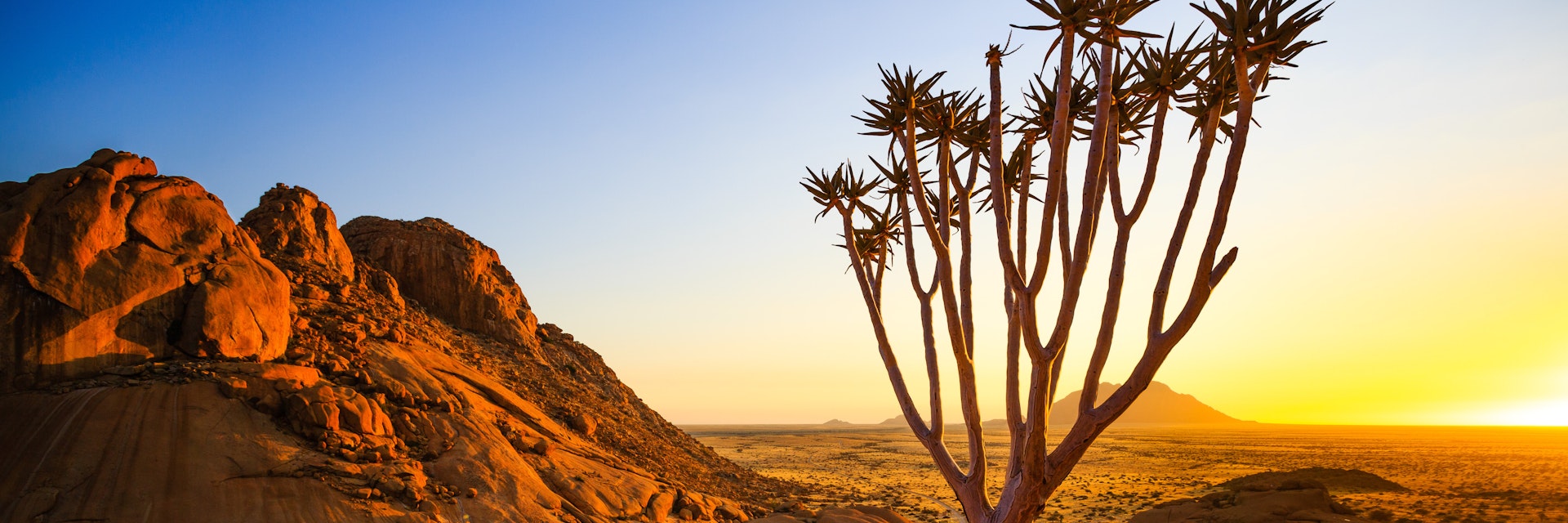
©Radek Borovka/Shutterstock
If Namibia is 'Africa for beginners', as is often said, what a wonderful place to start.
Best Time to Visit
Best places to visit, attractions, must-see attractions.
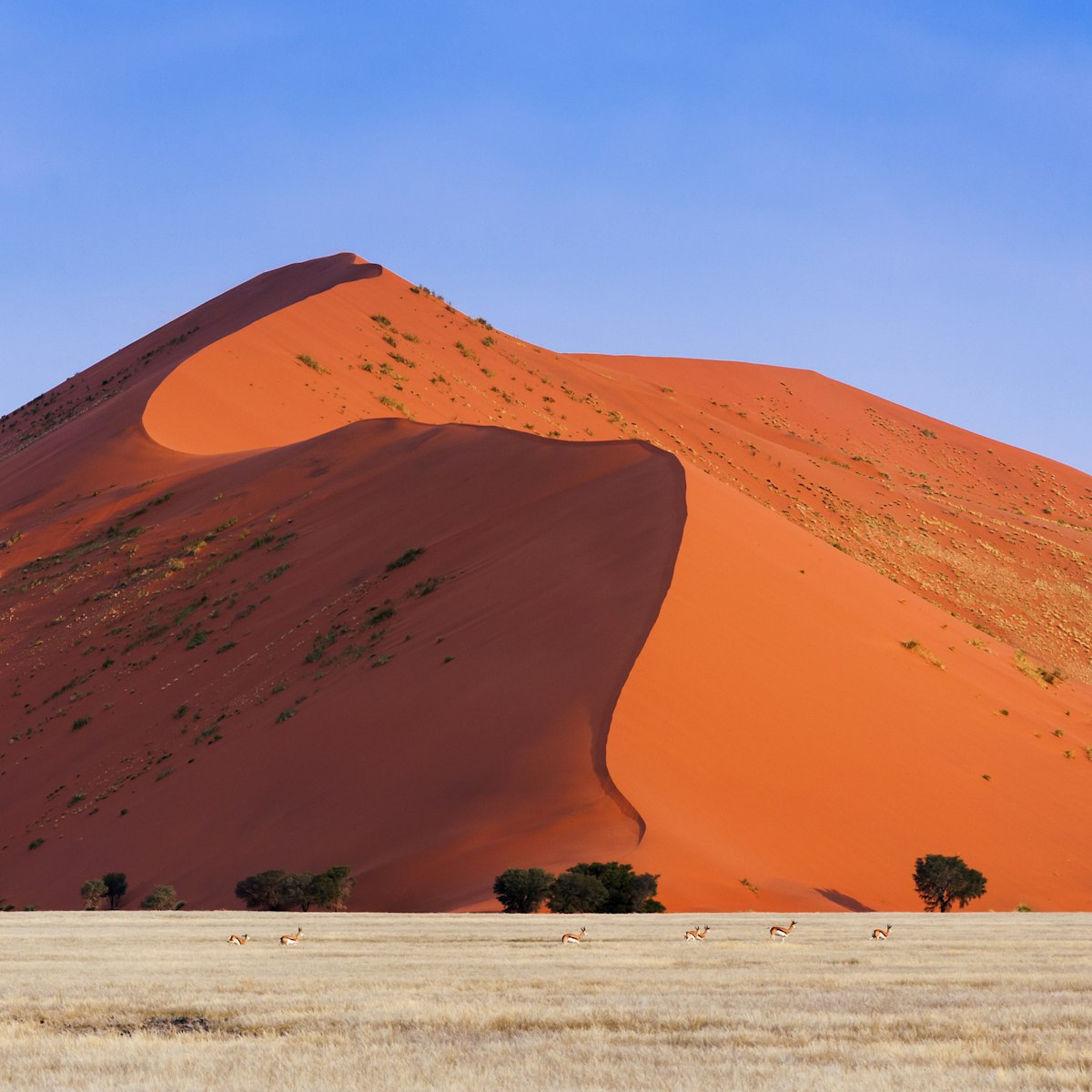
Sossusvlei, a large ephemeral pan, is set amid red sand dunes that tower up to 325m above the valley floor. It rarely contains any water, but when the…
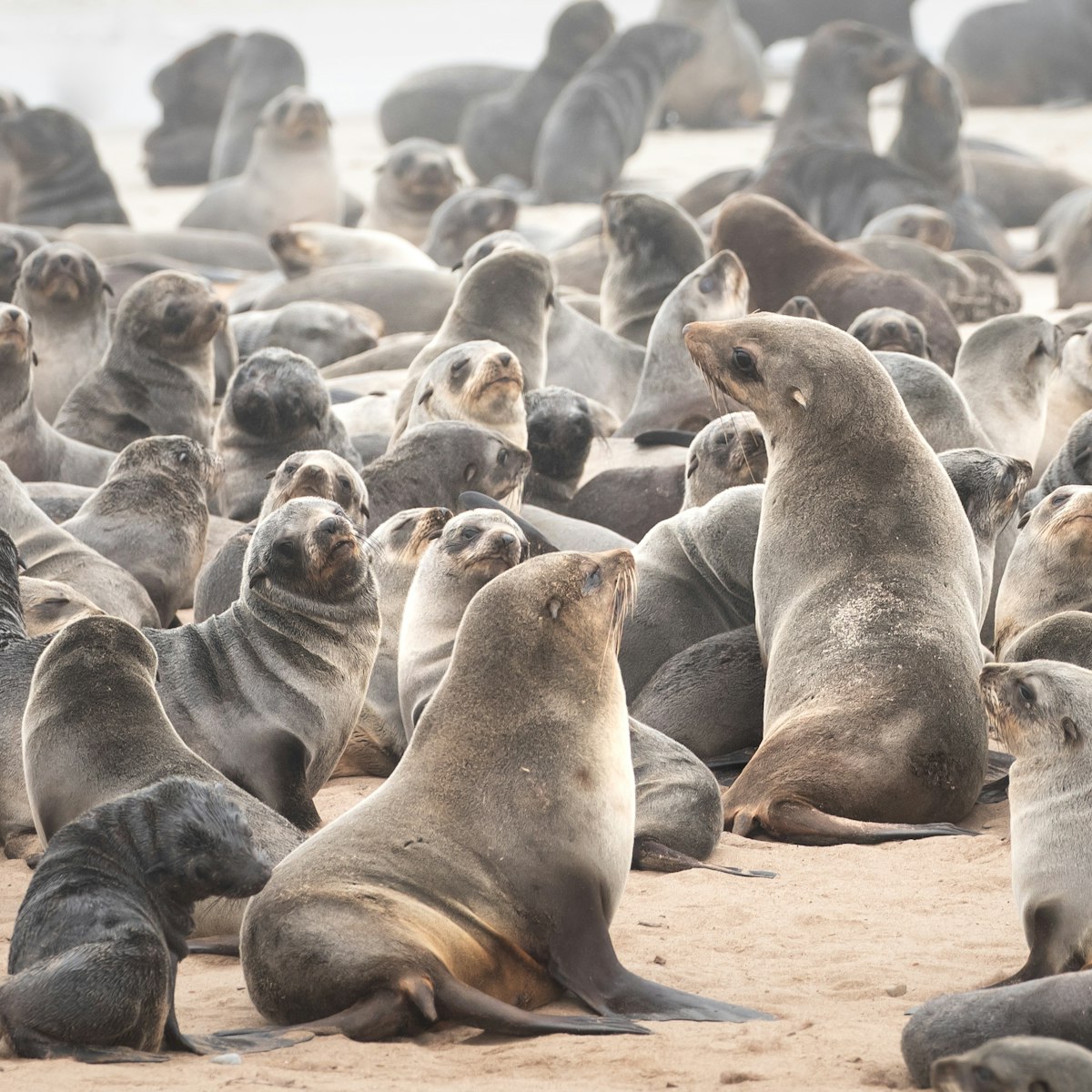
Cape Cross Seal Reserve
Skeleton Coast
The best-known breeding colony of Cape fur seals along the Namib coast is in this reserve, where the population has grown large and fat by taking…

Although it's much less famous than its neighbour Sossusvlei, Deadvlei is actually the most alluring pan in the Namib-Naukluft National Park – it's…

Sandwich Harbour
Sandwich Harbour, 56km south of Walvis Bay in Dorob National Park, is one of the most dramatic sights in Namibia – dunes up to 100m-high plunge into the…

Sesriem Canyon
The 3km-long, 30m-deep Sesriem Canyon, 4km south of the Sesriem headquarters, was carved by the Tsauchab River through the 15-million-year-old deposits of…

Hidden Vlei
This unearthly dry vlei (low, open landscape) amid lonely dunes makes a rewarding excursion. It's a 4km return hike from the 2WD car park. The route is…
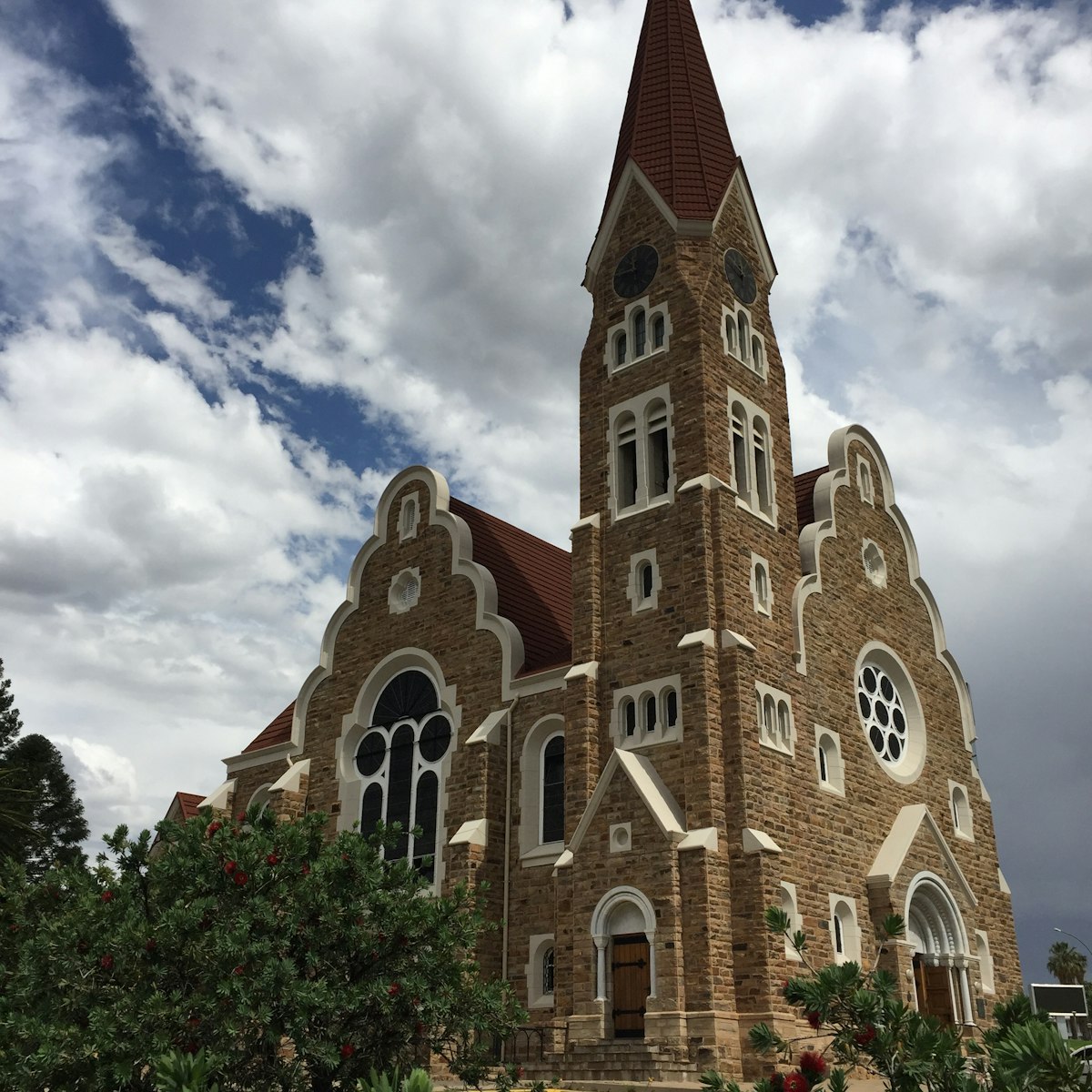
Christuskirche
Windhoek’s best-recognised landmark, and something of an unofficial symbol of the city, this German Lutheran church stands on a traffic island and lords…
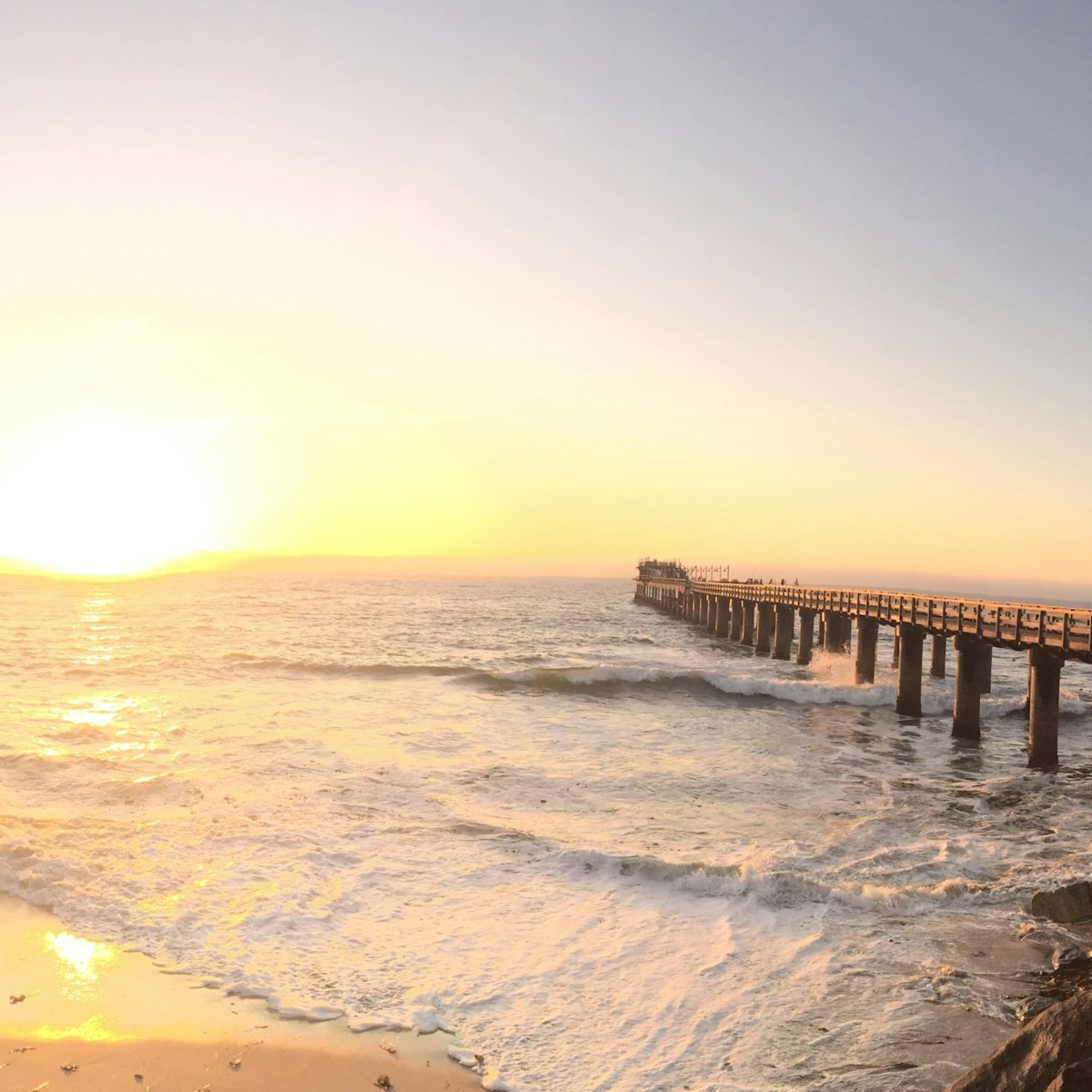
In 1905 the need for a good cargo- and passenger-landing site led Swakopmund’s founders to construct the original wooden pier. In the years that followed,…
Top picks from our travel experts
12 of the best things to do in namibia.

Named after early Afrikaner trekker Jani Kolman, whose ox wagon became bogged in the sand here, Kolmanskop was originally constructed as the Consolidated…

Independence Memorial Museum
Opened in 2014, this museum is dedicated to the country's anticolonial and independence struggle. The first floor tells the story of Namibia under…
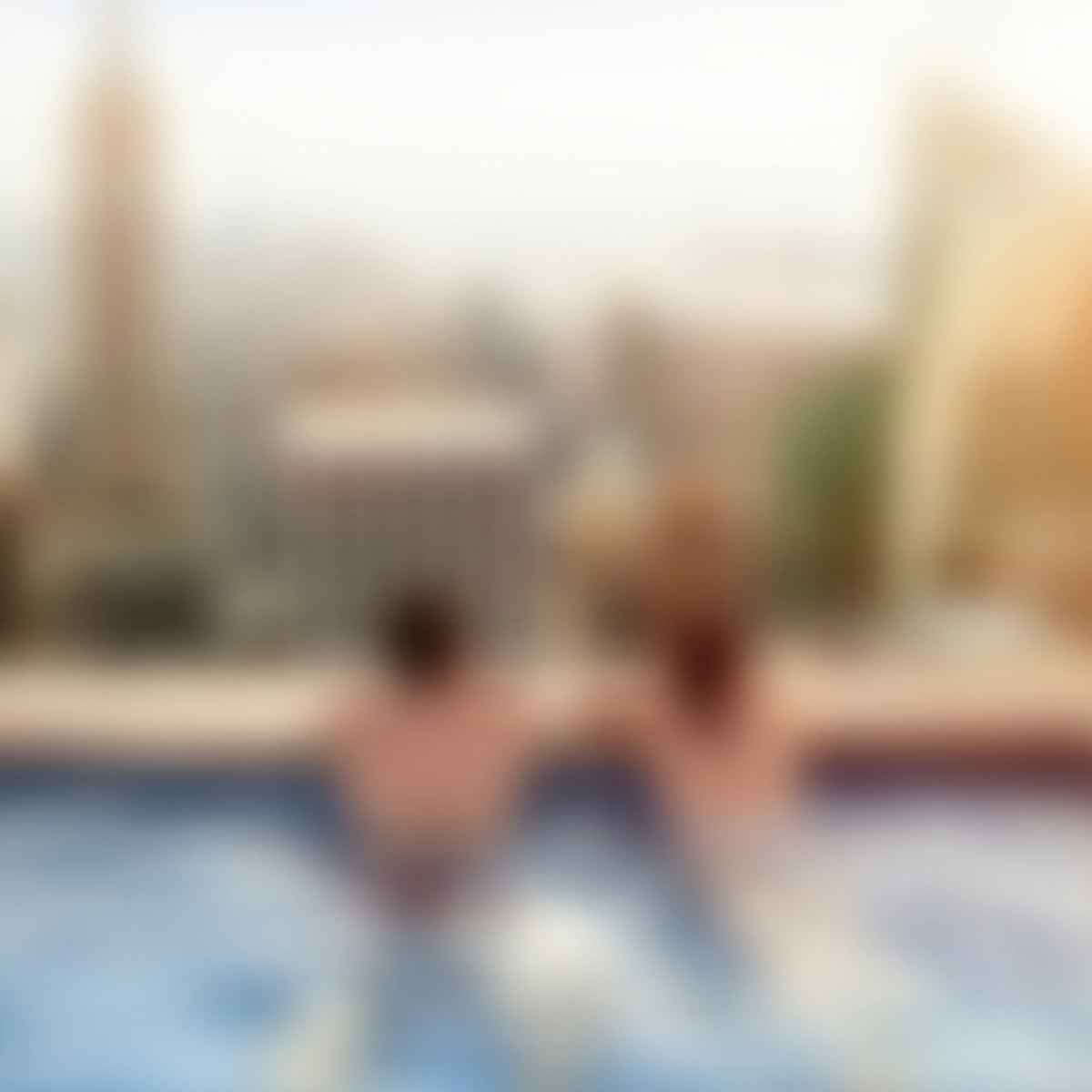
Betta Camp Site
A welcoming stop on the road in these parts is Betta Camp Site, roughly 20km past Duwisib. Apart from petrol and campsites if you want to crash the night,…
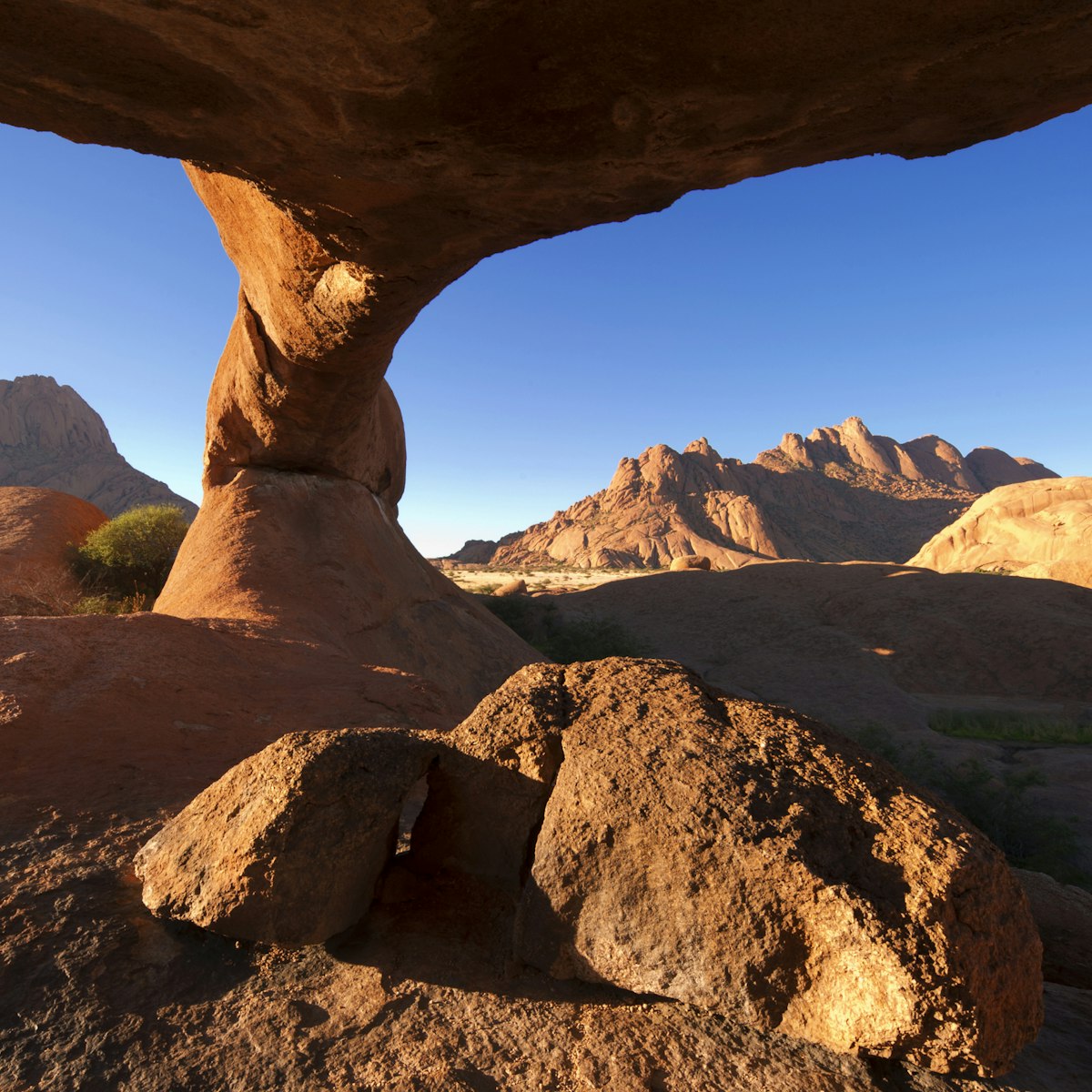
One of Namibia’s most recognisable landmarks, the 1728m-high Spitzkoppe rises mirage-like above the dusty plains of southern Damaraland. Its dramatic…
Planning Tools
Expert guidance to help you plan your trip.
Best Things to Do
From the dazzling Kalahari Desert to some of the world’s best stargazing, Namibia offers extraordinary encounters with nature.
Things to Know
Get ready for your trip to Namibia with these important tips on health, safety and things to pack.
Transportation
There aren’t many places where you can drive for hours without seeing anything other than the occasional oryx. Here's how to get around in Namibia.
Visa Requirements
Here's everything you need to know about getting a tourist visa to travel to Namibia.
Money and Costs
Save money on your trip to Namibia with these cheap transport tips and information on the costs of camping vs staying in a lodge.
Traveling with Kids
From wildlife-watching safari adventures to stargazing, family travelers will find that Namibia has a lot to offer.
Best Road Trips
Set off on an adventure in Namibia with these five road trips featuring desert, dunes, waterways and Atlantic coastline.
Latest stories from Namibia
Filter by interest:
- All Interests
- Adventure Travel
- Art & Culture
- Beaches, Coasts & Islands
- Food & Drink
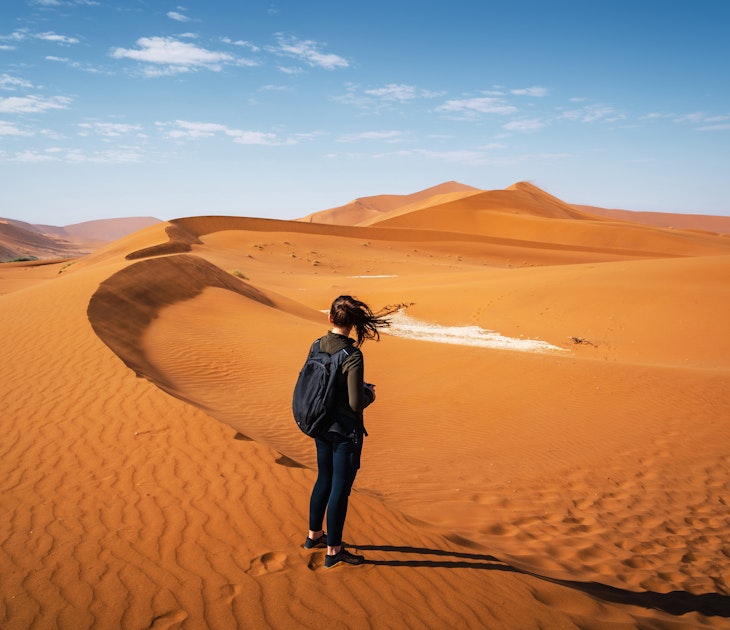
Destination Practicalities
Oct 26, 2023 • 3 min read
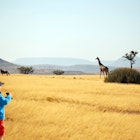
Oct 25, 2023 • 6 min read

Oct 23, 2023 • 4 min read
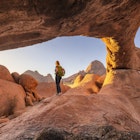
Oct 23, 2023 • 7 min read
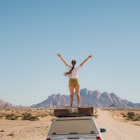
Oct 22, 2023 • 7 min read
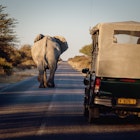
Oct 21, 2023 • 5 min read
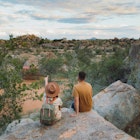
Oct 19, 2023 • 6 min read
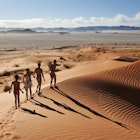
Oct 17, 2023 • 11 min read
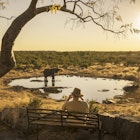
Oct 16, 2023 • 6 min read
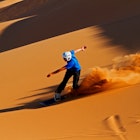
Sep 25, 2022 • 6 min read
in partnership with getyourguide
Book popular activities in Namibia
Purchase our award-winning guidebooks.
Get to the heart of Namibia with one of our in-depth, award-winning guidebooks, covering maps, itineraries, and expert guidance.
Namibia and beyond
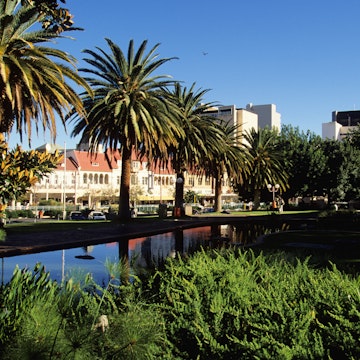
Travel Guide Namibia
Book your individual trip , stress-free with local travel experts
- roughguides.com
- Travel guide
- Itineraries
- Local Experts
- Travel Advice
- Accommodation
Plan your tailor-made trip with a local expert
Book securely with money-back guarantee
Travel stress-free with local assistance and 24/7 support
A vast land of mesmerizing landscapes, abundant wildlife and an astonishing array of natural wonders, Namibia promises adventure. Its defining feature is the Namib, an ancient desert that runs the entire 1500km of the country’s wind-lashed coastline. Encompassing towering dunes, dramatic mountains and lichen-encrusted gravel plains, it’s populated by desert-adapted beasts, with flamingos and colonial German architecture bringing splashes of colour to the waterfront. Capital Windhoek has a distinctly European feel, but you won’t want to linger too long; from here tempting arterial roads reach out to geological wonders in the south, and the beguiling Kalahari to the east, inhabited by some of Africa’s oldest peoples. To the north lie game-rich reserves and the majority of Namibia’s elusive population, from where the country’s lush panhandle lures you to within touching distance of Victoria Falls.
Where to go in Namibia
Opening hours and public holidays, public holidays, tailor-made travel itineraries for namibia, created by local experts.
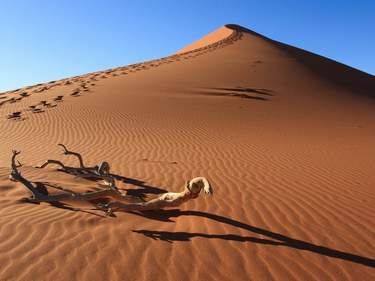
10 days / from 2600 USD
Ultimate Self Drive in Namibia
Explore Namibia on this epic, 10-day self drive trip. Highlights include the Namib, an ancient desert with towering dunes, dramatic mountains and colonial architecture at the waterfront. Additionally, you will visit the Himba people, discover Etosha National Park and more.

14 days / from 6555 USD
Epic Gondwana Adventure: Deserts, Ocean and Wilderness
Experience the best Namibia has to offer with a trip across the country, from the Kalahari to the Namib, the coast to Damaraland, ending off with an unforgettable time in the wildlife-mecca that is Etosha National Park.

8 days / from 16575 USD
Wilderness Safaris by Flight
Take convenient flights to explore the country's remote deserts, luxury lodges, safari camps, and iconic sights, from Sossusvlei's immense dunes to the rugged landscapes of Damaraland and the remote beauty of Kaokoveld.
Arguably the most impressive natural wonder in Namibia is the Fish River Canyon, in the far south, which affords breathtaking views across a deep serpentine chasm in the Earth’s crust, while in the northeast, the impressive sandstone Waterberg Plateau stands sentinel over the surrounding bushveld. At the very north of Namibia, the species-rich wetlands of the Zambezi Region, a 450km arm of luxuriant subtropical forest that stretches out above Botswana towards Zimbabwe and Victoria Falls, provide a wholly different landscape.
While, traditionally, tourists have been drawn to Namibia for its wilderness terrains, the country is now also attracting attention for its wildlife ; specifically, the increasing numbers of rare large mammals that are thriving in the semi-arid areas. Beyond the game-heavy confines of Etosha – Namibia’s premier national park – the world’s largest concentrations of free-roaming cheetah stalk the plains, while desert-adapted elephant and black rhino lumber along the valleys and riverbeds of northwest Namibia. In many cases these beasts are protected by conservationists working hand in hand with local communities – communities that are also beginning to open up to visitors, who can learn more about these cultures and lifestyles.
The Namib also hosts many extraordinary succulent plants and dune-dwelling endemics – especially lizards – that have adapted to the harsh conditions, and which have featured in many a nature documentary. In complete contrast, the lush, subtropical Zambezi Region holds almost three-quarters of the country’s bird species and many large mammals not seen elsewhere in the country.
As with most other countries in Africa, Namibia’s socio-political landscape has been indelibly shaped by colonialism , specifically the regimes of Germany and then South Africa, which resulted in the imposition of apartheid and the Namibian War of Independence that lasted over twenty years. While the adverse effects were considerable – and some still endure – it’s true to say that Namibia’s cuisine has benefited from its colonial past, from cream-laden German cakes, tasty filled brötchen and good coffee, to the dried, cured meats favoured by South Africans. Namibia was one of the last countries in Africa to gain independence – in 1990 – and it has taken time for the government to realize the country’s tourism potential, just as foreign tourists have been slow to appreciate Namibia’s haunting scenery, fascinating wildlife and rich cultural diversity. Now, Namibia is becoming established on the tourist map: high-quality, affordable lodges and campgrounds are sprouting up, often in conjunction with local conservancies; rural communities are inviting visitors to learn about their cultures, traditions and modern-day challenges; and new ways of experiencing Namibia are constantly being devised, from skydiving or hot-air ballooning over the desert to tracking rhino or kayaking with crocs.
International flights arrive at Windhoek, the country’s capital and transport hub, conveniently located in the centre of Namibia. A small city, more akin to a provincial town, it’s a pleasant spot to wander around for a couple of days, taking in the few modest sights, browsing the shops and sampling the local cuisine. From here, you need to plot your route carefully; although the tarred and gravel roads are maintained to high standards in Namibia, the distances are vast, which means you can easily end up spending most of your time getting to places. That said, much of Namibia’s appeal lies in its vast, uninhabited landscapes, which are best appreciated by driving through them.
Most first-time visitors, and those short of time, travel a circuit round central and northern Namibia, but with a quick detour – by Namibian standards – southwest to the Sossusvlei area of the Namib-Naukluft National Park, where the towering apricot sand dunes that change colour with the light are truly spectacular. From here many visitors head northwest to enjoy the milder climate and colonial architecture of the country’s top coastal resort, Swakopmund, which lies almost due west of Windhoek. Though no beach hangout – it’s too cold to swim most of the year – it’s a fascinating place, surrounded by dunes that you can explore on foot, on horseback or on a quad bike; it’s also rapidly emerging as a centre for adventure sports, such as skydiving and sand-boarding. A short excursion south takes you to Walvis Bay, the country’s main port, where you can consort with seals, dolphins and pelicans on the lagoon.
Moving north, organized tours and self-drive travellers often take in the Cape Cross seal colony before cutting inland via the desolate, mist-shrouded Skeleton Coast National Park to Damaraland, where some of the country’s most evocative scenery lies. At the southerly limit of this region, the domed Erongo Mountains and the pointed Spitzkoppe – both composed of giant burnished granite slabs – provide wonderful hiking and birdwatching opportunities, as well as some examples of San rock paintings. Far better preserved paintings are to be found at the Brandberg, Namibia’s largest massif, further north, while the continent’s oldest rock engravings at Twyfelfontein give fascinating insights into the spiritual world of some of Africa’s oldest inhabitants. The wonderful lodges in the area make the most of the picturesque scenery and offer the chance to spot desert-adapted elephant and rhino.
It’s a bit of a detour to the mountainous northwest, where the rocky, reddish-brown land and the frontier town of Opuwo are home to the semi-nomadic Himba; a further two-hour drive north takes you up to the scenic Epupa Falls, on the Kunene River, which marks the border with Angola. Many miss out this area and head straight to Etosha National Park – indisputably the top wildlife-watching spot – where they spend a few days before returning to Windhoek, sometimes via the scenic Waterberg Plateau. With more time, a journey northeast to the verdant Zambezi Region in the panhandle reaps many rewards: lush broad-leaved forests, gliding rivers and plentiful wildlife roaming in unfenced reserves. The less-visited far south is also worth the trek for its remarkable geological fault, the Fish River Canyon, from where it’s a few hours’ drive to the quaint historical German town of Lüderitz on the coast. A trip to the sinuous Orange River, which marks the border with South Africa, provides welcome respite from the relentless heat of the interior: an opportunity to paddle through beautiful scenery and indulge in some gentle birdwatching.
Visitors with more time should consider heading southeast to gaze at the rippling red dunes of the Kalahari, even popping over the South African border into the Kgalagadi Transfrontier Park, where vast herds of large mammals follow ancient migration routes. Alternatively, round Tsumkwe, in the northern reaches of this semi-desert, an increasing number of San communities are opening up to visitors, keen to share their ancient traditions and survival skills.
Top image © Przemyslaw Skibinski/Shutterstock
Discover more places in Namibia

- The southern Kalahari and the far south Travel Guide
- The southwest Travel Guide
- Windhoek and around Travel Guide
• Namibia is the second least densely populated country in the world after Mongolia, with only 2.68 inhabitants per square kilometre.
• Rugby union has been played in Namibia since 1916, and the national team has qualified for the last five world cups.
• On account of low population density and low light pollution, the country’s glittering night sky is one of the world’s top stargazing destinations.
• Though social inequalities are slowly improving, the richest ten percent of the population – including the six percent white minority – receive over half the national income.
• The Kunene Region has the world’s greatest concentration of black rhinos .
• Over a tenth of the Namibian population – from the Nama, Damara and San peoples – speak a click language .
• Etosha Pan is Africa’s largest saline pan , a vast white sheet visible from space.
• Namibia’s all-time greatest athlete, Frankie Fredericks , held the indoor world 200m record for eighteen years before Usain Bolt broke it in 2014.
Shops usually open at 9am, closing around 5.30pm. They also often close for lunch and on Saturdays shut down for the weekend at 1pm. Large supermarkets tend to open earlier (7–8am) and remain open until 7–8pm Monday to Friday; they may operate reduced trading hours on Saturday and Sunday, though some remain closed on Sunday. Government offices are open Monday to Friday 8am–5pm, often taking a lunch hour at 1pm.
Namibia doesn’t have many public holidays , and if the date falls on a Sunday then the holiday is usually held on the following Monday. During these days most government offices, businesses and shops close. Many businesses and government departments also effectively close from mid-December to mid-January for the summer holidays.
New Year’s Day
Independence Day
March/April
Good Friday and Easter Monday
Workers Day
Cassinga Day. Commemorates the attack on a SWAPO base in Angola by the SADF in 1978, which killed 600.
Ascension Day
Africa Day. Remembers the foundation of the Organisation of African Unity (OAU) in 1963.
Heroes’ Day. Recognized by the UN as Namibia Day, which commemorates the official start of the War of Independence in 1966.
December 10
International Human Rights Day
December 25
Christmas Day
December 26
On the weekend closest to August 23, Herero Day or Red Flag Heroes’ Day (not to be confused with the national Heroes’ Day), Herero gather in their thousands in Okahandja to commemorate their deceased chiefs, and, in particular Chief Samuel Maharero , who led the revolt against the German colonial army. The chosen date coincides with the reburial of his remains here, following his death in 1923 in South Africa, where he’d been living in exile. Since then, Herero have congregated annually for a three-day gathering, the culmination of which is a procession round various grave sites of Herero chiefs, followed by a church service. This homage to the dead, which has since become a symbol of resistance against colonialism, is an impressive sight, with the Herero women decked out in their voluminous crimson missionary-era dresses and “cow-horn” headgear, and the men marching in their military-style uniforms according to their paramilitary regiments. Followers of other flags meet at other times of the year in other locations; for example, the White Flag Herero gather in Omaruru in August. The Green Flag Mbanderu also meet in Okahandja on the weekend nearest June 11.
Travel advice for Namibia
From travel safety to visa requirements, discover the best tips for traveling to Namibia
- Eating and drinking in Namibia
- Getting around Namibia: Transportation Tips
- Going on safari
- Sports and Outdoor activities in Namibia
- How to get to Namibia
- Travel Health Namibia
- Travel Tips Namibia for planning and on the go
The Rough Guides to Namibia and related travel guides
In-depth, easy-to-use travel guides filled with expert advice.
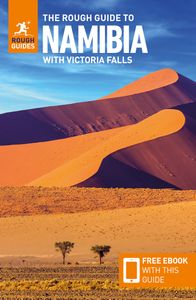
Find even more inspiration here

Planning your own trip? Prepare for your trip
Use Rough Guides' trusted partners for great rates
written by Rough Guides Editors
updated 19.04.2024
Ready to travel and discover Namibia?
Get support from our local experts for stress-free planning & worry-free travels.
- Where to stay
- Travel advice

Namibia Travel Guide
Your ultimate namibia travel guide, with tips, things to do, and best things to see in namibia. great for first-time and returning travelers..
Lions stalking Blue Wildebeest under the cover of sun-burnt savannah grasses. Desert elephants – smaller than most, and with unusually wide feet – adapted to the blowing sands of the Kalahari.
Termite mounds as tall as my house, and people that throw incomprehensible pops and clicks into their speech at seemingly random times .
This Namibia travel guide will help you plan your next vacation.
Popular Guides
- Walk with Cheetahs
- Kilimanjaro
- Things to do
Our Highlight
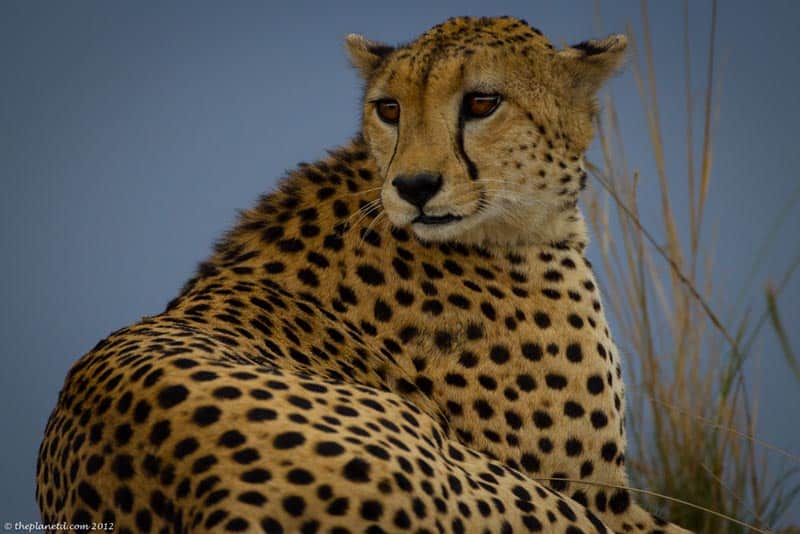
Table of contents
Table of Contents
Fast Facts about Namibia
- Namibia power voltage is 220V 50Hz; Plug D & M
- The Namibian currency is the Namibian dollar and is around 13 NAD to 1 USD.
- Beware of Chikungunya , a viral disease transmitted by the bite of infected mosquitoes. This outbreak continues to affect parts, Africa. Symptoms can take up to 12 days to appear but usually begin within 3-7 days after being bitten by an infected mosquito. Symptoms generally include fever and joint pain; other symptoms can include fatigue, headache, nausea, vomiting, muscle pain, and rash.
- Travelers spending a lot of time outdoors or visiting game parks have an increased risk of being bitten by a tsetse fly which can cause African Sleeping Sickness. Remember that these flies: bite during the day, are attracted to bright, dark colors and can bite through lightweight clothing.
- Namibia banks, as well as Wilderness camps, only accept US Dollars, GBP Sterling, Euro and South African Rand in cash. Travelers’ Cheques in any of the above currencies are also acceptable. MasterCard and Visa are usually accepted throughout Namibia.
- The water is not potable ; drink only bottled water.
Things to See and Do in Namibia
- Namib-Naukluft National Park: Come to the largest game park in Africa. Included are parts of the Namib, the world’s oldest desert, as well as the Naukluft mountains.
- Spitzkoppe: Climb these granite peaks in the Namib desert. Featuring paintings created by the Bushmen, see art from the past while climbing the rock formations.
- Volunteer to work with Cheetahs and wildlife conservation.
- Windhoek’s Christ Church: Step inside this historical German Lutheran Church in Windhoek. Constructed in 1907, it is the oldest Lutheran church in Namibia and is considered a symbol of the city.
- Etosha National Park: See lions, zebras, giraffes, leopards, and more at this national park.One of the best places to see wildlife, you can also head to the salt pan in the middle of the park, which is the largest one in Africa. Camping is available in the park.
- Fish River Canyon: One of the most popular places in Namibia, Fish River Canyon is the largest canyon in Africa and the second largest in the world. Go camping, hike through the Fish River Hiking Trail (53 miles long in total), or just take in unparalleled views of the canyon.
Namibia Travel Guides
- Ultimate Guide to Kitesurfing Cape Town
- We Cycled the Continent of Africa
Accommodation
Budget: You can find a variety of hostels and guest houses for 150-450 NAD per night. These come with free breakfast and Wi-Fi, simple private rooms or dorms, an outdoor pool, and close locations to nearby shops and restaurants.
Mid-Range: For mid-range, expect to pay around 600-750 NAD per night. These hotels come with private rooms, an outdoor pool, a casual hotel restaurant, free breakfast, and a lounge area.
High-End: For five-star hotels, you will pay around 3,500-13,000 NAD per night. Take in the best with private suites with flat-screen TVs and fireplaces, free breakfast, a hotel restaurant and bar, spa services, and activities like birdwatching.
Check out our favorite booking platforms Booking.com , Tripadvisor and Air B&B for the best deals on accommodation in Ireland.
colonial period. Oshifima (millet paste) served with meat and vegetables is a popular meal. Other common meals include oshiwambo (beef, spinach, and maize meal), braaivleis (meat barbeque), and potjiekos (meat, chicken, and fish stew).
Head down to the coast to get fresh seafood or look for street vendors that sell kapana (spicy meat strips). There are more restaurants where you can sample more Namibian cuisine. In total, expect to pay around 100 NAD per day for food.
The Best Ways to Get Around Namibia
Getting to namibia:.
Flights: There are 8 airports in Namibia, but the Hosea Kutako International Airport is the main airport to fly into and is 28 miles from the capital of Windhoek. You can check for the best flights to Namibia on Skyscanner .
Transportation:
Buses: Buses come in two main forms: the minibuses that go throughout towns or long-distance buses that travel between cities and include meals. Reservations should be made at least 72 hours for long-distance buses. Travel from Windhoek to Oshakati in 10.5 hours for 450 NAD
Taxis: Taxis are another way to get around. A typical taxi ride through the capital of Windhoek will cost about 12 NAD.
Car Rental: To rent a car, you generally need to be at least 25 years old and will need a U.S. driver’s license that has been valid for a year. Prices average at 1,070 NAD per day.
Uber: There is no Uber, but there is the rideshare app Lefa, which operates similarly to Uber.
When to go To Namibia
The best time to visit Namibia is between July and October. During these months, temperatures are pleasant (high 60s/low 70s) and there is little rainfall, which makes it the best chance to see wildlife.
Where to Stay in Namibia
Avani Windhoek Hotel and Casino: Centrally located with beautiful views of Windhoek with a Rooftop pool.
Hakusembe River Lodge, Gondwana Collection Namibia : When in Rundu, stay at this great lodge. Relax in wood-furnished bungalows, sleep in canopied beds, dine at the riverside restaurant, swim in the outdoor pool, go fishing, take a champagne river cruise, or relax on the sun loungers. Kids 5 and under stay free.
Protea Hotel by Marriott Walvis Bay : Stay next to the Atlantic Ocean at this hotel. The Walvis Bay Train Station is just 7 minutes away on foot, which is perfect for those who want to explore more of the city. Or you can stay inside and enjoy free breakfast and Wi-Fi, a hot tub, golf, room service, and a hotel restaurant and bar.
Check out our favorite booking platforms Booking.com , Tripadvisor and VRBO for the best deals on accommodation in Namibia.
What to Pack for Namibia
The climate is typically semi-desert with hot days and cool nights. Midsummer temperatures may rise to over 40 degrees Celsius.
Winter days are warm, but dawn temperatures may drop to freezing. The coast is cool with low rainfall and fog that prevails from late afternoon until mid-morning. The rainy season lasts from October to April.
The rest of the year is dry and cloudless. Rejoice, Namibia averages 300 days of sunshine a year!
- Waterproof bag – the bag has two functions, protecting your stuff from the rain and also from the dust, especially if you’re travelling to drier regions.
- Footwear – especially important if going you are heading on a safari! Pack a pair of lightweight, durable, waterproof and comfortable shoes and also a pair of flip-flops or sandals that you can change into after a long day of sightseeing.
- Protection from the elements – pack sunscreen, sunglasses, a hat, a loose sarong or wrap to cover yourself from the sun and bug-spray to prevent getting bitten by a mosquito (that might have malaria!)
- Layers – pack the basic tropical clothes and make sure to include long pants, long-sleeve tops and some warm clothes for those chilly nights. Make sure to pack parka and scarf / gloves for winter
- Avoid packing dark colored clothes – tsetse flies are drawn to dark colors, like blue and black clothing, and their bite can give you African Sleeping Sickness. Stick to light, neutral colors but avoid packing white clothes as they will get dirty and dusty pretty quickly.
- Pack for Humidity – for humid weather it is best to pack fabrics that breathe as much as possible and natural fabrics, like cotton, linen or rayon (avoiding silk, wool and polyester). Clothing should be loose and comfortable to encourage the flow of air and allow moisture to evaporate.
See our packing tips: packing list for smart travel & How to Pack for a Safari
Namibia Travel Guide: Best Booking Resources
Whenever we travel to we make sure to start with these companies. We have tried a lot of different ones over the years and all of these have consistently proven to be the best when it comes to offering great prices.
We have used every one of these personally and continue to do so.
- Booking.com : This is our go site to when comparing prices for accommodation. It usually has the cheapest prices, especially in Europe and we love their interface. Not to mention you get free cancellation and you are guaranteed the best price.
- Trip Advisor : What we like about Trip Advisor is that we can look at all the reviews and then book our accommodation. TripAdvisor is where we go when we want to compare prices with multiple accommodation providers.
- VRBO : is the main search engine we use when we are looking for a home or apartment rental. It can sometimes be cheaper than hotels and it is the best way to stay in areas that offer a more local feel.
- Hostelworld : With one of the largest databases of hostels in the world, Hostelworld is the go-to site when you are looking for budget accommodation.
- Skyscanner : This is the first place we check for flights. It consistently comes back with the cheapest and best options. It allows us to compare a lot of airlines to get the best price.
- Rome 2 Rio : If you want to see how to get somewhere by plane, train, bus, ferry or car Rome2Rio lays it all out for you as well as related costs.I love how they show it all to you on a Google Map and it works offline.
- Get Your Guide: For all your day trip and city guide needs, we use Get Your Guide. It has the world’s largest collection of things to do with more than 30,000 activities in 7500 destinations.
- World Nomads Insurance: When traveling to Italy you should always have travel insurance. We have found the best bang for your buck is by far World Nomads.
Namibia Travel Guide: Related Articles
To browse all our articles and guides about Namibia click here.
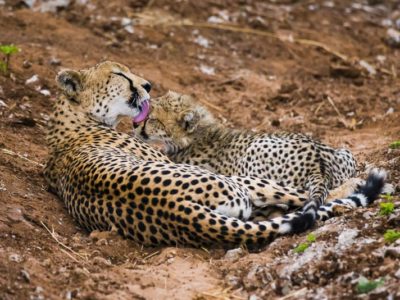
Walk with Cheetahs – Bushmen Conservation in Africa

Extraordinary Namibian stories.
Discover the wonders of the land of endless horizons with this travel guide to Namibia. From vital information needed to plan your trip, accommodation options, details on destinations across the country and inspiring travel ideas. Namibia is a one-of-a-kind tourism experience. From breathtaking landscapes and diverse wildlife to rich culture and history, Namibia offers something for everyone. Whether you’re seeking an exciting adventure or a peaceful retreat, This is Namibia provides all the information and resources you need to plan the ultimate Namibian vacation. Explore the country’s stunning deserts, savannas, and coastlines, and immerse yourself in the unique culture and heritage of the people who call this incredible place home. Start planning your journey to Namibia today and experience the magic for yourself.


PLAN YOUR TRIP
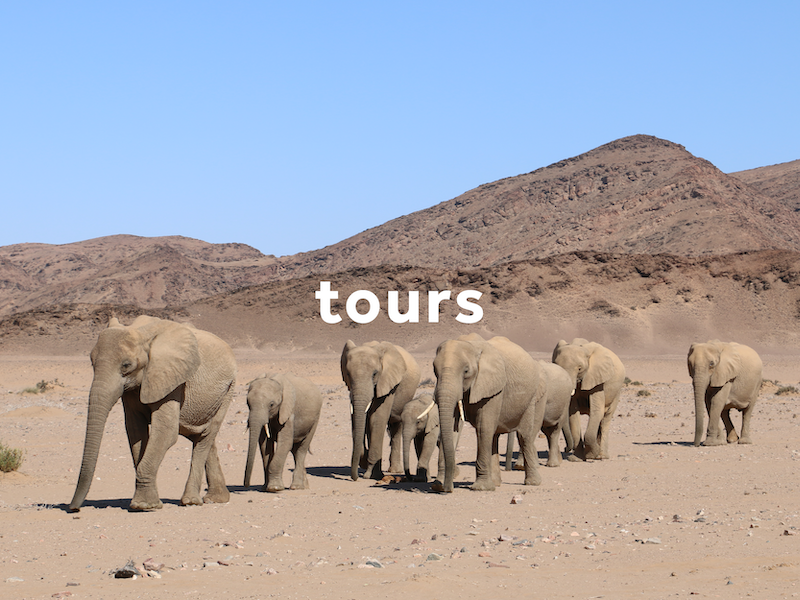
Places to go
Incredible destinations across namibia, things to do, adventure awaits in namibia.

MOUNTAIN BIKING

HORSEBACK RIDING
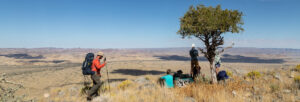
HIKING NAMIBIA
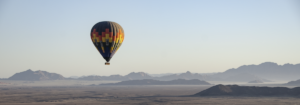
SKY ADVENTURES

DOWNLOAD OUR FREE TRAVEL GUIDE TO NAMIBIA
Or read it online.
Please note: Our site is currently undergoing some construction and should be complete soon.
Get Updates And Stay Connected Subscribe To Our Newsletter

Powered by Venture Media and in collaboration with travel news namibia
Sharing stories, information and inspiration with an audience that understands and values why tourism and conservation matters.

© Venture Media, 2022
*Disclaimer: This is Namibia is not the owner, operator or promoter of the listed products and services. Please visit the operator’s website for further information.

Namibia Travel Guide
Travel & tourism.
Ancient deserts, tropical forests, and some of the best game viewing in Africa: it’s little wonder that Namibia, in the southwestern part of the continent, is becoming known as a top tourist destination. The country’s topographical beauty and commitment to wildlife preservation (environmental protection is mandated in its constitution) are immediately evident, no matter whether you travel to the red sand dunes of the Namib Desert or the fertile, densely wooded northern regions. Also, since Namibia gained its independence 20 years ago, it’s been politically stable, so it is one of the safest places to visit in Africa today. Game parks, river cruises, shopping, and some of the best eating on the continent await you as you make your way to Namibia.
What to Do in Namibia
1. Etosha National Park: One of the best game reserves in Africa, Etosha, in northern Namibia, is home to all kinds of wildlife, from some of Africa’s largest elephants to rare black-faced impalas. Sightings of leopards and lions are almost guaranteed.
2. Swakopmund: Both a picturesque, seaside town with German, colonial-era architecture and a top destination for thrill seekers (skydiving, paragliding, and more), this large region along the northwestern coast is definitely worth checking out.
3. Namib-Naukluft Park: Composed of one of the world’s oldest deserts and an isolated mountain range, this 50,000-square-kilometer park along the southwestern coast offers infinite possibilities for exploring. Don’t miss Sossusvlei, the dramatic, brightly colored red sand dunes, which are especially majestic at sunrise and sunset.
4. Crafts Shopping: In the northern areas of Omuthiya and Onenongo, shop for traditional palm leaf baskets, earthenware bowls, and other handmade goods at the small craft initiatives popping up all over the region. Many were started by NGOs in an effort to generate income for local women while preserving traditional skills.
5. Khaudum Game Park: In northeastern Namibia, near the Botswana border, this remote, densely forested park shows another side of the country’s varied landscape. Giraffes, rare wild dogs, and hundreds of birds are among the wildlife.
6. Local Cuisine: Feast your way through Windhoek, Namibia’s capital city, sampling everything from traditional West African dishes to German-inspired fare.
7. Sandboarding: You shouldn’t leave Namibia without sandboarding; the Namib Desert, along the western coast, boasts some of the largest sand dunes in the world. Try it standing up or lying down, but don’t do it alone. Sandboarders can reach speeds of 60 miles (96.5 kilometers) per hour, so it’s essential to arrange an expedition with a professional sandboarding company.
8. Fish River Canyon: Often compared to the Grand Canyon, this massive landform in southern Namibia is split by the country’s longest river and is home to mountain zebras, baboons, and more. There are few visitors, and it is an excellent place for camping and hiking.
9. University of Namibia Choir: Singing in both English and indigenous languages, choir members belt out lively melodies and use call and response in their moving performances. The university is located in Windhoek.
10. River Cruise: Glide down the Zambezi River, along Namibia’s northernmost coast, on a houseboat. Be on the lookout for hippos and crocodiles.
11. Skeleton Coast: Namibia’s Skeleton Coast is a harsh and unyielding landscape where only the hardiest of desert-adapted animals survive. It is also notorious for its rough seas and thick fog that has claimed the lives of many sailors over the years.
12. Kolmanskop: This ghost town was once a thriving diamond mining area but now lies semi-buried by the sands of time. Its haunting beauty is only overshadowed by the eerie feel of abrupt abandonment that whispers through the broken windows and down the lonely streets.
13. Hoba meteorite: The Hoba meteorite is the largest on the planet as well as the largest naturally occurring mass of iron known to exist on the earth. It was first uncovered in 1920 and remains in the exact location where it crashed into the earth’s surface over 80,000 years ago.
14. Welwitschia Drive: This desert route is located in the northern corner of the Namib-Naukluft National Park and includes 13 numbered stone beacons at points of particular interest. The four-hour drive culminates at one of Namibia’s largest, and oldest, welwitschia plants, a strange and highly unique desert species.
15. Namib Desert: The Namib Desert claims the title of the oldest in the world and dishes up panoramic landscapes that are second to none. It is an immense expanse of relentlessly moving gravel plains and dunes that stretch along the entire Namibian coastline and holds evidence of human existence dating back to the Stone Age.
The ideal time to visit Namibia is from June to November, when interior temperatures range from 65 to 77 degrees Fahrenheit (18.3 to 25 degrees Celcius) and you’re more likely to see plenty of game animals. Namibia’s rainy season lasts from October to April; during that time, average interior temperatures span 70 to 90 degrees Fahrenheit (21 to 32 degrees Celcius.) (In certain parts of the country, temperatures spike to more than 100 degrees (37.8 degrees Celcius) during this season.) If you’re traveling at the end of the rainy season, or you plan to camp outdoors, it’s advisable to bring a mosquito net and insect repellant with you. Malaria is not prevalent in this area, but having these on hand will make life a little easier.
Getting In and Around
Visas: A passport with at least two unstamped pages and a visa are required to enter Namibia. Travelers with U.S. passports who plan to visit the country for fewer than 90 days can obtain visas at the airport. Tourists traveling to or from Namibia via South Africa are encouraged to have five or more unstamped pages in their passport.
Transportation: In/Out and Within Namibia: Namibia’s national airline, Air Namibia, offers flights from New York City and Europe as well as flights within the country. British Airways, South African Airways, and LTU also fly to the Namibia. In Windhoek, you’ll find a local bus service, a fleet of taxis, and a luxury bus line that connects to many of the country’s regions as well as to South Africa. Rental cars are available at the airport (WDH) as well as in Windhoek’s city center. An international driving permit is required for renting a car.
Mobile Phones: You can use a GSM mobile phone, if you have one, in Namibia. Most international phone companies provide roaming coverage to the country’s urban areas.
Safety and Security
Concerned about your safety as you plan travel to Namibia? We at Africa.com, together with our friends, family and colleagues, travel extensively throughout the continent. Here are the resources we consult when thinking of our safety in Namibia:
• UK Government Namibia Travel Advice Guidance
Africa.com comment: Very timely and frequently updated. Perspective assumes that you ARE going to travel to Namibia, and seeks to give you good guidance so that you understand the risks and are well informed.
• U.S. State Department Travel Advisory on Namibia
Africa.com comment: Can sometimes be considered as overly conservative and discourage travel altogether to destinations that many reasonable people find acceptably secure. On the other hand, they have the resources of the CIA to inform them, so they know things that the rest of us don’t know. See what they have to say about Namibia.
Local Advice
1. Located in southwestern Africa, Namibia is a large country the size of Texas and Louisiana combined. It shares borders with Angola and Zambia to the north, Botswana to the east, and South Africa to the southeast and is divided into 13 regions: Omusati, Oshana, Ohangwena, Oshikoto, Okavango, Caprivi, Kunene, Otjozondjupa, Erongo, Khomas, Omaheko, Hardap, and Karas.
2. Namibian dollars (NAD) are the local currency, but South African rands are also used within the country. (Namibian dollars may not be used in South Africa, however.) One American dollar is equal to approximately seven NAD.
3. Freedom of the press is not an issue here; in fact, Namibia is one of the more press-friendly countries in Africa. The major newspapers are the Namibian, a private, English and Oshiwambo-language daily; Namibia Economist, a daily; Die Republikein, an Afrikaans daily; New Era, a government-owned daily; Windhoek Observer, a private weekly; and Allgemeine Zeitung, a German-language daily.
4. The official language in Namibia is English. Afrikaans, German, Oshivambo, Herero, Nama, and other indigenous languages are also spoken throughout the country.
5. Smoking in public places has recently been banned in Namibia.
Media Partners Upcoming Events
Shared interest: 30th anniversary gala, brvm investment days 2024, welcome to fmas:24, the finance magnates africa summit, mega ceramica nigeria, mega clima nigeria.

No videos yet!
Click on "Watch later" to put videos here
Namibia Travel Guide – Everything You Need to Know

Namibia, a land of stark, breathtaking beauty, offers a one-of-a-kind travel experience for adventurers and nature enthusiasts. This southwestern African nation boasts vast deserts, rugged mountains, diverse wildlife, and a rich cultural tapestry. From the otherworldly landscapes of the Namib Desert to the captivating encounters with wildlife in Etosha National Park, Namibia promises an unforgettable journey for those seeking the extraordinary.
What’s the Best Time to Visit? 📅
The best time to visit Namibia as a tourist depends on your interests and the experiences you seek, as the country’s climate and wildlife vary throughout the year. Here are the primary seasons to consider:
- Dry Season (May to October): This period is the most popular time to visit Namibia. The weather is generally dry and pleasant, with warm days and cool nights. It’s ideal for wildlife viewing as animals congregate around water sources, and vegetation is sparse. Etosha National Park is a must-visit during this season.
- Peak Season (June to August): These months, particularly July, are the busiest for tourism in Namibia. If you prefer fewer crowds, aim for May or September. Book accommodations well in advance.
- Wet Season (November to April): Namibia experiences its rainy season during these months. While it’s less crowded and accommodations may be more affordable, some areas can become inaccessible due to flooding. This is a good time for birdwatching and seeing young animals in the wild.
- Green Season (January to March): This is when the landscape is at its lushest and greenest, making it a unique time to visit the desert regions. However, it’s not the best time for wildlife viewing as animals are more dispersed.
- Wildflower Season (September to October): In the southern regions of Namibia, you can witness an explosion of wildflowers, especially in the Namaqualand area. This is a fantastic time for photography.
In summary, the best time to visit Namibia for wildlife and clear skies is during the dry season from May to October. However, if you’re interested in a unique and more budget-friendly experience, consider the wet season or green season. Namibia’s diverse landscapes and attractions ensure that you can find something special at any time of the year.
What’s the Best Way to Get Around? 🚌
Getting around Namibia as a tourist can be an adventure in itself, given the vast landscapes and diverse terrain. Here are some of the best ways to explore the country:
- Renting a Car: Renting a car is one of the most popular and flexible ways to explore Namibia. You can rent a 4×4 vehicle, especially if you plan to visit remote areas or undertake self-drive safaris. Be sure to book in advance and check the condition of the roads, as some may be gravel or off-road.
- Guided Tours: Joining a guided tour or safari is a convenient way to explore Namibia, especially if you’re not comfortable driving in challenging conditions. These tours often include experienced guides, accommodations, and transportation.
- Domestic Flights: Namibia has several domestic airports, and taking domestic flights can save you time and effort if you’re covering long distances. Air travel is convenient for reaching more remote areas.
- Public Transport: Namibia’s public transport system is less extensive than in some other countries. Minibuses and buses serve major cities and towns, but schedules may not always be reliable. It’s not the most common way for tourists to get around.
- Taxis: Taxis are readily available in cities and towns. They are a good way to get around locally, but make sure to agree on the fare before starting the journey.
- Hitchhiking: While hitchhiking can be a way to get around in Namibia, exercise caution and use this method sparingly. Ensure you’re hitchhiking in safe areas, and keep in mind that Namibia’s vastness can mean long waits for rides.
- Cycling: For the adventurous, cycling is an option in certain areas, and you can explore at your own pace. However, consider the challenging terrain and distances between destinations.
- Walking and Hiking: Namibia offers numerous hiking and walking trails, particularly in its national parks and wilderness areas. Walking safaris are an excellent way to connect with nature and spot wildlife on foot.
Before embarking on your journey, it’s essential to plan your transportation method based on your itinerary and comfort level. Some areas may require a 4×4 vehicle, while others are accessible by regular car. Be sure to prepare adequately and be aware of the distances and conditions you’ll encounter during your travels in this vast and captivating country.
What’s the Official Language?
The official language of Namibia is English. While English is widely spoken and understood, many Namibians also speak indigenous languages. Here are some common words and phrases in English and some indigenous languages to help you communicate as a tourist:
- Hello – A traditional greeting is “Good morning” or “Good day.”
- Thank you – “Thank you” or “Ta” (informal).
- Yes – “Yes.”
- No – “No.”
- Please – “Please.”
- Excuse me – “Excuse me.”
- Goodbye – “Goodbye” or “Farewell.”
- How much is this? – “How much does this cost?”
- I need help – “I need assistance.”
Oshiwambo (Ovambo):
- Hello – “Wa loka.”
- Thank you – “Ondjila ondashi.” (lit. “Thank you very much”)
- Yes – “Ehe.”
- No – “Ahe.”
- Please – “Ii.” (when making a polite request)
- Excuse me – “Uuhii.”
- Goodbye – “Oka tike.”
- How much is this? – “Ondiyiwi otayi?”
- I need help – “Ndavala ondaka.”
- Hello – “Hallo.”
- Thank you – “Dankie.”
- Yes – “Ja.”
- No – “Nee.”
- Please – “Asseblief.”
- Excuse me – “Verskoon my.”
- Goodbye – “Totsiens.”
- How much is this? – “Hoeveel kos dit?”
- I need help – “Ek het hulp nodig.”
- Hello – “Tjike.”
- Thank you – “Tiru.”
- Yes – “Ee.”
- No – “A.”
- Please – “Oko.”
- Excuse me – “U zombani.”
- Goodbye – “Twa gode.”
- How much is this? – “A kovandu keyi?”
- I need help – “Ndifandje oku tira.”
While English is the primary language for tourism, attempting to use some basic phrases in the local languages can be appreciated by the people you meet during your travels in Namibia. It’s a great way to show respect for the local culture and connect with the friendly and diverse communities in the country.
Where to Stay? 🏨
Namibia offers a variety of accommodation options to suit different preferences and budgets. Here are some types of places to stay in Namibia:
- Hotels: In cities and larger towns like Windhoek, Swakopmund, and Oshakati, you’ll find a range of hotels, from luxurious to budget-friendly. These provide comfortable rooms and amenities.
- Guesthouses: Guesthouses are a popular choice and offer a more personal and intimate experience. They are often family-run and can be found in urban and rural areas.
- Lodges: Namibia’s lodges range from affordable to upscale, and they are particularly common near national parks and wildlife reserves. Staying in a lodge offers a unique opportunity to be close to nature.
- Campsites: If you’re on a self-drive or camping safari, Namibia has well-equipped campsites with facilities like showers, toilets, and firepits. Some are in remote locations, perfect for stargazing.
- Luxury Safari Lodges: For a high-end experience, consider staying in luxury safari lodges. These lodges offer exquisite accommodations, gourmet dining, and guided safari experiences.
- Tented Camps: Tented camps provide a balance between the adventure of camping and the comfort of a lodge. They often feature spacious tents with en-suite bathrooms.
- Yurts: In certain areas, you can stay in traditional yurts, offering a unique experience with local cultural elements.
- Wilderness Camps: In remote wilderness areas, you’ll find basic camps with minimal facilities, ideal for those seeking a more rugged adventure.
- Rest Camps in National Parks: Some national parks, like Etosha, have rest camps with basic accommodations. These are a great way to stay within the park and enjoy wildlife viewing.
- Eco-Lodges: Namibia also has eco-friendly accommodations, which focus on sustainability and blending with the environment.
It’s important to book accommodations in advance, especially during the high tourist season (June to August). Prices can vary widely, so it’s a good idea to plan your itinerary and budget accordingly. Whether you prefer the comfort of a hotel or the adventure of camping, Namibia’s accommodation options offer something for every traveler.
What to Eat? 🍽️
Namibian cuisine offers a blend of African, German, and South African influences. As a tourist, here are some must-try foods and dishes in Namibia:
- Biltong: Biltong is a popular snack made from dried and seasoned meat, often beef or game meat. It’s similar to jerky but typically thicker and more tender. You can find it in many shops and markets.
- Kapana: Kapana is a street food sensation in Namibia. It consists of chunks of grilled or fried meat, often beef, served with a variety of sauces and condiments. It’s a tasty and affordable treat.
- Game Meat: Namibia is known for its game meat, including kudu, springbok, oryx, and zebra. Try it in various preparations like steaks, sausages, or stews.
- Potjiekos: This is a traditional Dutch-inspired stew prepared in a cast-iron pot. It typically contains meat, vegetables, and spices, slow-cooked to perfection.
- Kalahari Truffle: Found in the Kalahari Desert, these fungi are considered a local delicacy. They are typically used in soups or stews.
- Mopane Worms: A unique delicacy, mopane worms are actually caterpillars of the Emperor Moth. They are usually dried and can be eaten as a snack or added to dishes for flavor and protein.
- Kapana Rolls: Kapana meat is often served in a roll, similar to a sandwich, with various sauces and condiments. It’s a delicious and filling street food option.
- Oshikundu: Oshikundu is a traditional Namibian beer made from maize and millet. It’s a bit sour and can be an acquired taste, but it’s worth trying for a local experience.
- German Pastries: Due to Namibia’s colonial history, German influences are strong in the cuisine. You’ll find a variety of German pastries and bread, such as pretzels and streuselkuchen (crumb cake).
- Kalahari Melon: This sweet and juicy fruit is a refreshing treat, especially in the desert regions.
- Local Seafood: If you’re near the coast, be sure to sample fresh seafood, including oysters and fish.
- Namibian Coffee: Namibia is known for its coffee culture. Enjoy a cup of local coffee in cafes and eateries.
When dining in Namibia, keep in mind that portion sizes can be generous, and many dishes are hearty. It’s also common to find a mix of flavors and influences in the local cuisine, making it a delightful culinary experience for tourists.
What to See? 🔍
Namibia is a land of extraordinary natural beauty and diverse landscapes, making it a must-visit destination for tourists. Here are some must-see places in Namibia:
- Sossusvlei and Deadvlei: These iconic salt and clay pans, surrounded by towering orange sand dunes in the Namib Desert, create a surreal and breathtaking landscape. Climb Dune 45 for a stunning sunrise view.
- Fish River Canyon: The Fish River Canyon is one of the largest canyons in the world, offering dramatic views and excellent hiking opportunities.
- Etosha National Park: Known for its vast salt pan and abundant wildlife, Etosha is a premier destination for safaris. You can spot elephants, lions, giraffes, and more at waterholes throughout the park.
- Namib-Naukluft National Park: This park is home to the famous Sossusvlei, but it also features otherworldly landscapes, including the eerie Deadvlei and the hidden oasis of Sesriem Canyon.
- Swakopmund: This coastal town offers a mix of adventure and relaxation. You can enjoy activities like dune bashing, sandboarding, and boat tours, or simply relax on the beach.
- Skeleton Coast: This remote and rugged coastline is known for shipwrecks and unique desert-adapted wildlife. It’s a place of mystery and natural wonder.
- Cape Cross Seal Reserve: Witness thousands of Cape fur seals in their natural habitat. The reserve is home to one of the largest seal colonies in the world.
- Epupa Falls: Located in the far northwest, these cascading waterfalls are surrounded by lush greenery and are a picturesque sight.
- Spitzkoppe: Often called the “Matterhorn of Namibia,” Spitzkoppe is a collection of distinctive granite peaks that offer excellent hiking and climbing opportunities.
- The Himba Villages: Encounter the traditional Himba people and their unique way of life in the northwestern part of Namibia.
- Windhoek: Namibia’s capital city, Windhoek, provides a glimpse into the country’s modern culture and history. Explore its colonial architecture, museums, and markets.
- Kaokoland: This remote region is known for its stunning landscapes, unique wildlife, and the chance to interact with indigenous communities.
Namibia’s attractions range from otherworldly deserts to lush riverfronts, making it a diverse and captivating destination for travelers. Each of these places offers a unique and unforgettable experience in this remarkable country.
What to Do? 📸
Namibia offers a wide range of activities and experiences for tourists, whether you’re an adventure seeker, nature enthusiast, or cultural explorer. Here are some must-do things when visiting Namibia:
- Go on a Safari: Namibia is a prime safari destination. Take guided game drives in national parks like Etosha to see Africa’s iconic wildlife, including lions, elephants, giraffes, and zebras.
- Visit a Himba Village: Learn about the traditional lifestyle of the Himba people, one of Namibia’s indigenous tribes. Engage in cultural exchanges and gain insight into their customs and traditions.
- Hike in the Namib Desert: Explore the incredible landscapes of the Namib Desert, home to the towering sand dunes of Sossusvlei. Hike Dune 45, visit Deadvlei, or trek through Sesriem Canyon.
- Climb Brandberg Mountain: Scale the highest mountain in Namibia, Brandberg Mountain, and view the ancient rock art at the “White Lady” site.
- Adventure Sports: Try your hand at thrilling activities like dune bashing, sandboarding, or quad biking on the dunes of Swakopmund or the Skeleton Coast.
- Stargazing: Namibia is renowned for its clear and unpolluted skies. Go stargazing in the desert, where you can see the Milky Way and constellations in all their glory.
- Explore the Skeleton Coast: Discover shipwrecks, unique desert-adapted wildlife, and the rugged, isolated beauty of the Skeleton Coast on a guided tour.
- Discover the Quiver Tree Forest: Visit the Quiver Tree Forest near Keetmanshoop, where you’ll find unique quiver trees, a type of aloe plant, and explore the Giant’s Playground rock formations.
- Trek in Damaraland: Enjoy hiking and walking safaris in Damaraland, where you can spot desert-adapted elephants and rhinos.
- Birdwatching: Namibia is a paradise for birdwatchers. Observe an array of bird species in various habitats, from wetlands to arid desert regions.
- Go Hot Air Ballooning: Experience the vastness of the Namib Desert from a hot air balloon, offering a unique and peaceful perspective of the landscape.
- Cultural Experiences: Attend traditional performances, markets, and festivals to immerse yourself in Namibian culture and meet the locals.
- Dive with Seals: In Walvis Bay, you can take a boat trip and even snorkel or dive with Cape fur seals, getting up close to these playful marine mammals.
- Explore the Wildlife Reserves: In addition to Etosha, visit other reserves and conservancies to view wildlife and contribute to conservation efforts.
- Relax by the Coast: Enjoy the serene beaches and cool coastal breezes in Swakopmund or Lüderitz, where you can unwind and savor fresh seafood.
Namibia’s diversity of experiences and landscapes makes it an extraordinary destination for tourists. Whether you’re exploring the desert, encountering wildlife, or immersing yourself in local culture, there’s always something incredible to do in this captivating country.
Culture and Safety 🦺
Namibia is a culturally diverse and safe destination for tourists, but it’s essential to be respectful of the local culture and take some common-sense safety precautions. Here’s some information on culture and safety when traveling to Namibia:
- Respect Local Traditions: Namibia is home to various ethnic groups, each with its own customs and traditions. It’s important to be respectful of these traditions. For example, when visiting Himba villages or other communities, always ask for permission before taking photos and respect their way of life.
- Greetings: A common greeting in Namibia is a handshake. In some cultures, you might also receive a nod or a handclasp. Learn a few basic greetings in the local languages to show respect for the people you meet.
- Dress Code: Namibia is a relatively conservative country when it comes to clothing. While you can wear casual and comfortable clothing, it’s a good idea to cover up in rural and traditional areas. When visiting Himba or Herero communities, avoid wearing revealing clothing.
- Local Cuisine: Namibian cuisine is diverse, and trying local dishes is a great way to experience the culture. Be open to trying different foods and ask locals for their recommendations.
- Languages: English is the official language and widely spoken, but many Namibians also speak indigenous languages. Learning a few basic words and phrases in local languages can be appreciated.
- Wildlife Safety: When on safari or visiting nature reserves, always follow the guidance of your guides. Keep a safe distance from wild animals and avoid approaching them on foot.
- Health Precautions: Namibia is a low-risk malaria destination, but it’s still advisable to take malaria prophylaxis when visiting certain areas, especially in the north. Ensure you’re up-to-date on routine vaccinations and carry any necessary medications.
- Sun Protection: Namibia can be incredibly sunny and hot. Protect yourself from the sun by wearing sunscreen, sunglasses, and a hat.
- Vehicle Safety: If you’re self-driving, ensure your vehicle is in good condition, carry plenty of water, and be prepared for long distances between towns. Fuel stations can be quite far apart, so plan your stops accordingly.
- Hiking Safety: If you’re planning to hike, inform someone of your plans and expected return time. Carry enough water and wear appropriate clothing, especially if you’re exploring desert areas.
- Crime: Namibia is generally safe for tourists, but like any destination, it’s advisable to take precautions. Keep an eye on your belongings, especially in crowded areas. Avoid displaying valuable items and be cautious when using ATMs.
- Emergency Services: Familiarize yourself with the local emergency contact numbers and know the location of the nearest hospital or medical facility.
Namibia is known for its friendly and welcoming people, stunning landscapes, and unique wildlife. By respecting local customs and taking basic safety measures, you can have a wonderful and trouble-free experience while exploring this extraordinary country.
As you conclude your journey through Namibia, you leave with a heart full of awe for its remarkable landscapes, a deep appreciation for its rich cultures, and unforgettable memories of close encounters with its unique wildlife. Namibia’s pristine wilderness, hospitable people, and extraordinary natural wonders have left an indelible mark on your soul, making it a destination you will forever cherish and long to return to. Until we meet again, farewell, and may your adventures continue to be as extraordinary as the land of Namibia.
You may also like

State of Palestine Travel Guide – Everything You Need to Know

South Sudan Travel Guide – Everything You Need to Know

Democratic Republic of the Congo Travel Guide – Everything You Need to Know
Travel destinations.
- Experiencing Australia 20
- Experiencing Cambodia 5
- Experiencing China 24
- Experiencing Cruise 6
- Experiencing France 5
- Experiencing Germany 3
- Experiencing Indonesia 10
- Experiencing Italy 11
- Experiencing Japan 10
- Experiencing Korea 7
- Experiencing Malaysia 6
- Experiencing Maldives 7
- Experiencing Myanmar 10
- Experiencing New Zealand 17
- Experiencing Singapore 15
- Experiencing Switzerland 4
- Experiencing Taiwan 14
- Experiencing Thailand 18
- Experiencing Vietnam 5
Cookies on GOV.UK
We use some essential cookies to make this website work.
We’d like to set additional cookies to understand how you use GOV.UK, remember your settings and improve government services.
We also use cookies set by other sites to help us deliver content from their services.
You have accepted additional cookies. You can change your cookie settings at any time.
You have rejected additional cookies. You can change your cookie settings at any time.
- Passports, travel and living abroad
- Travel abroad
- Foreign travel advice
Warnings and insurance
The Foreign, Commonwealth & Development Office ( FCDO ) provides advice about risks of travel to help British nationals make informed decisions. Find out more about FCDO travel advice .
Before you travel
No travel can be guaranteed safe. Read all the advice in this guide and any specific travel advice that applies to you:
- women travellers
- disabled travellers
- LGBT+ travellers
Follow and contact FCDO travel on Twitter , Facebook and Instagram . You can also sign up to get email notifications when this advice is updated.
Travel insurance
If you choose to travel, research your destinations and get appropriate travel insurance . Insurance should cover your itinerary, planned activities and expenses in an emergency.
Related content
Is this page useful.
- Yes this page is useful
- No this page is not useful
Help us improve GOV.UK
Don’t include personal or financial information like your National Insurance number or credit card details.
To help us improve GOV.UK, we’d like to know more about your visit today. We’ll send you a link to a feedback form. It will take only 2 minutes to fill in. Don’t worry we won’t send you spam or share your email address with anyone.

Namibia Travel Guide
Looking to plan the perfect trip to Namibia ?
Then you’re in the right place!
Namibia is a country in Southern Africa that is known for being one of the most sparsely populated countries in the world, with a population density of just eight people per square mile.
Along with safaris in destinations like Etosha National Park, Namibia is full of adventures like sandboarding in the desert , visiting Fish River Canyon, and hitting the beach in Swakopmund .
Keep reading to dive into a Namibia travel guide that will help you plan an incredible trip.
Note: This guide to Namibia travel contains affiliate links to trusted partners!

Namibia Map
Use this Namibia travel map to begin planning your trip!
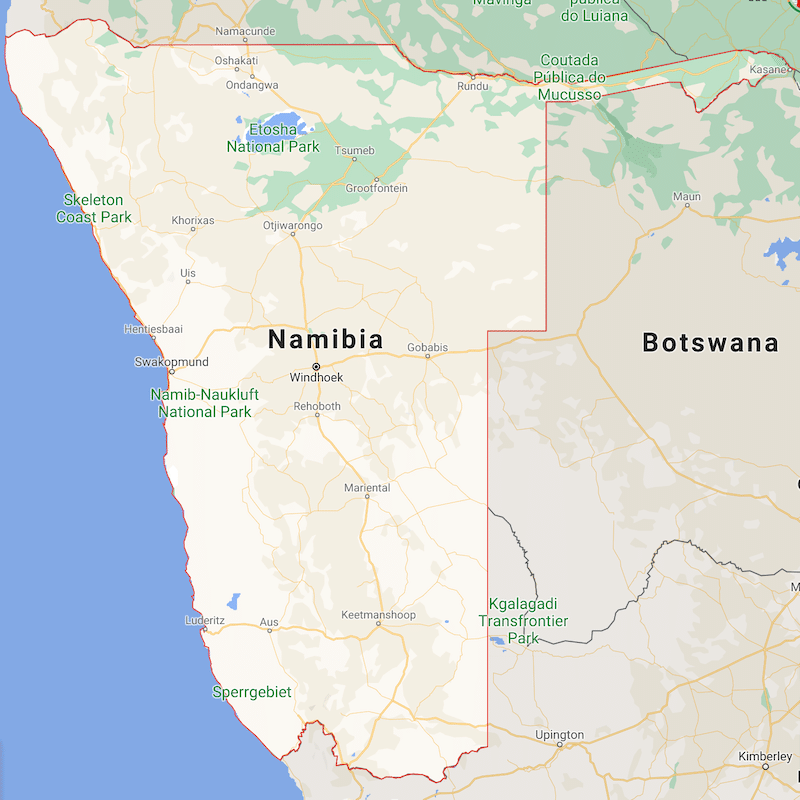
Click here for an interactive version of the above map.
Namibia Travel Guides
Looking for a great Namibia travel itinerary? Here you go!
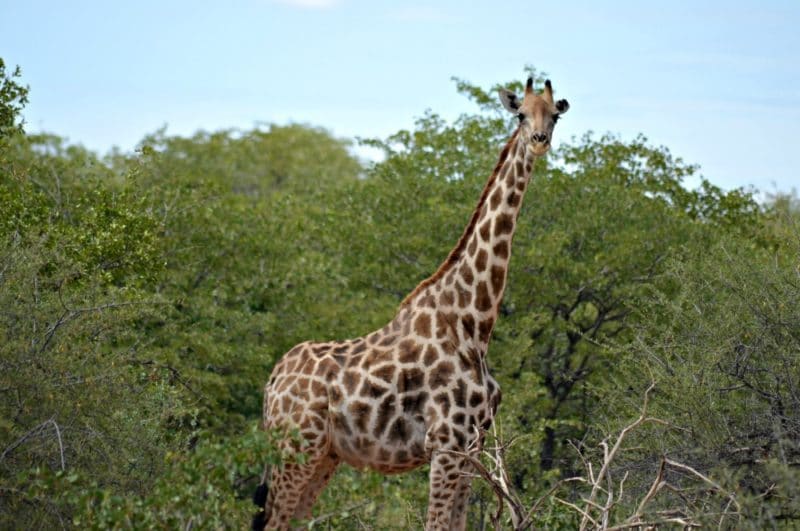
13 Highlights From A Trip To Namibia (Beyond Safari)
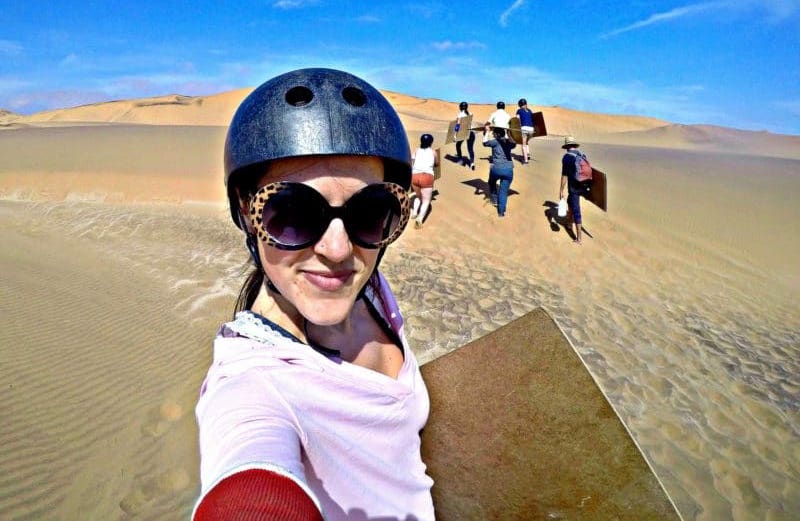
Namibia Adventure: Sandboarding In The World’s Oldest Desert

A Creepy But Beautiful Namibia Road Trip Along The Skeleton Coast
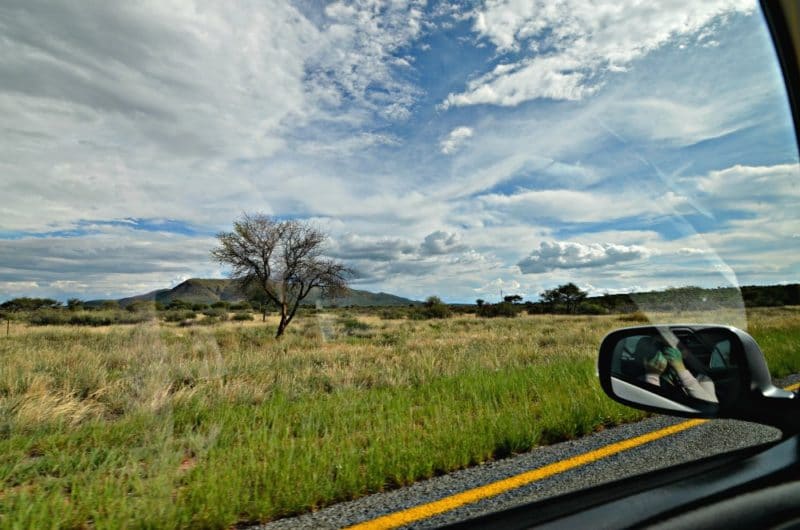
A Fascinating Journey From Windhoek To Swakopmund
Namibia Travel Advice
These Namibia travel tips will help you plan the perfect trip.
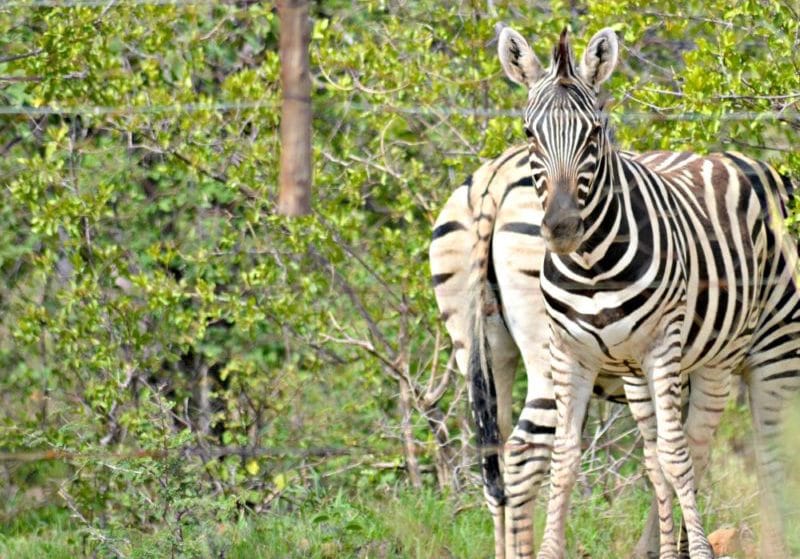
Africa Advice: 9 Essential Namibia Travel Tips
Namibia Travel Insurance
It doesn’t matter if you’re traveling solo or with a group on an Namibia tour. When visiting Namibia — or anywhere else in the world — make sure to get travel insurance.
In my opinion, the best travel medical insurance for travelers is SafetyWing as they’ve got a large network and offer both short-term and long-term coverage — including coverage if you’re traveling for months as well as limited coverage in your home country).
Additionally, SafetyWing is budget-friendly and offers $250,000 worth of coverage with just one low overall deductible of $250.
With coverage, you’ll have peace of mind as you embark on your Namibia itinerary.
Click my referral link here to price out travel insurance for your trip in just a few clicks .
Namibia Hotels
Click here to browse hotels in Namibia!
Prefer self-contained stays?
Click here to check out unique local rentals!
You can also use this map to search for local stays:
Renting A Car In Namibia
Need a rental car for your Namibia trip?
Use Discover Cars to quickly compare your car rental options.
Namibia Travel Guide FAQ
Below, find answers to frequently asked questions about traveling Namibia, Africa.
Q: Which countries need a visa to visit Namibia?
Citizens from many countries, including the United States, the United Kingdom, and Canada can visit Namibia visa-free. Citizens from other countries may be eligible for a visa on arrival in Namibia.
It’s recommended to view your country’s Namibia International Travel Information page for the most up-to-date information on entry and exit requirements — including visa information — for foreign citizens. You can also contact the Embassy of the Republic of Namibia.
Q: What are the top tourist attractions in Namibia?
Some of the most popular tourist attractions in Namibia are:
- Etosha National Park
- Sandboarding in Swakopmund
- Sossusvlei sand dunes
- The Skeleton Coast
- Spitzkoppe granite peaks
Q: How safe is it to travel in Namibia?
Namibia is an overall safe country to visit. Non-violent crime such as theft is something to be aware of, especially in the capital city of Windhoek.
One of the biggest safety threats in Namibia is dangerous roads. Driving at night is never recommended, due to poor visibility and animal crossings.
While most roads are well-maintained, secondary roads can be poorly maintained and hazardous.
Q: What is there to do in Swakopmund, Namibia?
There are so many things to do in Swakopmund ! Located in western Namibia, you can enjoy desert adventures, delicious German food, beautiful beaches and water sports, and more.
Q: Is it possible to drive from Namibia to Victoria Falls?
Driving from Namibia to Victoria Falls is possible, although from the capital Windhoek to the falls, it’s a distance of close to 900 miles (a 14.5 hour drive.)
Q: What is the best time of year to go to Namibia?
The best time to visit Namibia is from July to October. Temperatures are pleasant, and the chance for rain is low.
This is also the best time of year for wildlife encounters, making it the most popular time to visit Namibia.
Q: Do you need malaria pills for Namibia?
There are certain towns and places in Namibia where malaria pills are recommended, though it is best to speak with your doctor before embarking on your trip.
Additionally, it’s wise to always get travel insurance in case you get sick while traveling or something else unexpected occurs.
What information about the country would you add to this Namibia travel guide?

Local Recommendations from our My Guide Namibia team
Explore the world like locals.
- Experiences
My Guide to Namibia
What's on in namibia, experiences in namibia, car hire in namibia, accommodation in namibia, restaurants in namibia, safaris in namibia, hunting in namibia, things to do in namibia, wellness in namibia, transport in namibia, services in namibia, shopping in namibia, adventure in namibia, venues in namibia, nightlife in namibia, property in namibia, namibia travel guide, namibia regional info, namibia useful info.
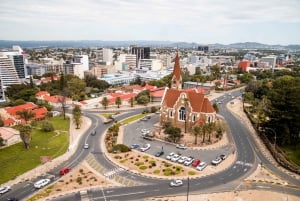
Windhoek: City and Township Tour
Join a guided tour of Windhoek and discover both sides of the city. View the historical highlights in Windhoek city, and get an overview of the Katutura Township.
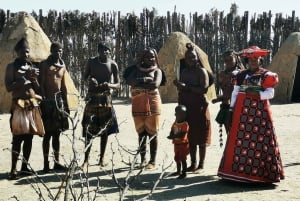
Walvis Bay: Mondesa Township Tour
Embark on an immersive tour of the Mondesa township and discover the unique culture, warmth, and friendliness of the locals. Travel around by bike and learn about the fascinating history of the township and its people, then cook traditional dishes.
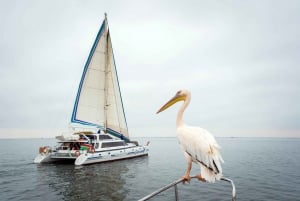
Walvis Bay: Marine Big 5 Luxury Catamaran Tour
Sail out on a catamaran and try to spot the ocean’s “Big 5”: whales, dolphins, mola mola, leatherback turtles and seals. Enjoy a relaxing morning at sea including refreshments and snacks.
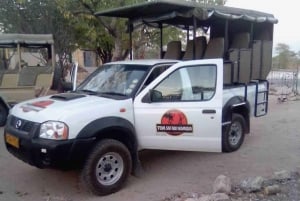
Etosha National Park: Full or Half-Day Game Drive
Experience the wildlife and scenery of this huge national park by an open vehicle on a classic safari tour - a paradise for any wildlife enthusiast. Try to catch a glimpse of elephants, lions, and other big game species native to Etosha National Park.
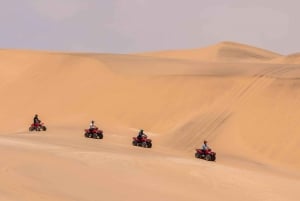
Swakopmund: Quad Biking in the Oldest Desert in the World
Experience the thrill of quad biking through the Namibian sand dunes.
Recommended Experiences in Namibia
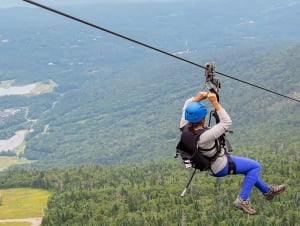
In a country where socializing is a daily must, expect to find some of the most peculiar waterholes amid the arid countryside during your travels. Consider a day tour or

Explorer Private Cycling Township Tours
On this guided cycling township tour visit interesting places, learn about local customs and Namibian culture. Meet the locals and interact with them as well as visiting a pre-school and local community.
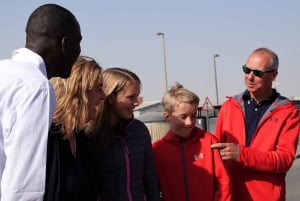
Swakopmund Cultural Township Private Day Tour
Explore different cultures and meet local people in the community of Mondesa with your local, personal tour guide. Get to know Namibia better and learn about the different tribes in Namibia from Ovambo, Damara, Herero, and the Ovahimba people.

Swakopmund: Quad Biking Explorer Tour
Experience a quad bike tour through the desert to explore the different plant and animal life. Learn all about the survival tactics of the creatures that call this desert a home.
Mini Guides
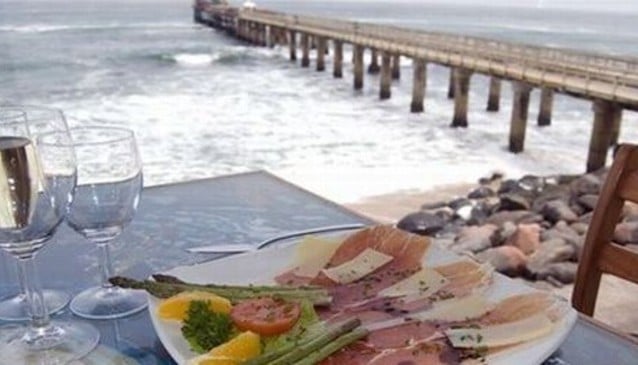
Namibia Restaurant Guide
Handpicked by a Local Expert

Best Safari Companies Namibia

Best Lodges in Namibia
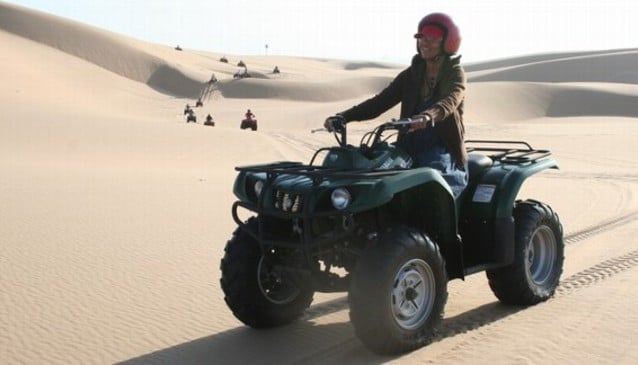

Best Things To Do in Namibia
Best restaurants in namibia.

Best Attractions in Namibia
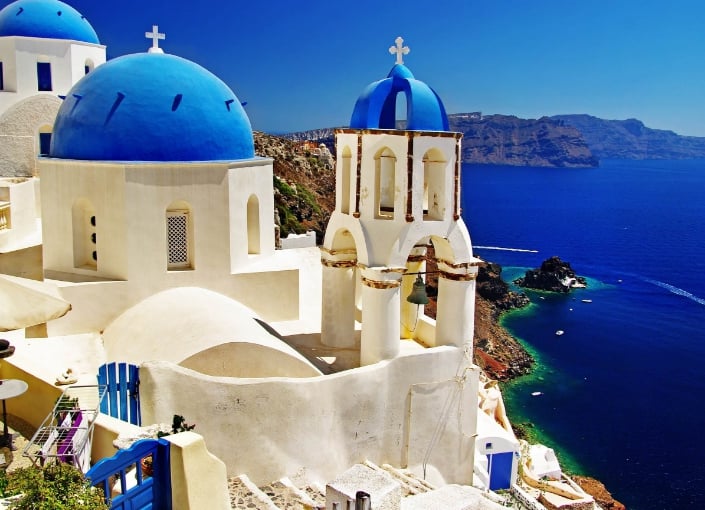
Best Travel Agents Namibia
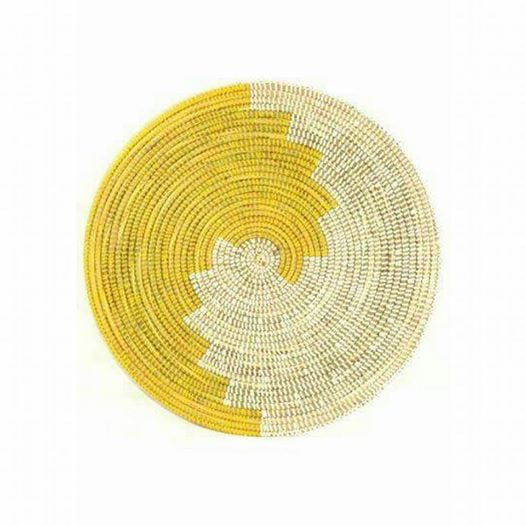
New Restaurants To Try
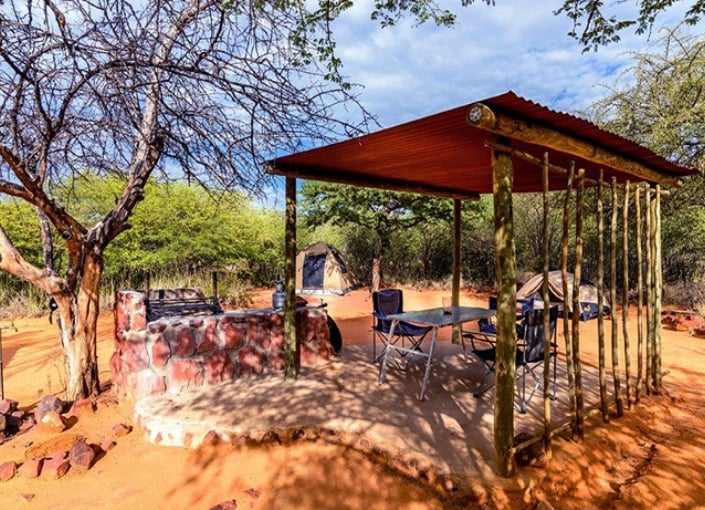
Create & Share your own Guide to Namibia with friends and family!
Add your recommended places to visit by browsing the website and pressing the icon.
Create your own guide of favourite 'must see' places
Earn your Local Expert badge by Sharing your guides with others
Get your guide seen by submitting it to the Mini Guides section
Local News & Articles
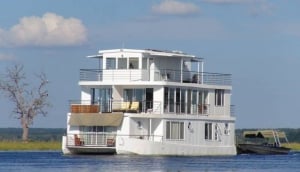
The Southern African Paradise...
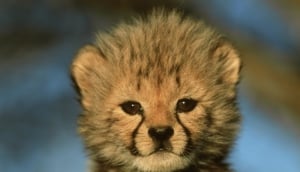
The Cheetah
Cheetahs in Namibia...
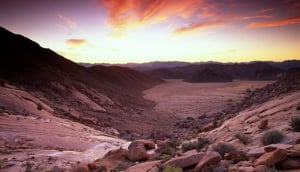
Ai-Ais Richtersveld Transfrontier Park
More than just a Fish River Canyon experience...
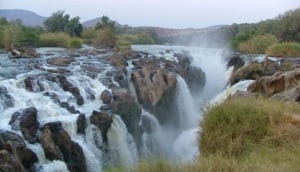
Epupa Falls
Namibia's own mini Victoria Falls...
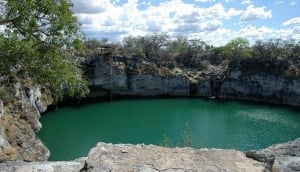
Lake otjikoto
Lake of mysteries...
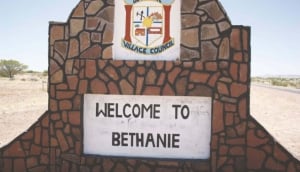
Namibia's oldest settlement...
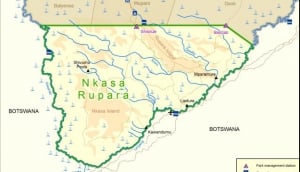
Nkasa Rupara National Park
Former Mamili National Park...
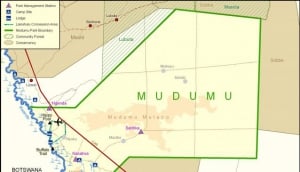
Mudumu National Park
A world of wonder...
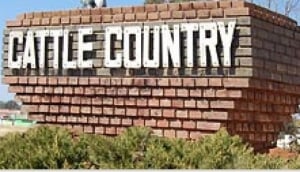
Namibia's little Texas...
Regional Guides
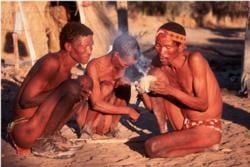
Bushmanland Area
Bushmanland is a vast and sparsely populated area located in the north eastern parts of Namibia, underneath the Caprivi Strip. Although not as lush as the more northern parts, the area does not lack i...

Caprivi Wetlands Area
The oddly shaped Caprivi Strip, previously known as Itenge, was so named after German Chancellor Leo von Caprivi who negotiated the acquisition of the land from the United Kingdom in 1890. The purpose...
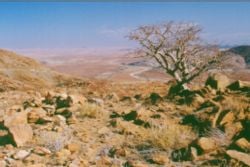
Central Mountains
Overview Namibia is well known for its wealth in flora and fauna, but also for its richness in geology. The Central Mountains lend a large contribution with beautiful granite features, intricate rock...
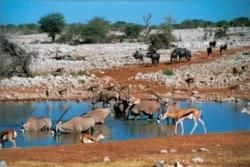
Etosha Area
The Etosha National Park is probably one of Southern Africa’s most well known and frequently visited parks. It stretches over an area of 22,270km² and combines an incredible 31 different ve...
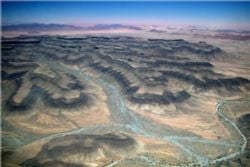
Fish River Canyon Area
The southern parts of Namibia are in stark contrast to the abundance of wildlife in the north. The focus lies more on scenery, of which the south can paint canvasses unlike any other in shades of vibr...
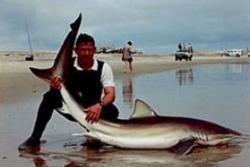
Henties Bay & Surroundings
The town of Henties Bay hugs the cold Altantic Ocean to the north of Swakopmund and carries the ambience of a fisherman’s haven. True to its humble beginnings, Henties Bay is a prime vacation sp...
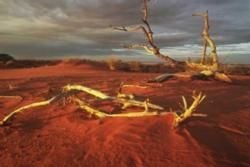
Kalahari Desert
The Kalahari Desert stretches across endless plains and paints the landscape in rusty reds, golden yellows and splatters of green. Rolling dunes dotted with patched of yellow grass gives new meaning t...
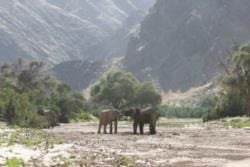
Kaokoland Area
Considered to be one of the last wild frontiers in the world, the Kaokoland is incredibly beautiful and the expanse of space including Damaraland, you find yourself in is vast and untamed. Contained w...
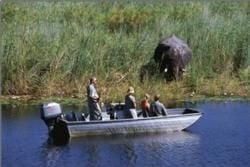
The mighty Okavango River has its origins deep in Angola where it is known as the Kubango River. It cuts deeply through the southern parts of Angola before turning south to snake through the northern ...
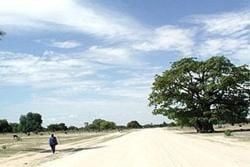
In the far reaches of the north of Namibia lies a beautiful stretch of land. Its atmosphere is that of stunning scenery, lush vegetation and true African culture. Dotted with tiny villages and wide op...
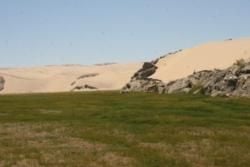
Skeleton Coast
Along the north western stretches of the wild Namib Desert lies a land of both wonder and danger. The infamous Skeleton Coast National Park stretches across 16,000km² of wild coast, endless horiz...
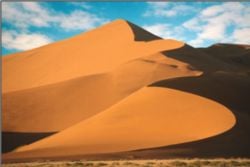
Sossusvlei Area
The beautiful undulating sand dunes of the Sossusvlei are one of the biggest attractions in Namibia and they further compound the image of Namibia as a largely desert country. Although the name is use...
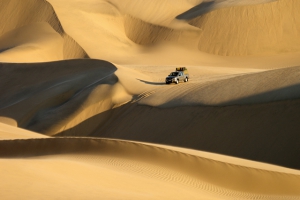
In Swakopmund, there's a wealth of experiences waiting to be discovered, from thrilling outdoor adventures to cultural exploration and relaxation by the sea. Here's a guide to what to s...
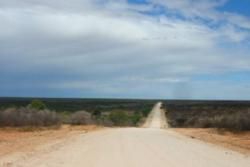
Tsumkwe can be considered one of the main towns of Bushmanland and is a hub of San activity. Although small in size, this little village offers passage to the Khaudum National Park from the south, don...
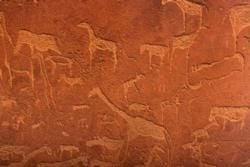
Twyfelfontein
In 1947 David Levin settled in the Damaraland area in order to farm the countryside. He noted several rock engravings and paintings on the stony outcrops surrounding a spring. The spring unfortunately...
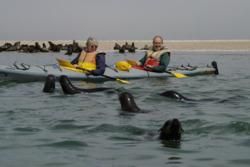
Walvis Bay is Namibia’s only deep water harbor and main hub of fishing activities and commercial sea trade. Its waters are rich with plankton and various species of fish, a favorite hunting grou...
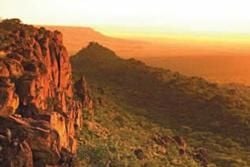
Waterberg Plateau
The Waterberg Plateau National Park was proclaimed in 1972 in an effort to safeguard wildlife populations from poachers. Stretching over 41,000 hectares the plateau houses some of Namibia’s rare...
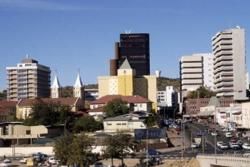
Rich In History As the capital city of , Windhoek is the economical and administrative hub of the country. With an estimated population of 300,000 people, the city has grown into a fully fledged metr...

We Are Part of the My Guide Network!
My Guide Namibia is part of the global My Guide Network of Online & Mobile travel guides.
We are now in 120+ Destinations and Growing. If you are interested in becoming a local travel partner and would like to find out more then click for more info about our Website Business Opportunity .
Nearby Destinations
- My Guide Johannesburg
- My Guide Zimbabwe
- My Guide Cape Town
- My Guide Garden Route
- My Guide Eastern Cape
- My Guide Zambia
- My Guide Botswana
- My Guide Durban
- My Guide Tanzania
Create New Guide
Login to create your guides for Namibia.
Add to My Guide
- Add to New Guide
No results found
- Accommodation
- Restaurants
- Things To Do
{[{item.label}]}
- {[{data.title}]}
Events in Namibia
Filter Events by Sub-Category
- This Weekend
- October 2024
Please select a Date first.

- [ April 26, 2024 ] Travel news: this month (April 2024) in luxury travel Travel news
- [ April 24, 2024 ] Review: Etihad A380 The Residence (Abu Dhabi to London flight) Flight reviews
- [ April 22, 2024 ] Top 10 best luxury hotels in Singapore Top 10 lists
- [ April 19, 2024 ] Sneak peek inside the new ultra-luxe Four Seasons Yachts Uncategorized
- [ April 17, 2024 ] Review: Etihad First Class Lounge at Abu Dhabi International Airport Flight reviews
Travel guide to Namibia
With endless red sand dunes set against a brilliant blue sky, the Southern African nation of Namibia stirs the spirit and moves the heart. Namibia is so large and sparsely populated that it is possible to discover enormous open spaces without roads, towns, trees or even stones, just the lonely desert wind passing through one of the most enchanting corners of the earth. The otherworldly landscapes, the world’s oldest desert, wild coastlines littered with shipwreck remains and whale bones, and unusual desert-adapted flora and fauna will capture the imagination of even the most seasoned traveler. It may not offer the big game of the more verdant African countries, but you’ll still find plenty of big game here. On top of that, Namibia is also home to a number of ultraluxe lodges, attracting discerning travelers from all over the world.
Get the most out of your (luxury) trip to Namibia with my travel guide. Find out more about:
- Best time to visit
- How to get there
- Travel requirements
- Getting around
- Inspiration, highlights, & travel tips
- Suggested itineraries
- Recommended luxury hotels (+ reviews)
TRAVEL GUIDE TO NAMIBIA: BEST TIME TO VISIT
Enjoying a dry climate, Namibia is considered a year-round travel destination. However, deciding on the best travel period really depends on which regions and attractions you will be traveling to and what your interests are. For example, the dry months in Namibia are best for outdoor activities as well as wildlife viewing in places such as Etosha National Park, whereas the rainy summer months are best for birdwatching and low hotel rates.
- In general, the dry winter season from May to October is the most popular time for travelers to visit Namibia: the skies are clear, the risk of malaria is at its lowest, and the day time temperatures aren’t too hot (although nights between June and August in the desert are freezing cold). In wildlife reserves such as Etosha National Park, the combination of sparse foliage and the lack of rain forces the game to congregate around waterholes, making animal spotting particularly easy.
- November to March are the hottest months in Namibia and temperatures in some regions can reach above 50 C° (122 F°) during the day. These months are also considered to be the rainy summer season , although many areas in Namibia receive little or no rain at all. During the wetter months, some tracks in the north eastern part of the country (known as the Caprivi strip) can become unsurpassable. These are the hardest months for spotting wildlife in parks such as Etosha and they also carry the highest risk of malaria.
TRAVEL GUIDE TO NAMIBIA: HOW TO GET THERE
Most travelers arrive in Namibia via Hosea Kutako International Airport, the main gateway for all destinations in the country (located a 45 min drive from the capital Windhoek). Several major airlines offer direct flights to Windhoek, including Eurowings, Lufthansa, Qatar Airways and Ethiopian Airlines. Click here for a continuously updated list of airlines that offer direct flights to Kigali.
It’s also possible to arrive in Namibia overland as part of a multi-country itinerary. Namibia is bordered by Botswana to the east, Angola and Zambia to the north and South Africa to the south. While visiting Angola is not on the bucket list of many tourist (due to high crime and an unstable security situation), many travelers combine Namibia, South Africa, Botswana and Zambia in one single holiday (often starting at Cape Town in South Africa and ending at the Victoria Falls in Zambia or vice versa).
Before you buy a plane ticket, consider reading my tips & tricks for buying the cheapest plane ticket .
TRAVEL GUIDE TO NAMIBIA: ENTRY REQUIREMENTS
Requirements for entry into Namibia differ from country to country, and are subject to change. Prior to departure, always check with your government and your nearest Namibian embassy or consulate what documents you need for travel to Namibia. Some important points:
- You need a valid passport . The passport must be valid for six months after entry into the country. Y ou need one blank page on your passport for entry stamps.
- Namibia introduced new immigration rules in 2016 relating to travel with children . In addition to valid passports, parents traveling with children (under 18) should at all times carry the original or certified copy of the unabridged birth certificate. The full unabridged birth certificate should list the child’s details and both parents’ details.
Make sure you read my 10 tips to plan a worry-free trip .
TRAVEL GUIDE TO NAMIBIA: GETTING AROUND
In order to reach most of Namibia’s National Parks, reserves and places of interest, you will need to rent a vehicle or charter a plane.
- The quickest and most comfortable way to get around in Namibia is by air travel . Dozens of minor airstrips cater for chartered plane and most of the isolated luxury lodges have their own landing strip. Flying will save you a lot of time. For example, getting from Sossusvlei to Damaraland will take two full days by car (with an overnight stop in Swakopmund) while it’s just two hours by plane. There are several good charter flight operators who regularly fly tourists between lodges, but it is best to ask the lodge(s) you’re staying at to advise on flights and book them for you, since many have agreements with particular charter operators. One example is Wilderness Safaris , which makes us of Wilderness Air (my experience with them was excellent).
- Most travelers will rent a car , which is the easiest and cheapest way of getting around the country. Namibia’s road network is comprised of high-quality tarred highways and secondary gravel roads. Although most road are generally navigable in a 2WD car, the majority of self-drive visitors rent a 4WD car: the higher clearance makes the ride more comfortable and 4WD cars are better equipped to tackle poor road conditions in the rainy season. Most lodges that demand 4WD access have a safe parking area for 2WD saloon cars, and will transfer guests in their own 4WD vehicles, usually at no extra cost. During my trip to Namibia, I rented a 4WD car from Asco Car Hire near Windhoek and was very happy with their service.
TRAVEL GUIDE TO NAMIBIA: INSPIRATION, HIGHLIGHTS & TRAVEL TIPS
There are many reasons why Namibia should be on your bucket list:
- Enjoying incredible views at the world’s 3rd largest canyon, the Fish River Canyon
- Visiting Kolfmanskop, a ghost town in the desert
- Spotting wildlife in Etosha National Park
- Exploring the dramatic scenery of Damaraland
- Climbing the dunes at Sossusvlei & Deadvlei
- Visiting the Skeleton Coast
- Soaring in a hot air balloon over the desert
The following, comprehensive articles may also inspire you and help you plan your holiday to Namibia:
- Top 10 best things to see & do in Namibia
- Top 10 best luxury hotels & lodges in Namibia
- Tips & tricks for getting the best deal at a luxury hotel
- Tips & tricks for buying the cheapest plane ticket
TRAVEL GUIDE TO NAMIBIA: SUGGESTED ITINERARIES
It’s impossible to suggest one itinerary for Namibia in this travel guide, but I hereby share with you a schedule based on my own holidays in Namibia, which is great if you want to see the country in a time frame of two weeks:
- Recommended hotel: Zannier Hotels Omaanda
- Recommended lodge: Zannier Hotels Sonop
- Recommended hotels: &Beyond Sossusvlei Desert Lodge or Little Kulala by Wilderness Safaris
- Recommended hotels: Strand Hotel , Giardino Boutique Hotel
- Recommended hotels: Damaraland Camp by Wilderness Safaris
- Recommended hotel: Hoanib Skeleton Coast by Wilderness Safaris
- Recommended hotel: Little Ongava
- Recommended hotel: Onguma The Fort
- Day 19 : drive (6 hours) or fly to Windhoek and return home
TRAVEL GUIDE TO NAMIBIA: RECOMMENDED HOTELS (+ REVIEWS)
I recommend to visit my top 10 list of the most fabulous hotels in Namibia if you are eager to know how I rank Namibia’s top hotels, based my own experience.
Below, you find my detailed reviews of hotels in Namibia (with pros, cons, & tips to save money per hotel).

*** Follow me on Instagram , YouTube , Twitter , and Facebook for a daily moment of travel inspiration ***
Share this:
- Click to share on Facebook (Opens in new window)
- Click to share on Twitter (Opens in new window)
- Click to share on WhatsApp (Opens in new window)
- Click to email a link to a friend (Opens in new window)
- Click to print (Opens in new window)
- Click to share on LinkedIn (Opens in new window)
- Click to share on Tumblr (Opens in new window)
- Click to share on Reddit (Opens in new window)
- Click to share on Telegram (Opens in new window)
- Click to share on Pinterest (Opens in new window)
Great content. Thanks for your post.
The sentence “Malaria at lowest” scared me!
As always, the most thorough lists and reviews I’ve read anywhere. Thank you for sharing your lux experiences with us in such detail.
Leave a Reply Cancel reply
This site uses Akismet to reduce spam. Learn how your comment data is processed .
© The Luxury Travel Expert 2024
- Destinations
- Africa & Middle East

- DESTINATIONS
- EXPERIENCES

Namibia Travel Guide: The Perfect Introduction to Africa
Welcome to my quick Namibia travel guide! I’m Anna – a free spirited world citizen with a massive passion to create. That’s me in a nutshell. Growing up in the center of Europe (Belgium) gave me a huge advantage to travel to many European countries.
Once I got really comfortable with stepping out of my comfort zone I was totally hooked. I was born in Poland, moved to Paris at the age of 18 and lived in Australia for a while. By travelling I discovered so much, not only about other cultures, but also about myself.
To me travel is the most important and timeless investment of knowledge you will ever find. Because let’s face it – is there truly anything more interesting and timeless than exploring the planet we are all coexisting on?
I wanted to visit Namibia because of the accomplished duo of photographers @helloemilie and @jasoncharleshill who actually inspired me to join them on their creative adventure. Namibia feels extremely peaceful and welcoming. It’s one of those off-the-beaten-track destinations where you can literally drive around for hours without seeing a single soul.
The only sound you’ll hear all day is one of your tires hitting the coarse gravel roads. Sounds adventurous, right? Did you know that Namibia is the second least densely populated country in the world with the biggest and oldest sand dunes? I think that’s a very good selling point.
No to mention the rock formations and pristine beaches Namibia has to offer. With almost zero light pollution you will also get the opportunity to enjoy the milky way in the most spectacular way possible.
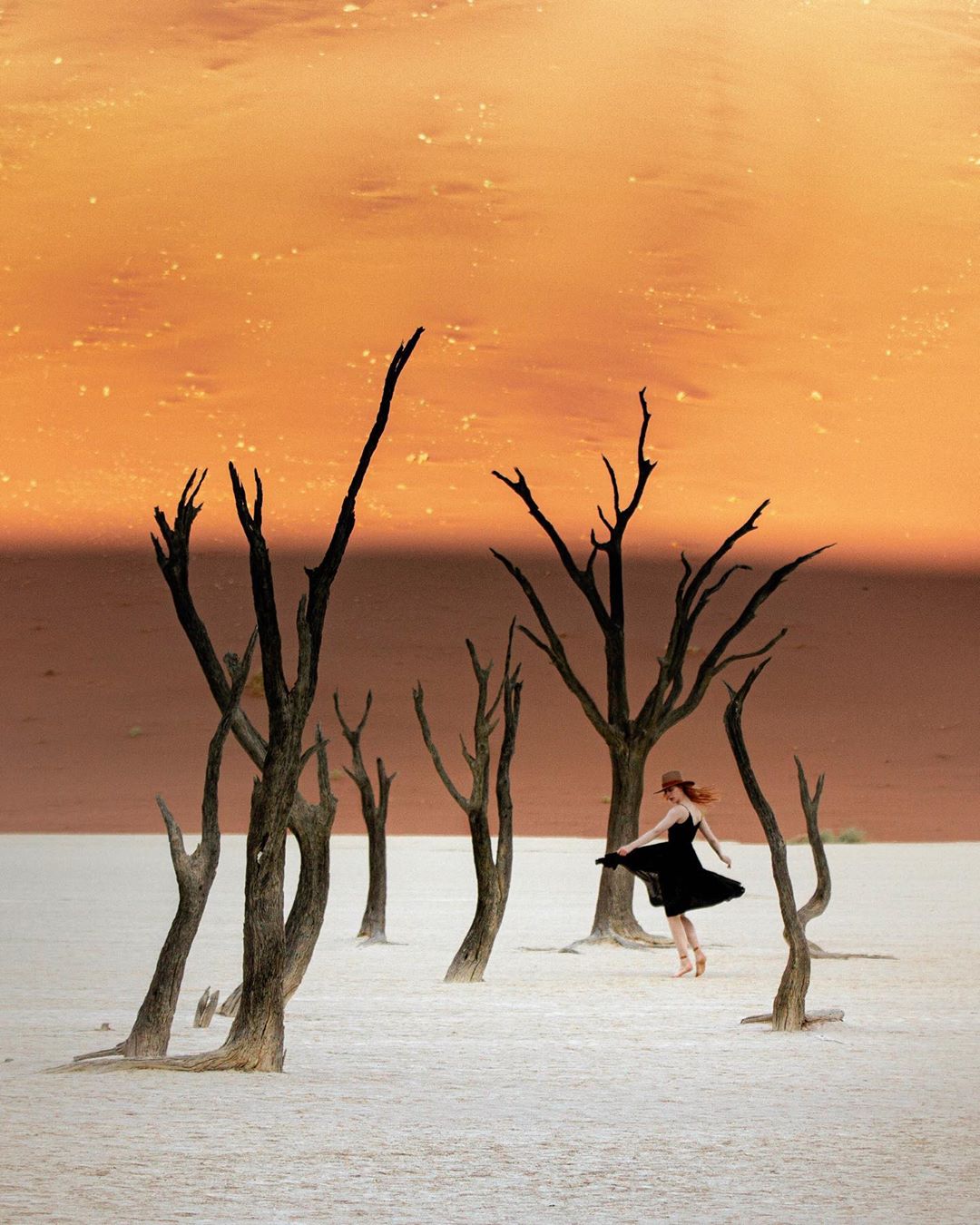
Namibia Travel Guide: My 10 Day Journey
My 10 day journey kicked off in Namib Naukluft National Park where I got the chance to explore the Sossusvlei including the famous sand dunes. Brace yourself: Sossusvlei is waaay better in real life. Pictures don’t do it justice. It’s hard to comprehend that places like this actually exist.
After a few nights of camping and being woken up by a group of hungry jackals (yikes!) in Sesriem Camp, I visited Swakopmund . This colonial looking gem is nested right between the desert and the sea. It homes a fair amount of flamingos, fresh fish restaurants and seaside promenades. A fantastic, more luxurious place to spend a night or two.
Spitzkoppe, my next destination, showed me a completely different scenario. The 20 million year old massive granite peaks are called ‘The Matterhorn of Namibia’ for a reason. Dramatic, screensaver worthy views guaranteed!
Now, Namibia truly ‘had me’ at wild life. The game drives started in Hobatere at the Etosha National Park . If you haven’t done a safari before, you’re in for a real treat. Picture twenty (if not more!) elephants gathered at the waterhole during sunset or a mama lion feeding three baby cubs. It’s an image straight out of a children’s story book.
One of Namibia’s most cherished attractions are the Twyfelfontein rock engravings found in Damaraland. I found it very interesting to learn more about the ancient tribes and their history while visiting the open air museum.
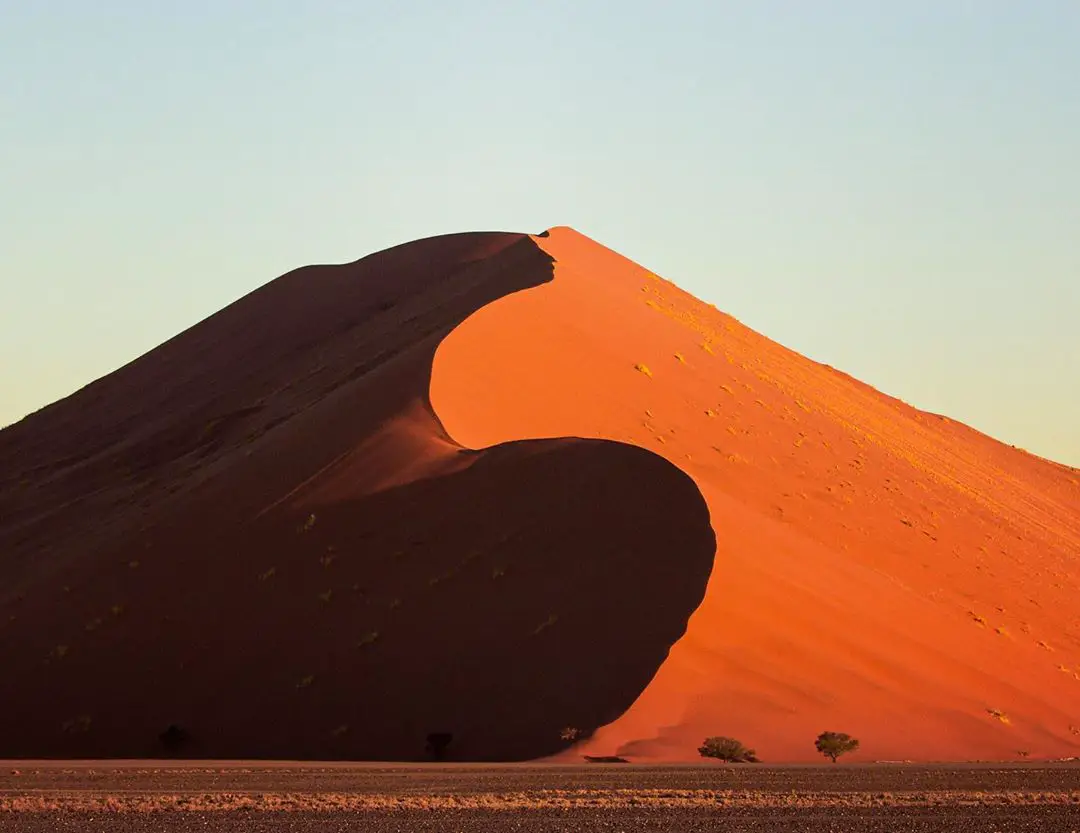
Favourite Places and Memories on this Journey
Sossusvlei is photography wise the most magical place I have ever seen. I was fortunate enough to experience it for two days and to photograph the dead trees during sunrise, sunset and midday. The light and temperature changes by the hour, creating the most versatile setting to shoot pictures.
By the end of my trip I got to see the place from a helicopter and was literally blown away by its beauty. I would say Sossusvlei along with Spitzkoppe and Etosha National Park are definitely the most memorable places I have visited in Namibia. I highly recommend all three!
My favorite memory of Namibia was meeting the Himba tribe . One of our tour guides grew up in the tribe and introduced us to his family. Talking to the women in particular truly opened my eyes and made me refresh some important key values in life. We need to stop stressing ourselves out by our fast paced and commerce based lifestyles.
The Himba-people clearly live in the now. They don’t possess much but they also don’t pollute their minds by worrying about it. They thrive on human connection and live in harmony with nature. The present lifestyle of the tribe is such an inspiration for all of us. I loved hanging out with them.
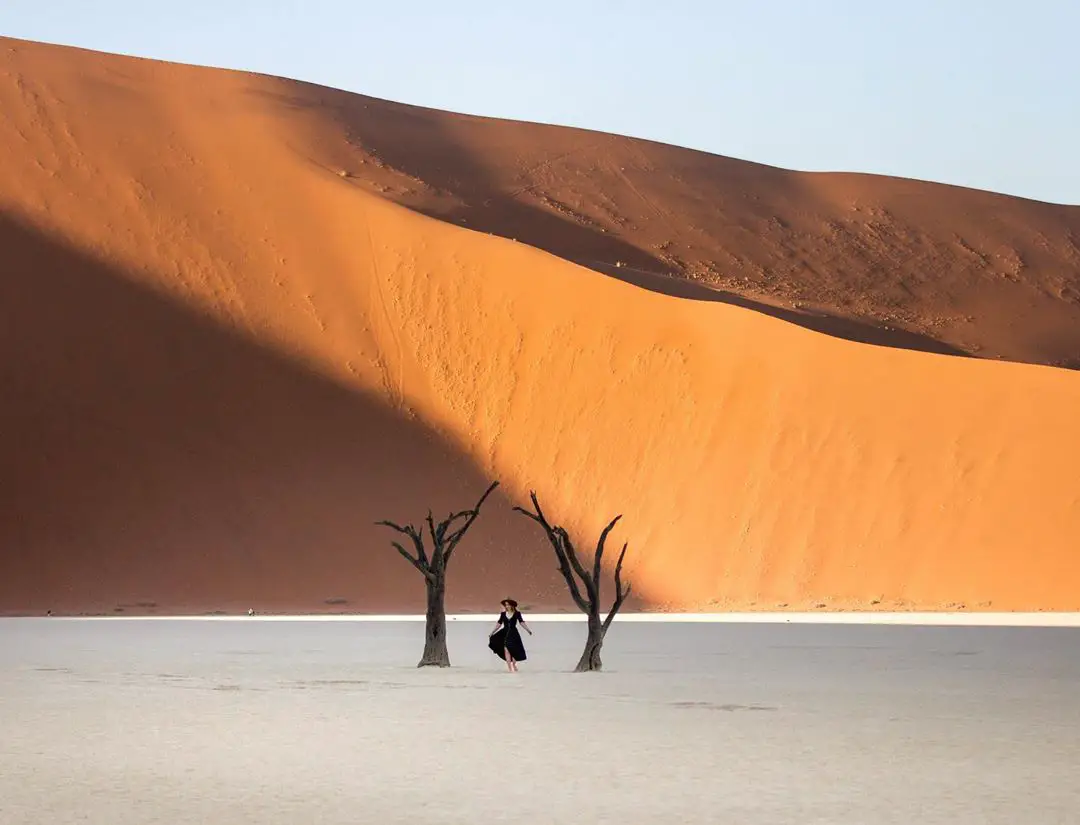
The Amazing People of Namibia
Although many Namibians view tourism as their only source of income, they don’t come across as too pushy. On the contrary, the locals take pride in truly delivering outstanding handcrafted (art) work and show genuine gratitude for those who appreciate it.
I have seen a huge contrast in Namibia. The good and the bad, a lot of poverty and sorrow but also a lot of abundance, joy and compassion. Corny as it sounds, it’s always the little moments that stick.
It’s our tour guide carefully storing our leftovers to share with a local farmer. That little boy in a ripped Emirates-Tee smiling from ear to ear after being gifted pencils or a random student at the airport kindly offering me her bag of skittles ‘because your flight got delayed and I wanted to cheer you up.’ It’s been a rollercoaster of emotions and endless gratitude!
Namibia Travel Guide: Key Tips to Remember
Make sure you bring enough layers. It was freezing in the mornings and super hot during the day. For some weird reason my lips were dry all the time, so stacking up on lip balm is not a bad idea.
If you’re bringing your camera gear, make sure you can clean it too. The fine sand and dust can damage your lens and camera sensor. Drones are only allowed in some parts of Namibia, so make sure you do some research before you fly one up. Renting a 4×4 with a removable roof top is a great way to explore this versatile destination.
Thanks for reading my travel guide on Namibia. I hope it has inspired you to visit Africa one day soon!
BY ANNA SMOREK IG: @THEBLISSHUNTER THEBLISSHUNTER.COM
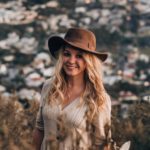
Author: Anna Smorek
Just a girl following her bliss. Make music, not war!
Related posts

Leave a Reply Cancel reply
Your email address will not be published. Required fields are marked *
Save my name, email, and website in this browser for the next time I comment.
Post comment
Travel experiences
Accommodation.
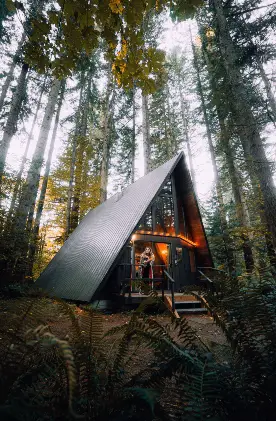
Beaches & Islands
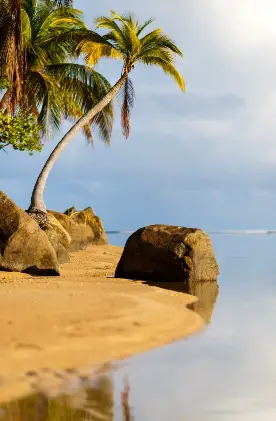
Food & Drink
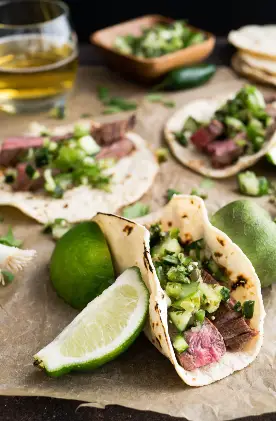
Historical Sites

Living Abroad
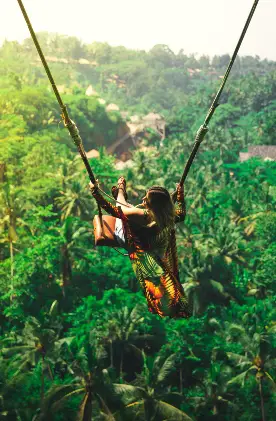
National Parks
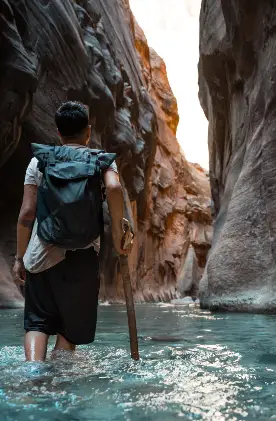
Towns & Villages
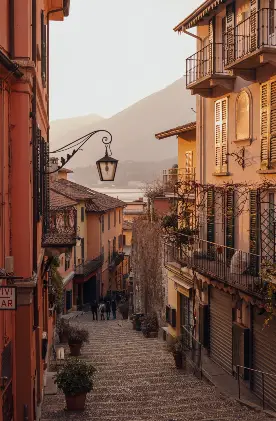
Travel Tips
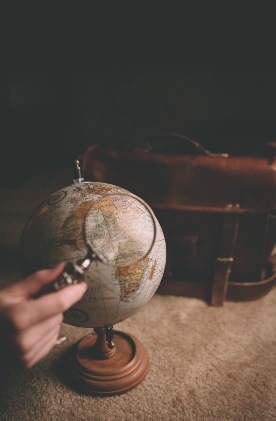
Sign up to our newsletter
Namibia Travel Guide
Popular destinations, san francisco, new york city.
- Terms of Use
- Privacy Policy
- Your US State Privacy Rights
- Children's Online Privacy Policy
- Interest-Based Ads
- About Nielsen Measurement
- Do Not Sell or Share My Personal Information
- Nat Geo Home
- Attend a Live Event
- Book a Trip
- Inspire Your Kids
- Shop Nat Geo
- Visit the D.C. Museum
- Learn About Our Impact
- Support Our Mission
- Advertise With Us
- Customer Service
- Renew Subscription
- Manage Your Subscription
- Work at Nat Geo
- Sign Up for Our Newsletters
- Contribute to Protect the Planet
Copyright © 1996-2015 National Geographic Society Copyright © 2015-2024 National Geographic Partners, LLC. All rights reserved
- You are here:
- Countries & Parks
- Namibia Travel Guide

Namibia Travel Guide Namibia
- Parks & Reserves
Best Time To Visit
Weather & climate.
- Popular Routes
- Getting There
- Malaria & Vaccinations
Overview – Namibia

Anthony is a renowned Africa expert and author of many Lonely Planet guidebooks, including the 'Botswana & Namibia' guide.
Anthony is a renowned Africa expert and author of the 'Botswana & Namibia' Lonely Planet guide.
Anthony is the author of the 'Botswana & Namibia' Lonely Planet guide.
Namibia is characterized by its desert habitat. The harsh environment forms a magnificent backdrop for a different kind of safari. Animal populations are smaller, but sightings in this sparse setting tend to be rewarding. Not to be missed is Etosha Pan, the largest salt pan in Africa and a seasonal wildlife magnet.

Pros & Cons
- Excellent waterhole-based wildlife viewing at Etosha
- Long coastline with marine animals, such as seal colonies
- Good infrastructure and excellent self-drive safari options
- High-end and budget safaris
- Low population and vast undeveloped areas
- Highly photogenic scenery and colors
- Desert habitat doesn't support high animal densities
- Not a great destination to see big cats
Namibia Safari Reviews
- Expert Rating 4.4 /5 – 17 Reviews
- User Rating 4.8 /5 – 205 Reviews
The open, arid landscape of Namibia doesn’t support animals in great numbers, but you’ll certainly have no trouble seeing the ones that do live here. These include plenty of wildebeest , zebra, lion and elephant, with large groups congregating in Etosha. The country is particularly good for seeing cheetah, which are widespread, while the more elusive black rhino and brown hyena confine themselves to coastal locations.
- More about the wildlife
A subtropical desert climate is the norm in Namibian parks. In the winter (May to October), this means barely any rain and afternoon temperatures that usually stay below 28°C/82°F. The rain finally arrives a few months into summer (November to April), accompanied by humidity, and fierce heat in the desert areas that approaches 40°C/104°F.
- More about the weather and climate
The sunny, virtually cloudless days of the Dry season (May to October) are a very pleasant time to visit. Although from June to August it can get very chilly overnight and in the early morning. The Dry season also happens to be the best time for wildlife watching, as animals gather around any water and are easy to find.
- More about the best time to visit
Premier Parks & Reserves
- Etosha – Classic safari
- Namib-Naukluft – Scenery, animals scarce
- Skeleton Coast – Scenery and marine wildlife
- All 13 Namibia Parks & Reserves
Want To Visit Namibia?
159 Namibia Safaris
- Namibia Budget Safaris
- Namibia Luxury Safaris
- Namibia Self-Drive Safaris
- Tour Operators for Namibia
Most Helpful Expert Review

Emma is an award-winning travel writer for Rough Guides, National Geographic Traveller, Travel Africa magazine and The Independent.
A place to bond with the desert and marvel at the stars
It’s rare for travellers to return from Namibia with anything other than glowing praise. I’m always impressed by the spacious drama of its desert landscapes, where oryx pick their way over towering, apricot-coloured dunes or stare out...
Full Review
Latest User Review
Beautiful country, people and nature.
We saw amazing sceneries, from deserts to ocean, from savanna to mountains, insane wildlife including rhinos fighting, leopards and all the expected animals and more! The roads were excellent, the lodges had character and luxury and the...
Safari Tours to Namibia

14-Day Namibia Flying Safari
$18,646 to $27,407 pp (USD)
Namibia: Private tour Luxury Lodge & Tented Camp
You Visit: Windhoek (Start) , N/a'an ku sê (Wildlife Sanctuary) , Kulala, Skeleton Coast NP, Kaokoland, Etosha NP, Windhoek (End)
Wayfairer Travel
4.9 /5 – 149 Reviews

3-Day Etosha Guided Camping Safari
$850 pp (USD)
Namibia: Shared tour (max 6 people per vehicle) Budget Camping
You Visit: Windhoek (Start) , Etosha NP, Windhoek (End)
People Tours And Safari
5.0 /5 – 25 Reviews

14-Day Namibia Breathtaking Adventure Tour
$5,720 to $5,940 pp (USD)
Namibia: Private tour Mid-range Lodge & Tented Camp
You Visit: Windhoek (Start) , Kalahari Desert, Sossusvlei (Sand Dunes) , Namib-Naukluft NP (Namib Desert) , Swakopmund (City) , Twyfelfontein (Rock Art) , Damaraland, Kunene Region, Epupa Falls (Kaokoland) , Western Etosha, Etosha NP, Eastern Etosha, Erindi GR, Hosea Kutako Airport (End)
Kubwa Five Safaris
5.0 /5 – 122 Reviews
Our local experts can design your trip based on your preferences
Warning - You are using an outdated browser. Please upgrade your browser to properly view this website.

- Destinations
- Africa middle east
- Travel guide
Namibia travel guide
Named for the ancient desert that stretches the length of its Atlantic coast and dominated by thousands of square miles of sand and rock, Namibia has a landscape that is always extreme.

Introduction to Namibia
What can explain the harmony that prevails in Namibia today, given that the population consists of at least 11 major ethnic groupings and an even greater variety of languages? The reason may be that – despite a century of ruthless colonialism, decades of apartheid and a bitter struggle for independence – the majority of ordinary people always stood together, working and suffering as one, mingling on farms and in small towns, sharing the bitter and the sweet.
The Europeans conquered Africa with their languages, religions, education, technology and agricultural know-how, but a barrier of deep mistrust remained between the indigenous inhabitants and their conquerors. As one might expect, 23 years of occupation by apartheid South Africa singularly failed to resolve the situation – yet the independence struggles of the 1970s and 1980s somehow managed to bring white and black Namibians together.
The Namibians
Namibia’s population is as varied as its landscape: colourful and rich in different languages and lifestyles. The peoples of this thinly populated expanse of land – which ranges from the river landscapes of the Caprivi Strip, through dry forests and savannahs, to the deserts along the Atlantic – have been compared to a colourful carpet, with fringes that reach deep into the countries around it. This young country combines a palette of peoples and tribes in a geographical area whose borders were drawn through tribal lands between 1884 and 1890 to suit the interests of colonial powers. As a result, many peoples were thrown together in what was to develop into the modern state of Namibia.
Today the country possesses a political system based on sound democratic principles, with great regard for the origins, language, culture, religion and political convictions of all its peoples. And the bonhomie that has taken root among the people of Namibia is readily communicated to visitors, too.
Namibia's landscape
Shimmering expanses of white at Etosha Pan, apricot and coral dunes in the Namib desert, verdant waterways of the Caprivi, empty, bleached beaches along the Skeleton Coast, barren terracotta mountains in Damaraland, ochre rock faces of the Fish River Canyon and cloudless azure skies all paint vivid, lasting impressions of the Namibian landscape. The country is big, raw, wild and often bleak. There’s an overwhelming feeling of space, timelessness and distant horizons. It’s a desert land of extremes, where even during the winter months, between April and October, temperatures are known to regularly soar to 30°C (86°F) during the middle of the day, dropping to near freezing at night.
Wildlife viewing against this backdrop is a very different experience from other safari destinations in Africa. What makes Namibia particularly special is the number of large mammals found in a desert environment, and the fact that the animals are not restricted to designated parks.
Average customers rating

{{_ "pagesAdmin.destinations.overviewCulturalFeaturesIn"}} {{currentName}}
{{_ "pagesAdmin.destinations.overviewViewAllFeatures"}} {{currentName}}
{{_ "pagesAdmin.destinations.overviewHistoricalHighlights"}} {{currentName}}
{{_ "pagesAdmin.destinations.overviewViewAllHighlights"}} {{currentName}}
Places to visit in Namibia
- Etosha national park
- The skeleton coast
See all places in Namibia
Read more from the travel guide to Namibia
- Top attractions
- Plan your trip

- South Africa
- Namibia Tours and Safaris
- Botswana Tours
- Kenya Tours
- South Africa Tours
- Tanzania Tours
- Uganda Tours
- Zambia Tours
- Zimbabwe Tours
- Multi-Country Tours
- GROUP TOURS
- SHUTTLE TRANSPORT
- EXPERIENCES
Namibia Travel Guide
Namibia is a barren land as if it were another world, but it is inviting and strangely familiar. It is a paradise for photographers – a land of contrasts and clear colors. Those who are looking for peace and stillness and enjoy mesmerizing landscapes and wide desert expanses are going to fall in love with Namibia, one of the least populated countries in the world. Namibia is Africa at its best, with friendly, natural people, endless savannah and bushland. It is also home to an amazing selection of wild animals, protected in the vast Etosha National Park and other smaller nature reserves and ranches. Namibia is an adventure, but one doesn’t need to be an adventurer to experience this country.
Before you set out to explore Namibia, it’s a good idea to acquaint yourself with some basic facts and information to navigate this vast land. Our destination experts have put together all the essentials for you in our Namibia travel guide .
Visa and entry
The Namibian Government requires all visitors to have at least three full blank pages in their passports upon arrival into the country and also that your passport be valid for at least six months beyond the intended date of departure from Namibia. Documents that prove onward travel are also required. Citizens of USA, UK and Australia may enter the country without a visa for a period of 90 days.
Health information
Malaria is encountered mainly in the northern parts of the country. It is important to bear in mind that malaria may be contracted despite chemoprophylaxis, especially in areas where chloroquine resistance has been reported. Both chloroquine-resistant and normal strains of malaria are prevalent in Africa. Malaria transmission is at its highest during the warmer and wetter months of November to April. From May to October the risks of acquiring malaria are reduced. There is also less prevalence of Malaria in remote areas where our camps are situated.
It is very important that you drink plenty of water, especially during the warmer months. It is generally recommended that your drink at least two to three liters of water per day to limit the effects of dehydration. This excludes tea, coffee, and alcoholic beverages, which act as diuretics and therefore can actually contribute to dehydration.
If you are on an overland tour, please exercise caution when crossing river beds and camping during the summer months as flash floods can occur from the sporadic rain. It is perfectly safe to travel by road at this time, though a 4×4 or vehicle with high ground clearance is recommended. The rest of the year is dry and cloudless.
Currency and cards
The currency in Namibia is called the Namibian Dollar (N$) , which is fixed and therefore equivalent to the South African Rand (ZAR). The Namibian Dollar and South African Rand are the only legal tender in Namibia and can be used freely to purchase goods and services. The Namibian Dollar, however, is not legal tender in South Africa. You can carry an unlimited amount of foreign currency and Travellers’ Checks with you and the latter can be exchanged at any commercial bank throughout the country.
International Visa and MasterCard are generally accepted throughout Namibia. Safari camps, however, are mostly unable to accept American Express cards. Credit cards are not accepted at some gas stations either.
Do bear in mind that ATM frauds have recently increased in larger Namibian cities. We advise you to settle your bills via credit or debit cards whenever possible.
Communication
Namibia has a fully developed modern mobile network that works in the bigger towns. We advise our guests to obtain a local SIM card on arrival at the airport from an MTC shop. MTC has the widest network coverage across Namibia.
Namibia Emergency Hotlines
Namibia Police Emergency: +264 (61) 10111
Fire Brigade (ambulance, accidents, and injuries): +264 (61) 211 111
Most hotels offer internet and/or WiFi services to guests (usually subject to a charge). Many airports, restaurants, cafés, and shopping centers offer WiFi. Broadband internet is slower than in Europe.
Driving around Namibia
In Namibia one drives on the left-hand side of the road. The speed limit is usually 60 km/h in urban areas, 80 km/h on gravel roads, 40 to 60 km/h in national parks and private reserves, and 120 km/h on the main highways. Safety belts must be used at all times. The driver or any authorized co-driver must produce a valid unendorsed driver’s license at the time of rental. The driving license must be in English and must include a photo. Otherwise, an international driving license will be required.
Avoid driving long distances at night or at twilight, because wild animals crossing the road are a real threat in Namibia. Most of the farms are fenced, but kudu can easily jump over two-meter-high fences.
Namibian roads are generally in good condition and well-maintained. Please make sure to fuel up at each town and always keep a full tank since there aren’t many fuel stations on the highways between destinations.
Travel in all national parks requires a permit, which can either be obtained at the gate or at a MET (Ministry of Environment and Tourism) office in the closest town – these include Dorob (Swakopmund MET or Sesriem), Namib Naukluft (Swakopmund MET or Sesriem), Sossusvlei (Sesriem), Etosha (at the gate), southern Skeleton Coast (at the gate), Fish River Canyon (at the gate) and Khaudum (gate). The process requires that you complete a form and pay an additional fee.
Planning a trip to Namibia ? Our destination experts are happy to share further information and plan a private and obligation-free itinerary for you.
Frequently Asked Questions
What is the best safari in namibia.
That depends entirely on what you want to see. There are three obvious areas in Namibia that all offer epic wildlife experiences. Etosha National Park, in the north of the country, covers a whopping 22,000km² and is dominated by the Pan which was formerly an ancient lake. The scarcity of water attracts all manner of species including elephant, rhino, lion, giraffe and gemsbok. A good strategy is to find a good waterhole and just sit and watch what happens. Another option is Damaraland, a perpetually surprising landscape of red rock mountains interspersed with some pretty tenacious vegetation where desert-adapted elephant, rhino and lion roam. S
No trip to Namibia is complete without a venture into the dunes of the Namib Desert. Huge orange waves of sand as far as the eye can see, the Namib dune-fields hug the Atlantic coast south of Walvis Bay. The landscape may appear harsh, but there are plenty of creatures that call this otherworldly place home, each with their own wonderful adaptations for dealing with the lack of water, high winds and unfriendliness of the elements.
WHAT IS THE BEST WAY OF EXPLORING NAMIBIA?
Namibia specialises in breathtakingly creative desert lodges where you can eat outdoors and sleep under a blanket of stars. Connect the best of these lodges using scheduled light aircraft flights and you add an extraordinary dimension that you will never forget – the colours, patterns and contrasts of the desert take on a whole different dimension when seen from above.
Alternatively, head off grid for a few days on a mobile safari. Expert guides and comfortable vehicles make the long days fascinating. Simple, comfortable camps set up in virgin spots every couple of days mean that each new day will bring fresh adventure and new territory to explore.
One of the finest things about a mobile safari is the random places you’ll stop off for a leg-stretch and coffee served on the bonnet, or have an impromptu picnic under a tree with not a single other human in sight. Namibia’s vast emptiness presents an ideal opportunity to get out and roam without the need for a permanent base or a structured time-table.
IS NAMIBIA A GOOD FAMILY SAFARI DESTINATION?
Travelling to Namibia with your family is an outstanding way to spend quality time with your children. As a family, we recommend climbing behind the wheel of your own 4×4 and taking to Namibia’s vast empty roads. Prepare for scenery so stunning and roads so endless that you won’t believe your eyes. Pull into beautifully run desert lodges by night where you’ll eat beautifully prepared food while the children marvel at the pollution-free night skies. Climb dunes and run back down them, drive the Skeleton Coast, track desert elephant and more.
IS A SELF DRIVE THE BEST WAY TO TRAVEL NAMIBIA?
Namibia is an easy-to-travel-destination when it comes to transport, with self-drive and fly in both being options.
Namibia has a fantastic infrastructure and well signposted roads making it perfect for a self-drive safari. Distances can be quite far between destinations, meaning you have time to absorb your surroundings in your own time and you drive on the left hand side of the road, the same as the UK and Australia. We love self-drive safaris in Namibia, so much in fact that our Managing Director, Will Bolsover, did one for his honeymoon!
Another of our favourite ways to travel is a fly-in safari. Our fly-in safari over the Skeleton Coast is a thrilling way to experience this stark and unique land. Flying between camps each day, you have amazing views each day before staying at some rustic camps with your ‘flight-mates’.
You can also travel via charter plane and luxury train.
WHAT IS THE WEATHER LIKE IN NAMIBIA?
Namibia has a very favourable climate, averaging 300 days of sunshine each year.
Summers (October to March) can be very hot with temperatures reaching 35C, but this also the rainy season so a lightweight rainproof jacket is very useful. Winter days, during April to September, are agreeably warm but temperatures can plummet to below zero at night so warm clothing is essential.
Proceed Booking
Already a member.
Username or E-mail
Forget Password?
Don't have an account? Create one.
Or continue as guest.
WhatsApp uns
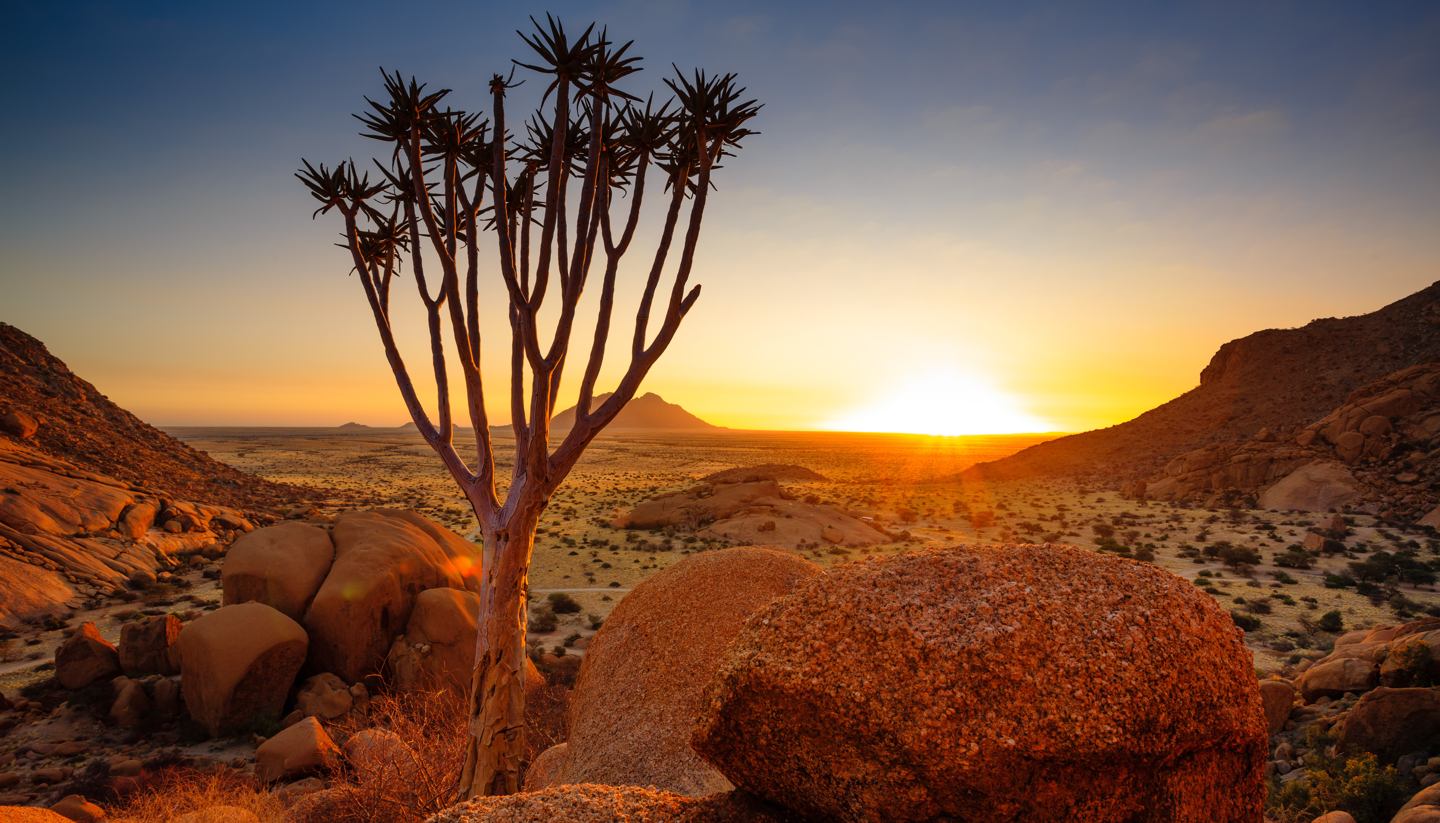
Introducing Namibia
About namibia.
- Images of Namibia
- History, language & culture
- Weather & geography
- Doing business & staying in touch
Plan your trip
- Travel to Namibia
- Where to stay
While you’re there
- Things to see & do
- Shopping & nightlife
- Food & drink
- Getting around
Before you go
- Passport & visa
- Public Holidays
- Money & duty free
Book your flights
Namibia travel guide
From the seemingly endless sand dunes of the Namib Desert to the tropical wetlands of the Caprivi Strip, Namibia is a country of epic landscapes, bountiful wildlife and few people. Its greatest assets are the rugged Namib and Kalahari deserts, which support a surprising diversity of fauna including rare black rhinos, cheetahs, and vast groups of gemsbok, zebra and ostrich.
Parts of Namibia can be harsh and unforgiving, and nowhere is this more evident than along the Skeleton Coast. Shrouded in thick fog, lashed by Atlantic waves, occupied by shifting dunes, and littered with rusting carcasses of ships ran aground on its shores, this area certainly makes travellers feel like they are far removed from civilisation.
Away from the dreamscape of sand and rock, the wildlife-rich Etosha National Park is another must-see. During the dry season, herds of wildebeest and dazzles of zebras congregate at waterholes scattered around the park, while predators wait patiently for a chance to pounce – the dramatic scenes of pursuit offer unforgettable experiences.
Other worth-noting national parks are Ai-Ais in the south and Khaudum in the northeast. The former is home to the Fish River Canyon, Africa's largest canyon, while the latter welcomes more elephants than people to the park.
Namibia's capital is Windhoek, a vibrant, modern city perching on the Khomas Highland in central Namibia. Its colonial architecture, thriving culinary scene and excellent beer make it a pleasant place to while away a few days.
On the whole, Namibia is delightfully wild and unspoilt, offering plenty of off-the-beaten-track destinations for travellers to experience the ultimate safari adventure, capture stunning landscape shots, and above all, find quiet and solitude.
824,292 sq km (318,261 sq miles).
2,494,530 (2021).
3 per sq km.
President Nangolo Mbumba since 2024.
Prime Minister Saara Kuugongelwa-Amadhila since 2015.
Travel Advice
The Foreign, Commonwealth & Development Office ( FCDO ) provides advice about risks of travel to help British nationals make informed decisions. Find out more about FCDO travel advice .
Before you travel
No travel can be guaranteed safe. Read all the advice in this guide and any specific travel advice that applies to you:
- women travellers
- disabled travellers
LGBT+ travellers
Follow and contact FCDO travel on Twitter , Facebook and Instagram . You can also sign up to get email notifications when this advice is updated.
Travel insurance
If you choose to travel, research your destinations and get appropriate travel insurance . Insurance should cover your itinerary, planned activities and expenses in an emergency.
This advice reflects the UK government’s understanding of current rules for people travelling on a full ‘British citizen’ passport from the UK, for the most common types of travel.
The authorities in Namibia set and enforce entry rules. If you’re not sure how these requirements apply to you, contact the Namibian High Commission in the UK .
COVID-19 rules
There are no COVID-19 testing or vaccination requirements for travellers entering Namibia.
Passport validity requirements
To enter Namibia, your passport must have an ‘expiry date’ at least 6 months after the date you arrive. It must also have at least one blank page. If you’re travelling to South Africa, you will need an additional 2 blank pages.
Check with your travel provider that your passport and other travel documents meet requirements. Renew your passport if you need to.
You will be denied entry if you do not have a valid travel document or try to use a passport that has been reported lost or stolen.
Visa requirements
You can visit Namibia for up to 90 days without a visa. If you plan to work or volunteer, or if you want to stay longer, you must get a visa.
Applying for a visa
Apply through the Namibian High Commission in the UK .
Make sure you get your passport stamped.
Make sure the date on your entry stamp and the amount of time you have been given to stay is correct. Immigration officials will check these details when you leave Namibia.
The Namibian authorities could detain, arrest or fine you if you overstay or have an incorrect or missing entry stamp in your passport.
Travelling with children aged 17 and under
If you’re a parent travelling with children aged 17 and under, you must carry their:
- valid passport
- full birth certificate with both parents’ details (original or certified copy)
Namibian immigration officials will not accept an abridged (short) birth certificate. If your child was born in the UK, you can order a full unabridged birth certificate online .
If you’re a legal guardian and your name is not on the birth certificate, you will need to have documentation to prove it.
If you’re not a parent or legal guardian of children you’re travelling with, you must have an affidavit from their parents or guardians giving consent.
If a child is travelling with one parent or legal guardian, the other parent or legal guardian should give consent for travel in an affidavit.
Unaccompanied children must carry:
- a valid passport
- proof of consent from a parent or legal guardian in an affidavit
- a letter from their host giving the address where they’ll be staying
Contact the Namibian High Commission in the UK for more information.
Travelling with children through a South African airport
If you’re travelling with children through a South African airport, see South Africa travel advice for information about the documents you must carry.
Vaccination requirements
At least 8 weeks before your trip, check the vaccinations and certificates you need in TravelHealthPro’s Namibia guide .
Depending on your circumstances, this may include a yellow fever certificate.
Customs rules
There are strict rules about goods you can take into or out of Namibia . You must declare anything that may be prohibited or subject to tax or duty.
There is a high threat of terrorist attack globally affecting UK interests and British nationals, including from groups and individuals who view the UK and British nationals as targets. Stay aware of your surroundings at all times.
UK Counter Terrorism Policing has information and advice on staying safe abroad and what to do in the event of a terrorist attack. Find out how to reduce your risk from terrorism while abroad .
Terrorism in Namibia
Although there’s no recent history of terrorism in Namibia, attacks cannot be ruled out.
Political situation
Following the death of President Geingob on 4 February, FCDO would encourage that you be alert and considerate as Namibia is in a period of national mourning until the day of his funeral, 25 February.
Protecting yourself and your belongings
Muggers often target tourists in Windhoek. Attacks may be violent and can take place at any time of day and in busy city-centre locations. To reduce your personal risk:
- be aware of your surroundings, especially after dark
- keep your valuables and cash out of sight or use a hotel safe
- do not change large sums of money in busy public areas
Vehicle crime
Gangs sometimes try to enter vehicles at busy intersections in Windhoek. Theft from vehicles, particularly at service stations, is common. To reduce the risks:
- do not leave your vehicle unattended at fuel stops
- keep car doors locked and windows shut, especially in heavy traffic
- keep valuables off the seats and out of sight
To reduce the risk of robberies from taxis:
- do not hail taxis from the street, particularly in Windhoek
- ask your hotel, guest house or tour operator to recommend a reputable taxi company
- do not enter townships at night, unless you are with someone with local knowledge
Credit card skimming
There have been cases of credit card skimming at some hotels and lodges. Always keep your card in sight when paying and check your statement.
Laws and cultural differences
Personal id.
Always carry UK photo ID. You may need to show ID at police checkpoints in Windhoek and other major towns and cities. Keep copies of the photo page of your passport and important documents separately in a safe place.
Same-sex relationships are not illegal in Namibia. Certain same-sex sexual acts are illegal, but generally not prosecuted. There are no laws against discrimination on the grounds of sexual orientation. Conservative attitudes towards LGBT+ individuals remain, especially in rural regions. Showing affection in public may result in unwanted attention.
Read more advice for LGBT+ travellers .
Illegal drugs and prison sentences
Penalties for using or smuggling illegal drugs can be severe. Penalties include large fines and imprisonment.
Wildlife, animal products and souvenirs
It’s illegal to buy, sell, kill or capture any protected wild animal or trade its parts without a licence. You will be prosecuted and could get a fine or prison sentence for buying or trafficking these goods, including ivory and rhino horn.
Using cameras in secure areas
Police have detained people for taking pictures of the President’s official residence. Check before taking photographs of government buildings or in secure areas.
Outdoor activities and adventure tourism
Make sure your travel insurance covers you for any adventure activities you plan to do, like quad biking, dune boarding or hot air ballooning.
Transport risks
Road travel.
If you are planning to drive in Namibia, see information on driving abroad .
You’ll need to have both the 1949 version of the international driving permit ( IDP ) and your UK photocard driving licence with you in the car.
Take out comprehensive insurance as accidents are common on gravel and dirt roads. If you’re planning to hire a car, check what insurance cover is provided. Most policies will not cover accidents that do not involve other vehicles or animals.
Driving standards
During the rainy season from January to April, many gravel roads deteriorate. You should:
- not go faster than 80 km/h
- carry 2 spare tyres for punctures
- carry plenty of water
- check the road conditions before setting off
- avoid driving at night outside towns, as wildlife and livestock are serious hazards
Before you travel check that:
- your destination can provide the healthcare you may need
- you have appropriate travel insurance for local treatment or unexpected medical evacuation
This is particularly important if you have a health condition or are pregnant.
Emergency medical number
Call 211111 (in Windhoek) or 10111 (everywhere else) and ask for an ambulance.
Contact your insurance company promptly if you’re referred to a medical facility for treatment.
Vaccinations and health risks
At least 8 weeks before your trip check:
- the latest information on vaccination recommendations and health risks in TravelHealthPro’s Namibia guide
- where to get vaccines and whether you have to pay on the NHS travel vaccinations page
Altitude sickness is a risk in parts of Namibia. Read more about altitude sickness on TravelHealthPro .
Namibia’s hot and dry climate can cause skin problems and dehydration. Make sure you carry a good supply of drinkable water.
Namibia has one of the highest prevalence rates of HIV in the world. In 2021 the UNAIDS Report on the Global AIDS Epidemic estimated that around 210,000 adults aged 15 or over were living with HIV. This was around 11.8% of the adult population, compared to around 0.2% of adults in the UK. Take normal precautions to avoid exposure to HIV/AIDS.
The legal status and regulation of some medicines prescribed or bought in the UK can be different in other countries.
Read best practice when travelling with medicines on TravelHealthPro .
The NHS has information on whether you can take your medicine abroad .
Healthcare facilities in Namibia
There are good medical facilities in Windhoek. Private hospitals may insist on payment before starting treatment even if you have comprehensive travel insurance. They may ask you to pay and reclaim from your insurer later. Some travel insurance policies are not recognised by some Namibian hospitals. Check if your product is accepted in Namibia before you travel and get alternative coverage, if needed.
FCDO has a list of medical providers in Namibia where some staff speak English.
Travel and mental health
Read FCDO guidance on travel and mental health . There is also mental health guidance on TravelHealthPro .
The Foreign, Commonwealth & Development Office ( FCDO ) cannot provide tailored advice for individual trips. Read this travel advice and carry out your own research before deciding whether to travel.
Emergency services in Namibia
Telephone: 10111, 999, 112 (ambulance, fire, police)
Contact your travel provider and insurer
Contact your travel provider and your insurer if you are involved in a serious incident or emergency abroad. They will tell you if they can help and what you need to do.
Refunds and changes to travel
For refunds or changes to travel, contact your travel provider. You may also be able to make a claim through insurance. However, insurers usually require you to talk to your travel provider first.
Find out more about changing or cancelling travel plans , including:
- where to get advice if you are in a dispute with a provider
- how to access previous versions of travel advice to support a claim
Support from FCDO
FCDO has guidance on staying safe and what to do if you need help or support abroad, including:
- finding English-speaking lawyers and funeral directors
- being arrested or imprisoned in Namibia
- getting help if you’re a victim of crime
- what to do if you’re in hospital
- if you’re affected by a crisis , such as a terrorist attack
Contacting FCDO
Follow and contact FCDO travel on Twitter , Facebook and Instagram . You can also sign up to get email notifications when this travel advice is updated.
You can also contact FCDO online .
Help abroad in an emergency
If you’re in Namibia and you need emergency help from the UK government, contact the British High Commission in Windhoek.
FCDO in London
You can call FCDO in London if you need urgent help because something has happened to a friend or relative abroad.
Telephone: 020 7008 5000 (24 hours)
Find out about call charges
Risk information for British companies
The Overseas Business Risk service offers information and advice for British companies operating overseas on how to manage political, economic, and business security-related risks.

Book a Hotel
© Columbus Travel Media Ltd. All rights reserved 2024

IMAGES
COMMENTS
You can hit up the Namibian desert for sand dune climbing at sunrise. There are beaches and coastlines full of shipwrecks to explore. The darkest skies in the world are in Namibia, so the Milky Way is always shining brightly above your head at night. Oh, and there's a ghost town in the middle of the desert. Badass.
Our Namibia travel tips guide has you covered, including everything from what to see and do, where to stay, how to get around safely, and how to prepare for your trip. The mountainous red/orange dunes of Sossusvlei, the stark and perilous Skeleton Coast, the moonscapes of Spitzkoppe, the incredible wildlife viewing in Etosha, the deep valleys ...
Here's everything you need to know about getting a tourist visa to travel to Namibia. Activities. 9 of the best things to do in Namibia with kids. Oct 25, 2023 • 6 min read. Festivals & Events. The best times to visit Namibia for hiking, wildlife and more. Oct 23, 2023 • 4 min read.
Explore Namibia on this epic, 10-day self drive trip. Highlights include the Namib, an ancient desert with towering dunes, dramatic mountains and colonial architecture at the waterfront. Additionally, you will visit the Himba people, discover Etosha National Park and more. view trip ⤍. 14 days / from6555 USD.
Plugs: The plugs in Namibia are type D and M. The standard voltage is 220 V, and the frequency is 50 Hz. I recommend buying a universal adapter that has surge protection and using a converter for hair dryers and hot tools. Safety: In my opinion, Namibia is one of the safest countries in Africa. It's politically stable and has a low crime rate.
Namibia Travel Planning Guide. When to Go Namibia has 300 days of sunshine a year and each season has its unique qualities, so there really is no bad time to visit! Summers (Jan-March) are hot and fairly damp with average maximum temperatures around 25-35°C (77-95°F) and average minima
The Best Ways to Get Around Namibia Getting to Namibia: Flights: There are 8 airports in Namibia, but the Hosea Kutako International Airport is the main airport to fly into and is 28 miles from the capital of Windhoek.You can check for the best flights to Namibia on Skyscanner.. Transportation: Buses: Buses come in two main forms: the minibuses that go throughout towns or long-distance buses ...
In our opinion, the best and most cost effective to travel through Namibia is via a self-drive safari and camping. Not only do you have the freedom to do what you want, you can also stay at any of the thousands of aforementioned campsites. It's a far easier option, especially during the super busy peak season.
Discover the wonders of the land of endless horizons with this travel guide to Namibia. From vital information needed to plan your trip, accommodation options, details on destinations across the country and inspiring travel ideas. Namibia is a one-of-a-kind tourism experience. From breathtaking landscapes and diverse wildlife to rich culture ...
1. Etosha National Park: One of the best game reserves in Africa, Etosha, in northern Namibia, is home to all kinds of wildlife, from some of Africa's largest elephants to rare black-faced impalas. Sightings of leopards and lions are almost guaranteed. 2. Swakopmund: Both a picturesque, seaside town with German, colonial-era architecture and ...
Travel Guide on Best-Time to Visit, Must-See Places, Must-Do Things, Must-Try Food, Local Language for Travellers, Local Cultures and Safety. ... Namibia, a land of stark, breathtaking beauty, offers a one-of-a-kind travel experience for adventurers and nature enthusiasts. This southwestern African nation boasts vast deserts, rugged mountains ...
FCDO travel advice for Namibia. Includes safety and security, insurance, entry requirements and legal differences. ... Guidance and regulation. Detailed guidance, regulations and rules.
Along with safaris in destinations like Etosha National Park, Namibia is full of adventures like sandboarding in the desert, visiting Fish River Canyon, and hitting the beach in Swakopmund. Keep reading to dive into a Namibia travel guide that will help you plan an incredible trip. Note: This guide to Namibia travel contains affiliate links to ...
Sun 21st Apr, 2024 Namibia , Mondesa. Embark on an immersive tour of the Mondesa township and discover the unique culture, warmth, and friendliness of the locals. Travel around by bike and learn about the fascinating history of the township and its people, then cook traditional dishes. FEATURED.
TRAVEL GUIDE TO NAMIBIA: INSPIRATION, HIGHLIGHTS & TRAVEL TIPS. There are many reasons why Namibia should be on your bucket list: Enjoying incredible views at the world's 3rd largest canyon, the Fish River Canyon. Visiting Kolfmanskop, a ghost town in the desert. Spotting wildlife in Etosha National Park.
Caprivi Strip, Namibia: The Complete Guide. The 8 Best Tourist Attractions in Namibia. Photograph the massive red dunes in the Namib Desert, search for shipwrecks on the Skeleton Coast, observe an endangered black rhino at a waterhole in Etosha National Park, and hike Africa's largest gorge, Fish River Canyon.
The 20 million year old massive granite peaks are called 'The Matterhorn of Namibia' for a reason. Dramatic, screensaver worthy views guaranteed! Now, Namibia truly 'had me' at wild life. The game drives started in Hobatere at the Etosha National Park. If you haven't done a safari before, you're in for a real treat.
Desert hikes and camping on a budget safari in Namibia Desert hikes and camping on a budget safari in Namibia Photo story: a portrait of Namibia's Kunene region, home to desert wildlife and star ...
Animal populations are smaller, but sightings in this sparse setting tend to be rewarding. Not to be missed is Etosha Pan, the largest salt pan in Africa and a seasonal wildlife magnet. Watch Video. View Photos (50) Open Map. Rates (USD) $198 to $1,264 pp/day. Best Time To Go June to October (All parks) High Season July to October (Etosha gets ...
Namibia travel guide. Named for the ancient desert that stretches the length of its Atlantic coast and dominated by thousands of square miles of sand and rock, Namibia has a landscape that is always extreme. Deserted mining town, Kolmanskop. Namibians in Swakopmund. Fish River Canyon.
For those wanting to visiting Namibia, Sossusvlei is unmissableand we recommend staying at least two days. Here's our comprehensive guide to this wonder of the natural world, Sossusvlei, and Sesriem. Sossusvlei Essentials. 1. Visit Deadvlei & Hiddenvlei. 2. Climb the dunes. 3.
It is perfectly safe to travel by road at this time, though a 4×4 or vehicle with high ground clearance is recommended. The rest of the year is dry and cloudless. Currency and cards. The currency in Namibia is called the Namibian Dollar (N$), which is fixed and therefore equivalent to the South African Rand (ZAR).
Namibia travel guide. About Namibia. From the seemingly endless sand dunes of the Namib Desert to the tropical wetlands of the Caprivi Strip, Namibia is a country of epic landscapes, bountiful wildlife and few people. Its greatest assets are the rugged Namib and Kalahari deserts, which support a surprising diversity of fauna including rare ...